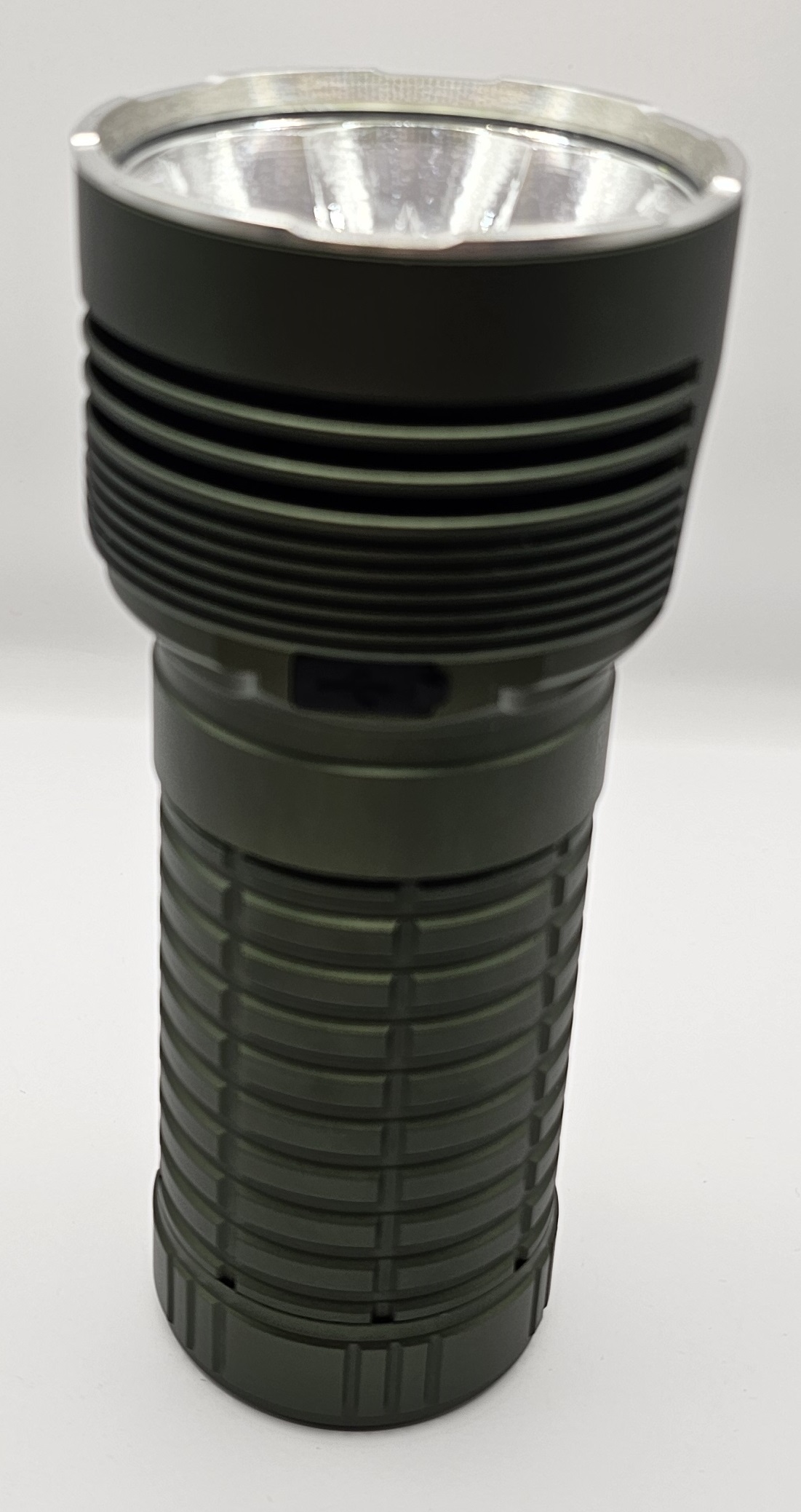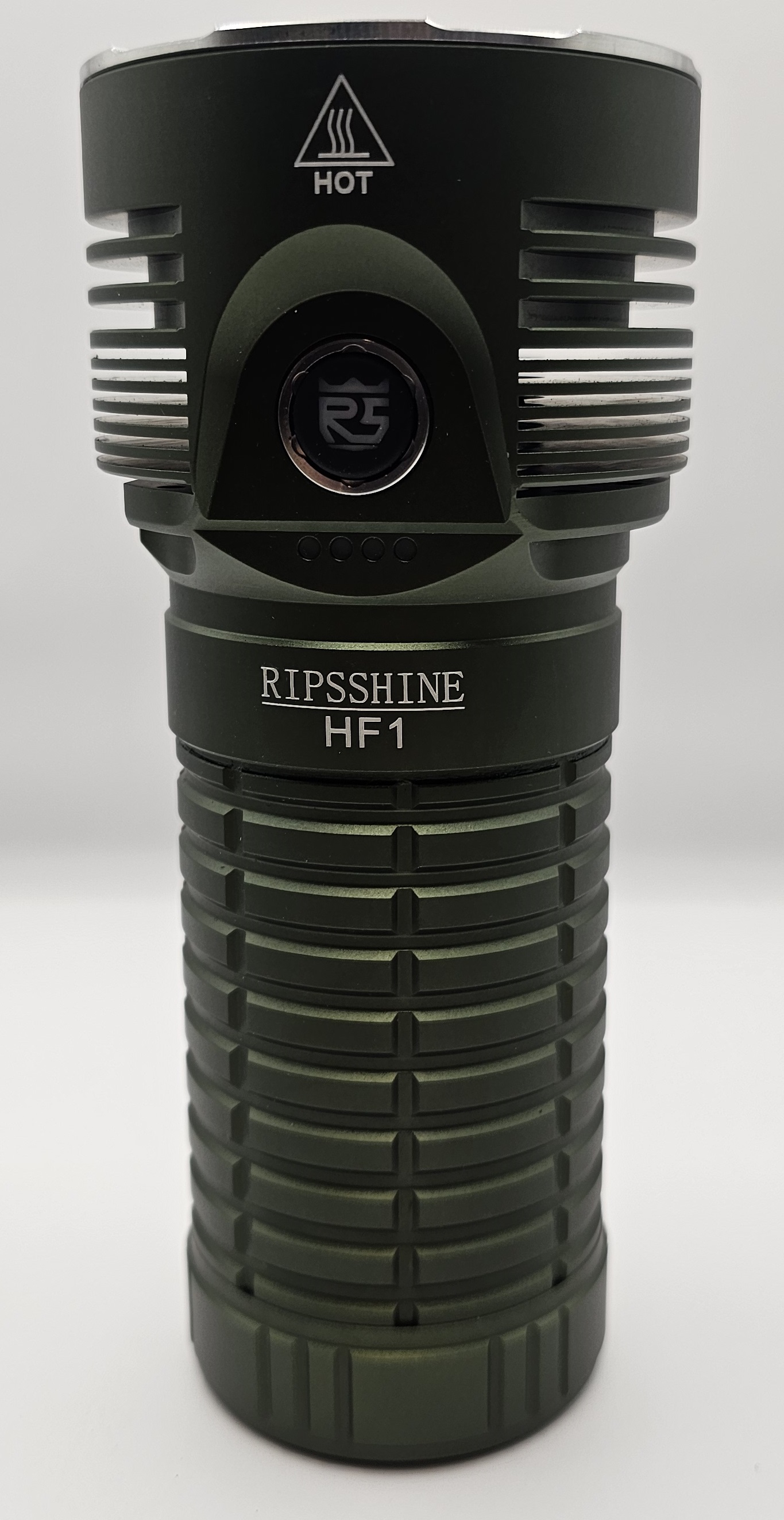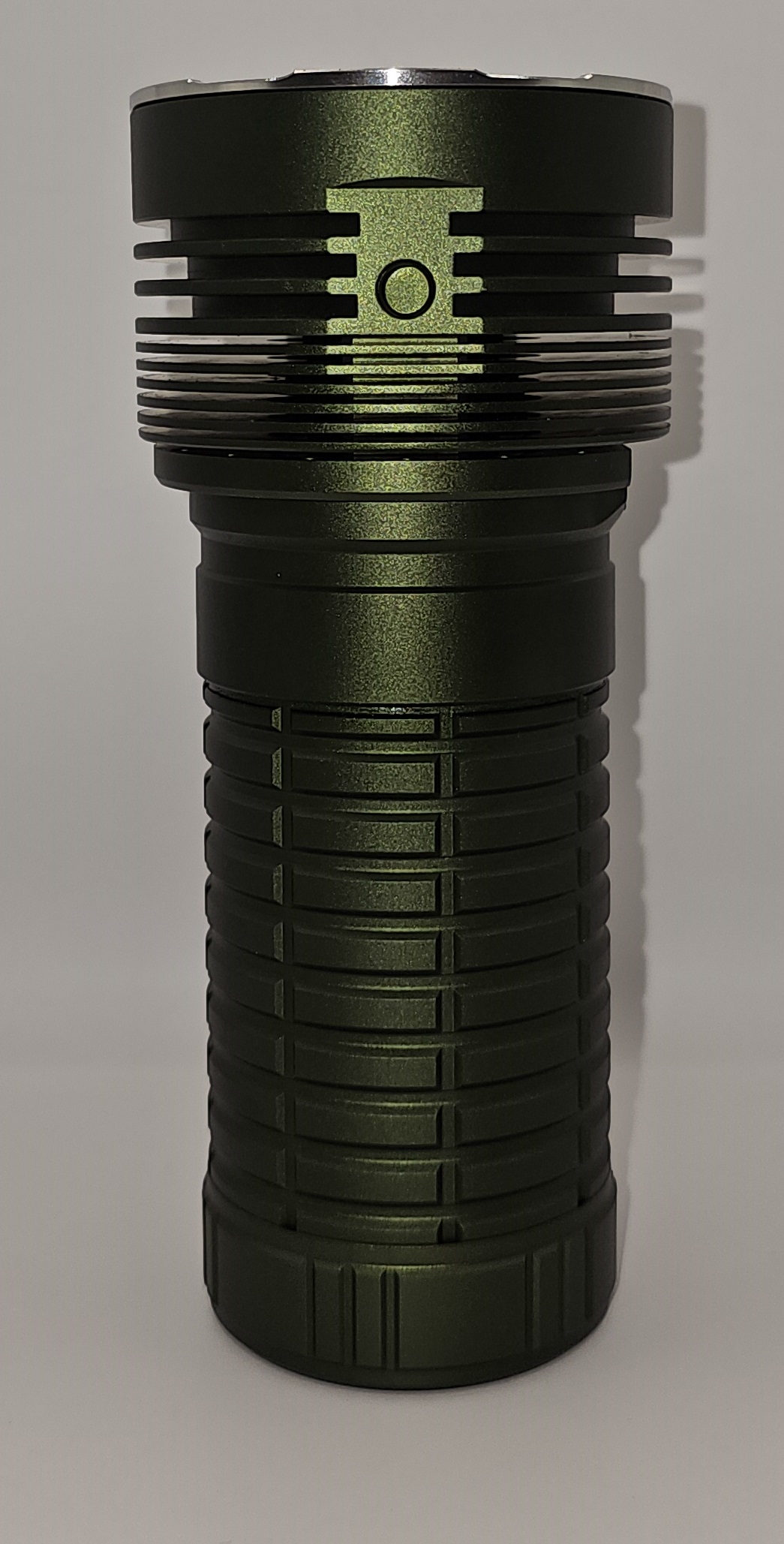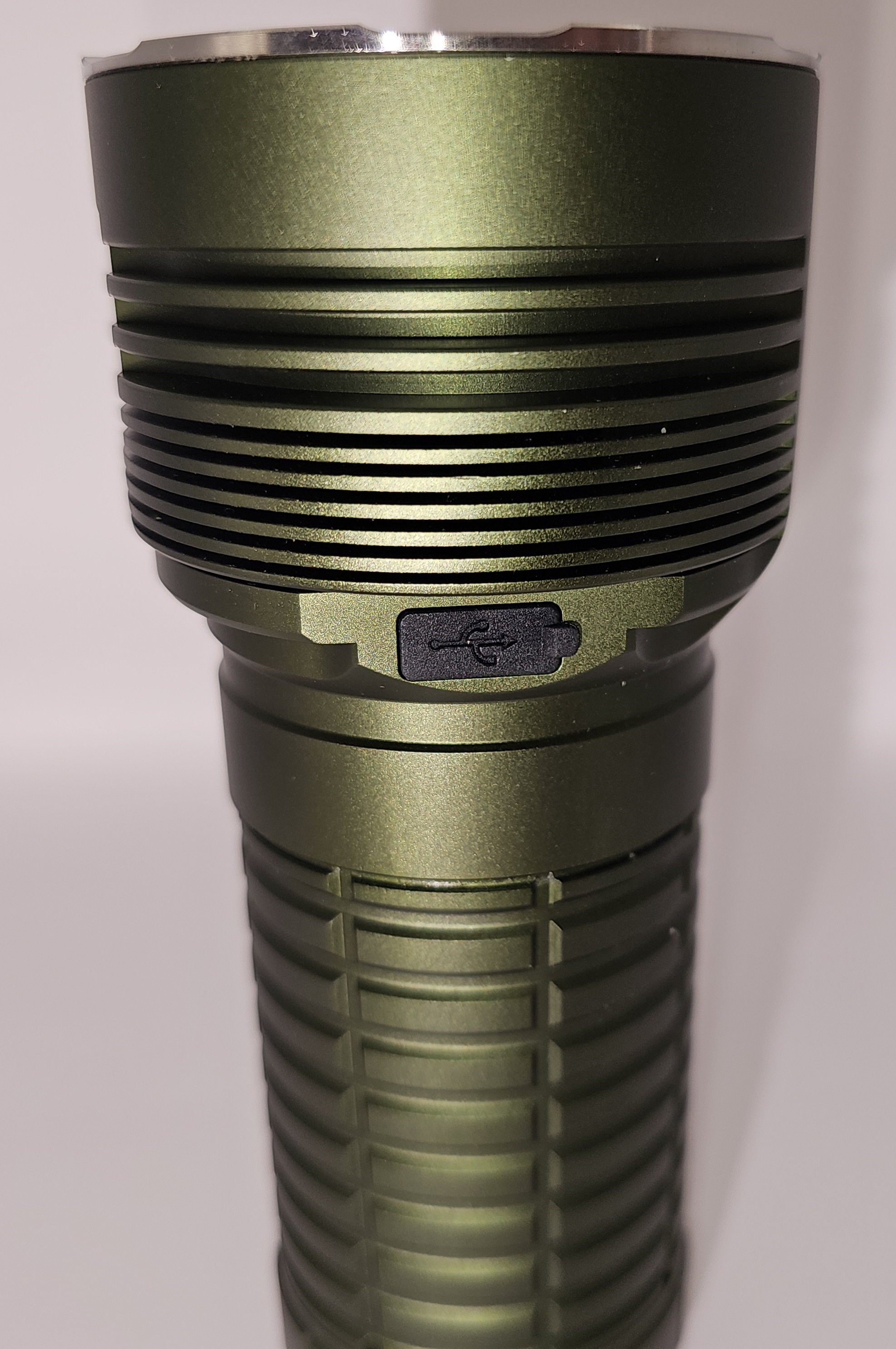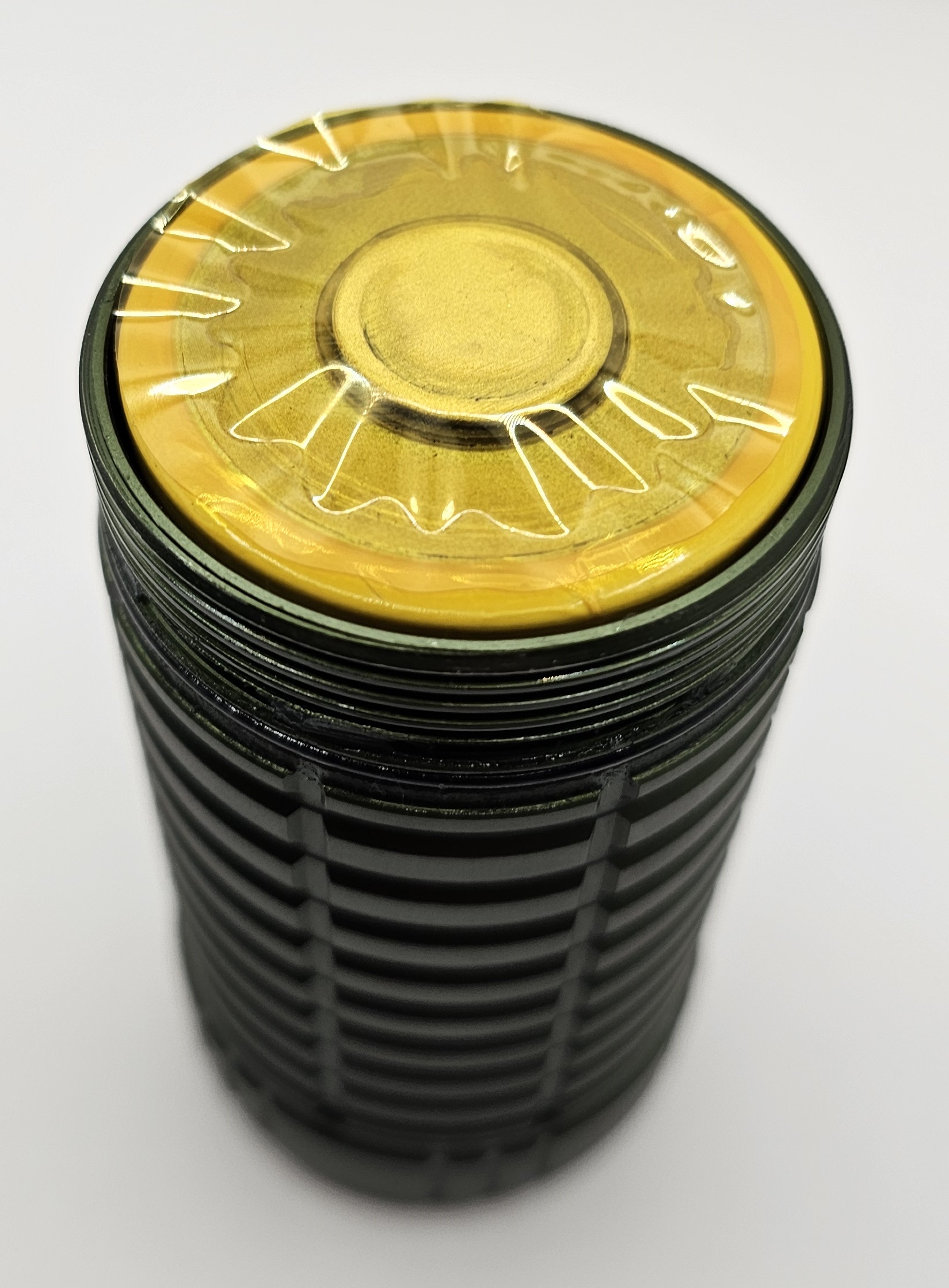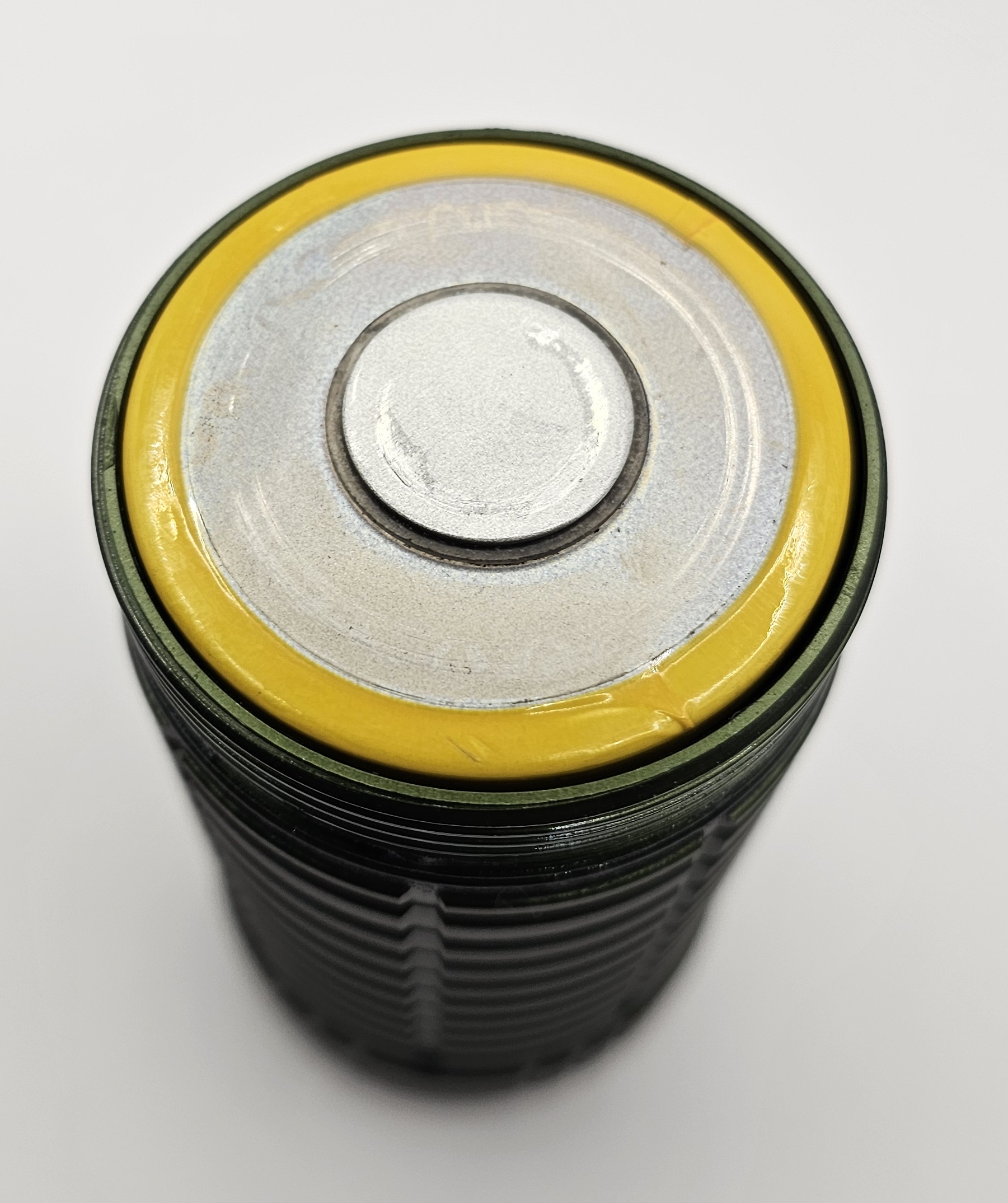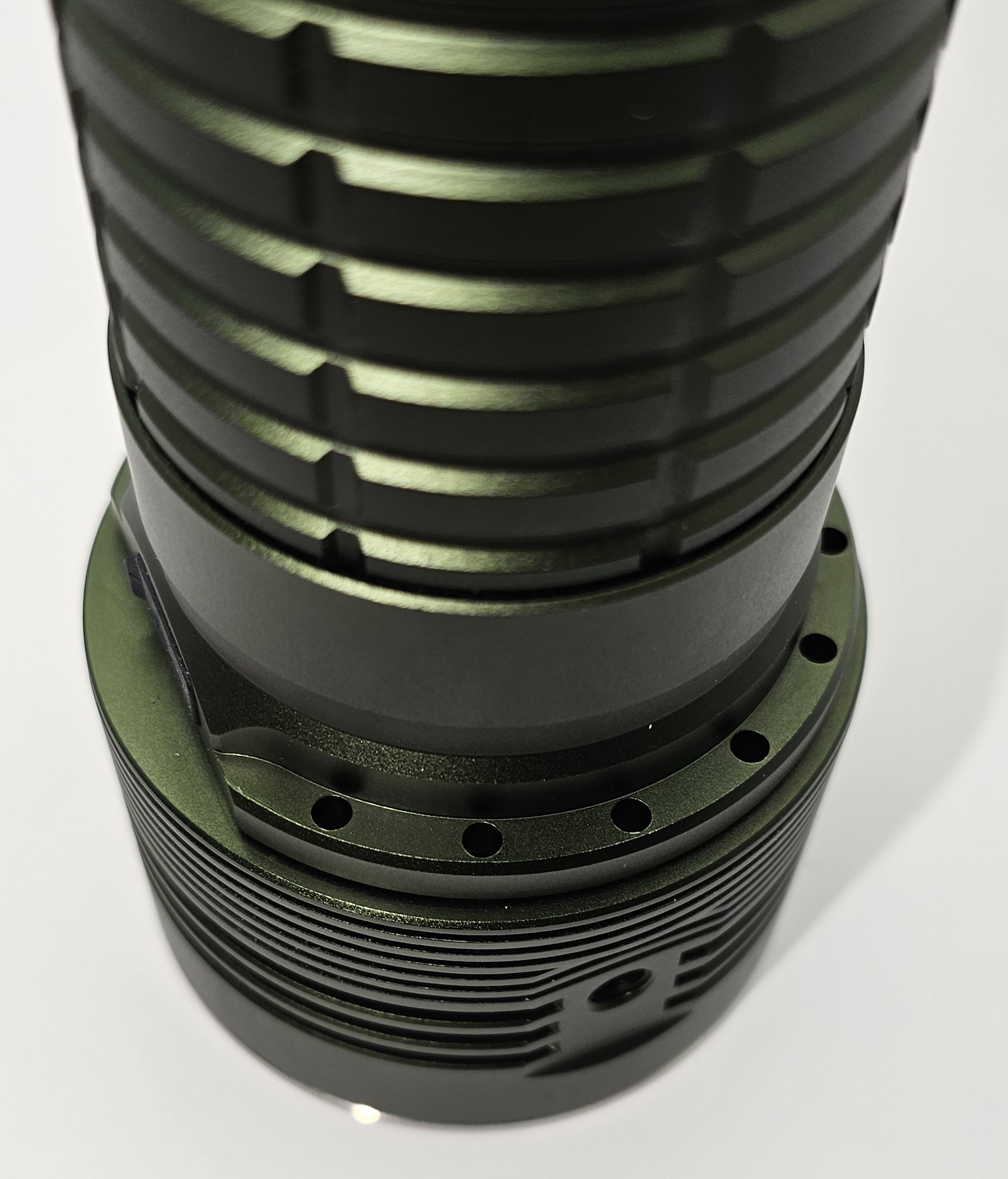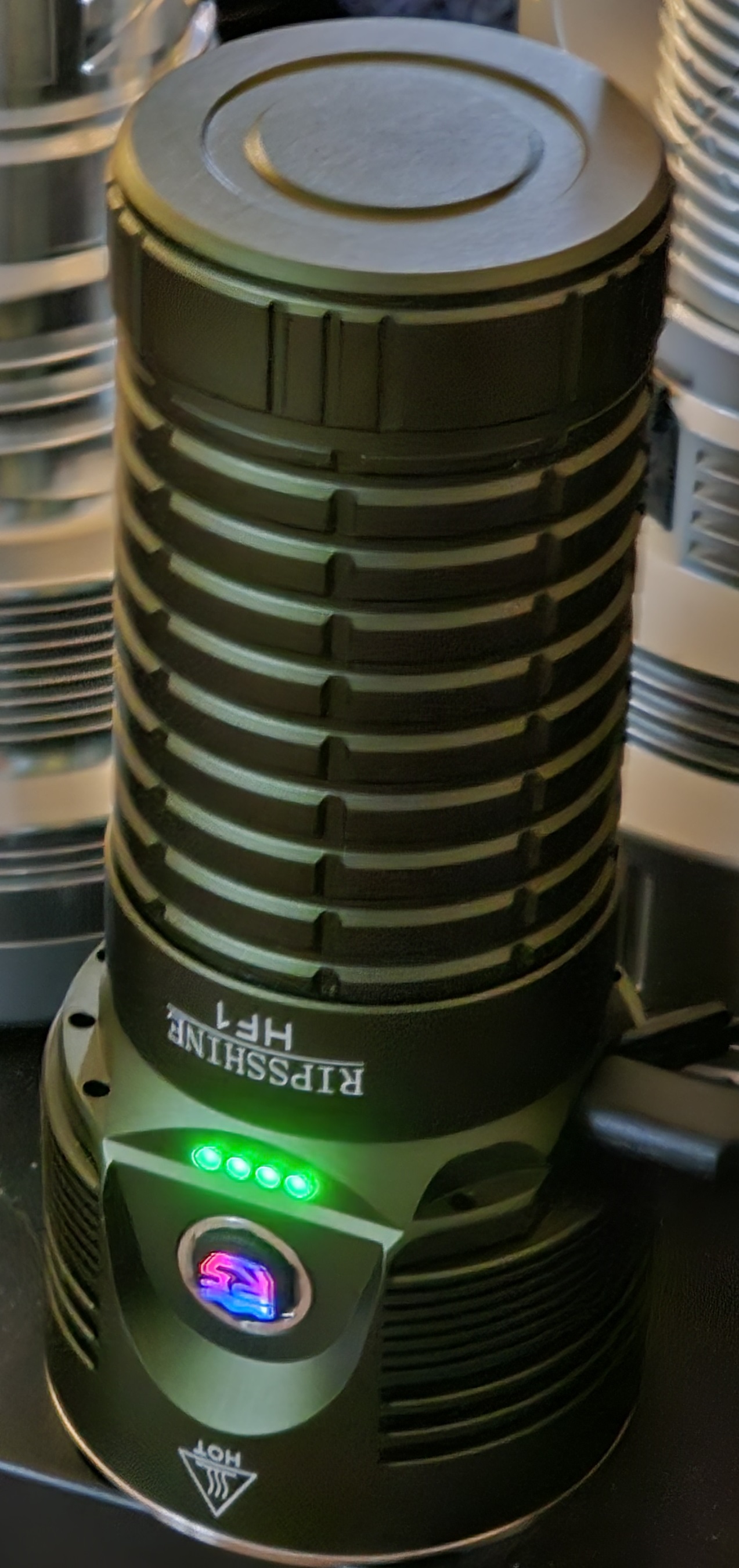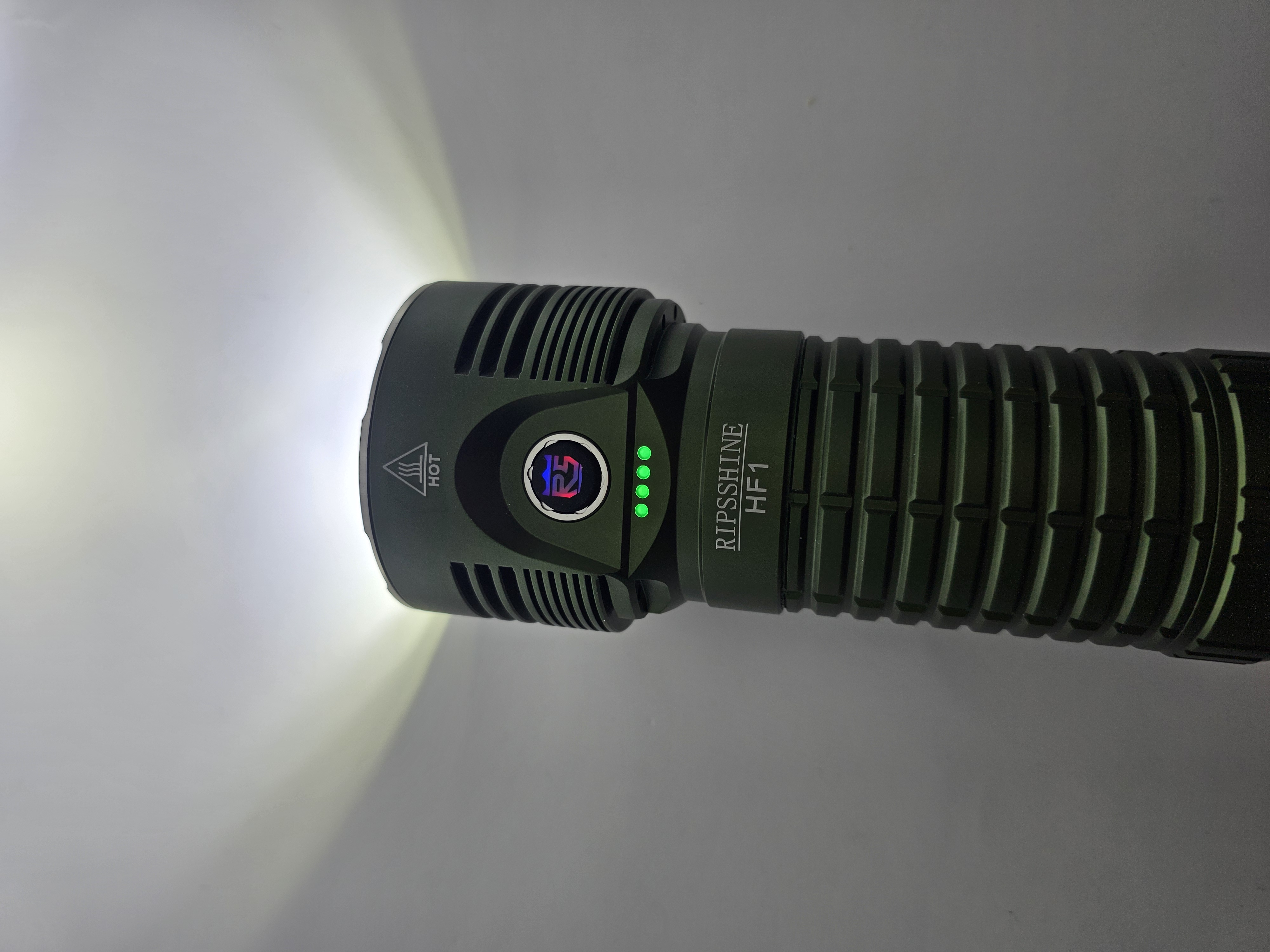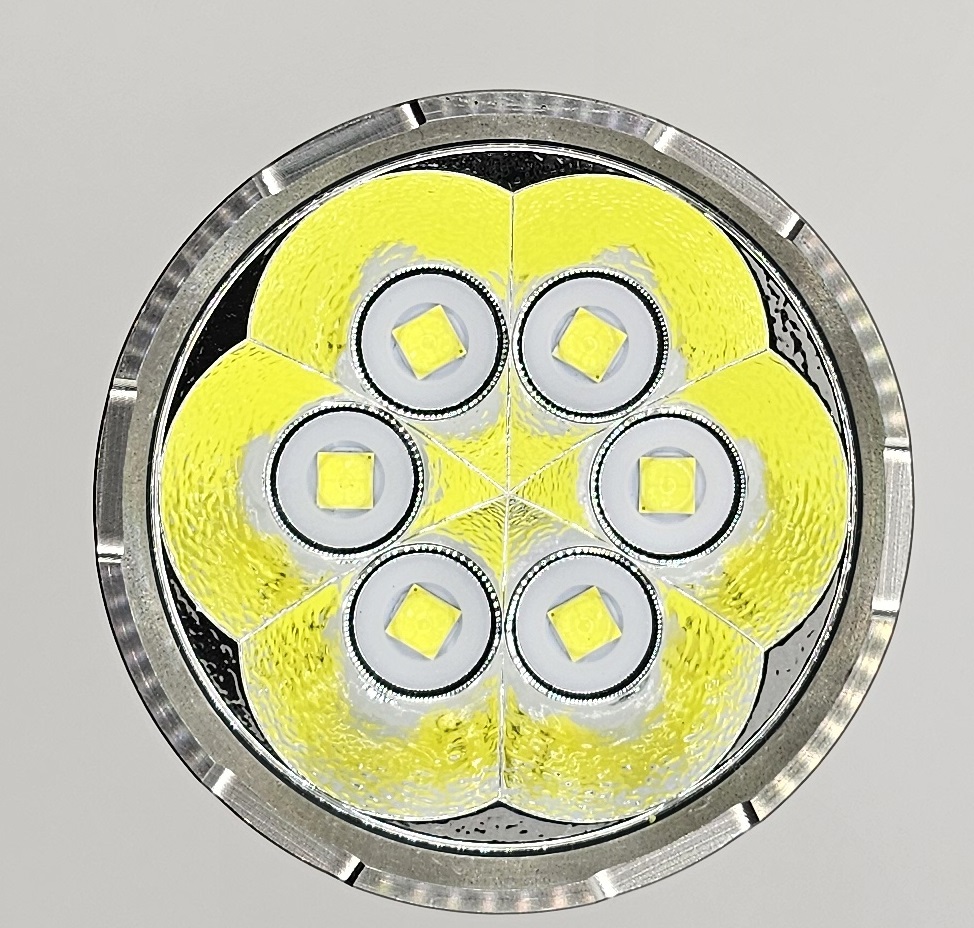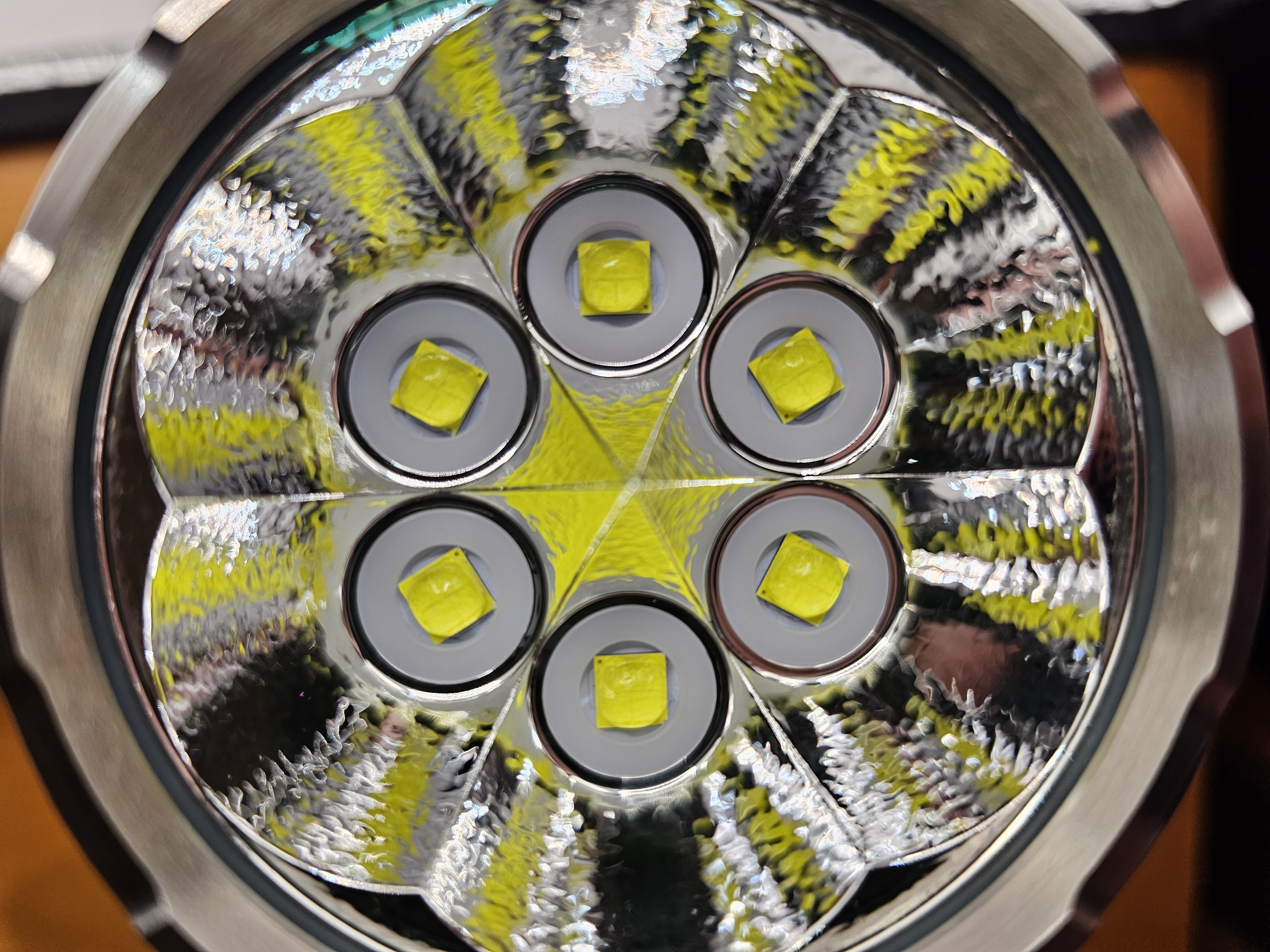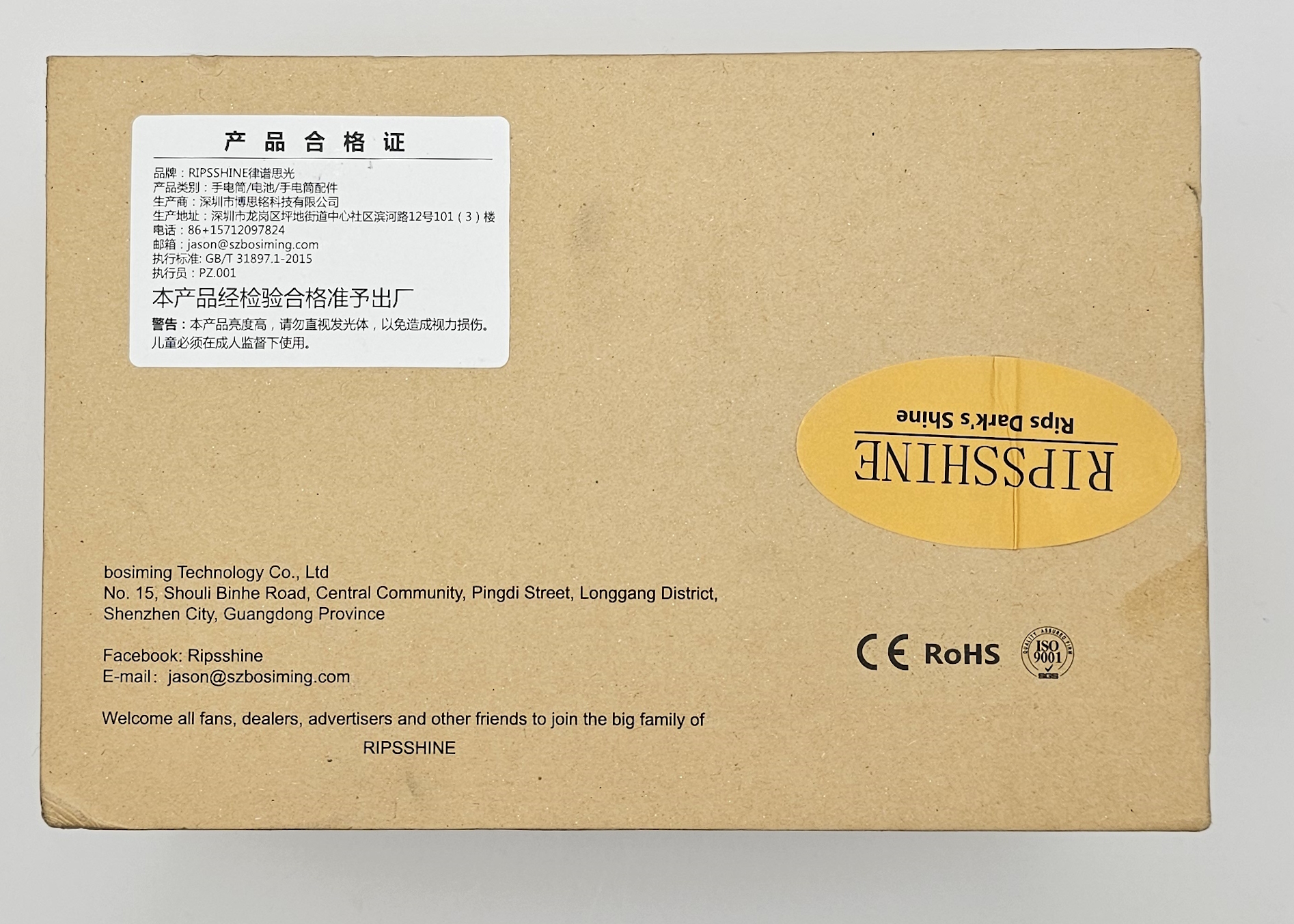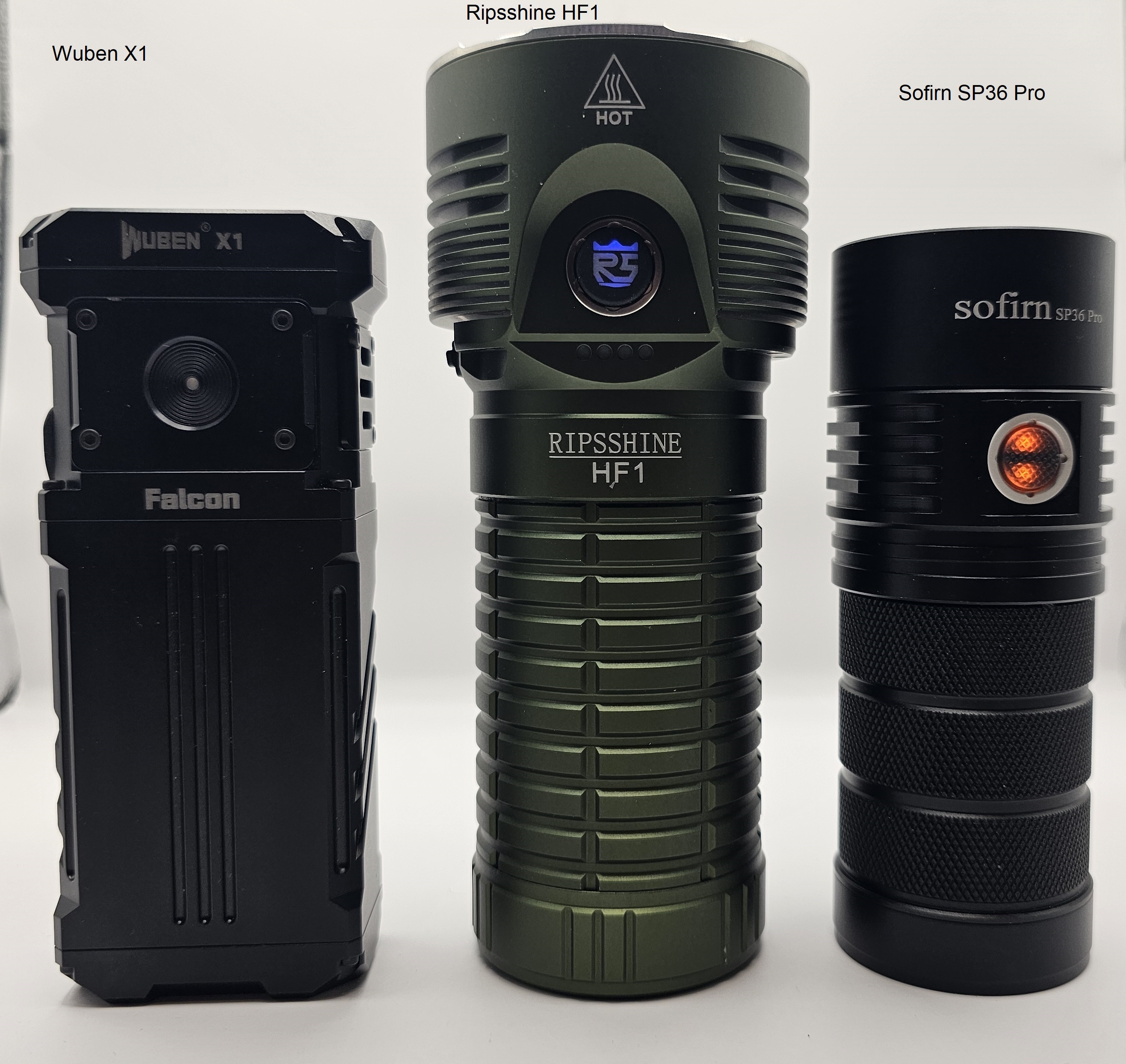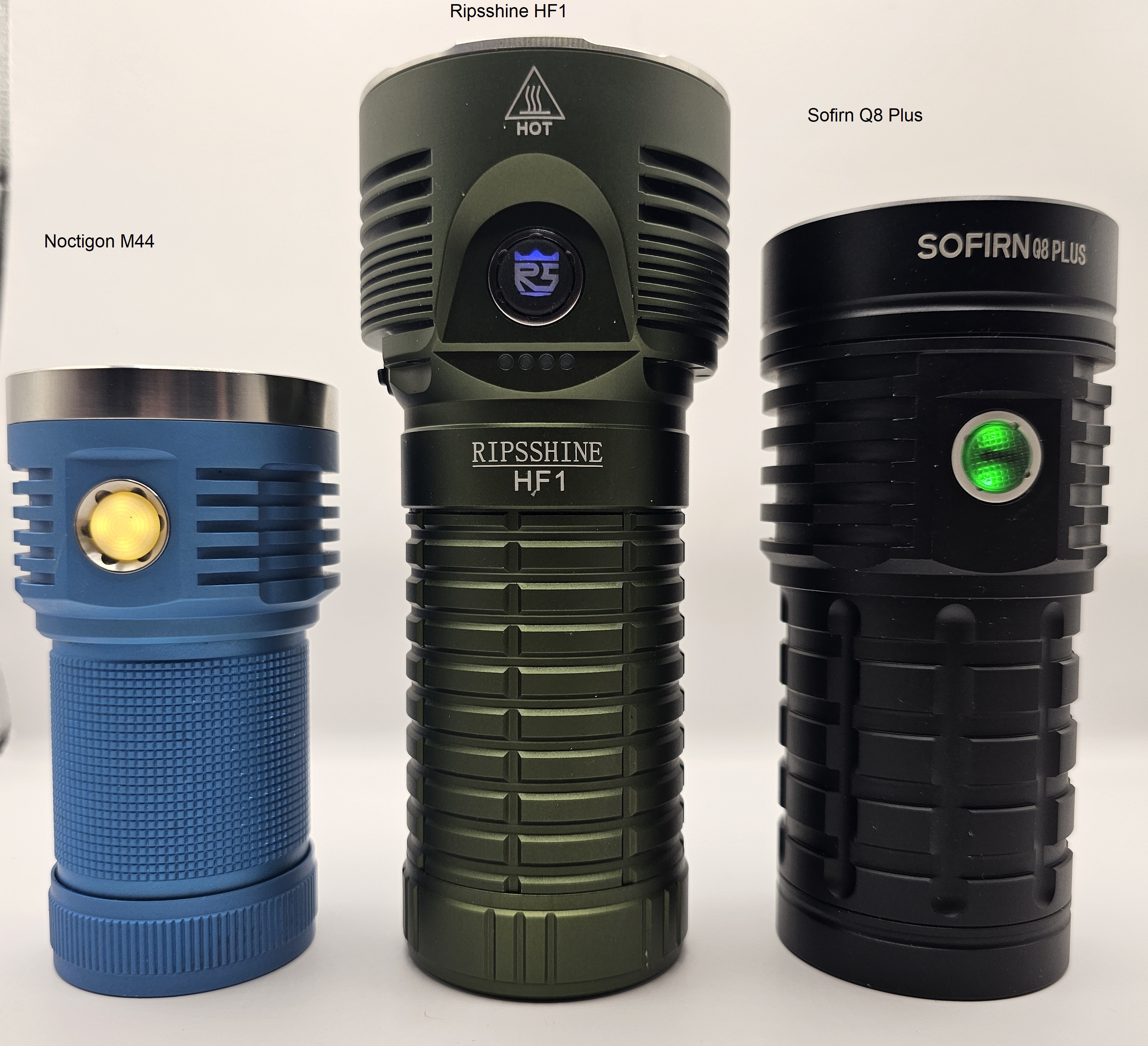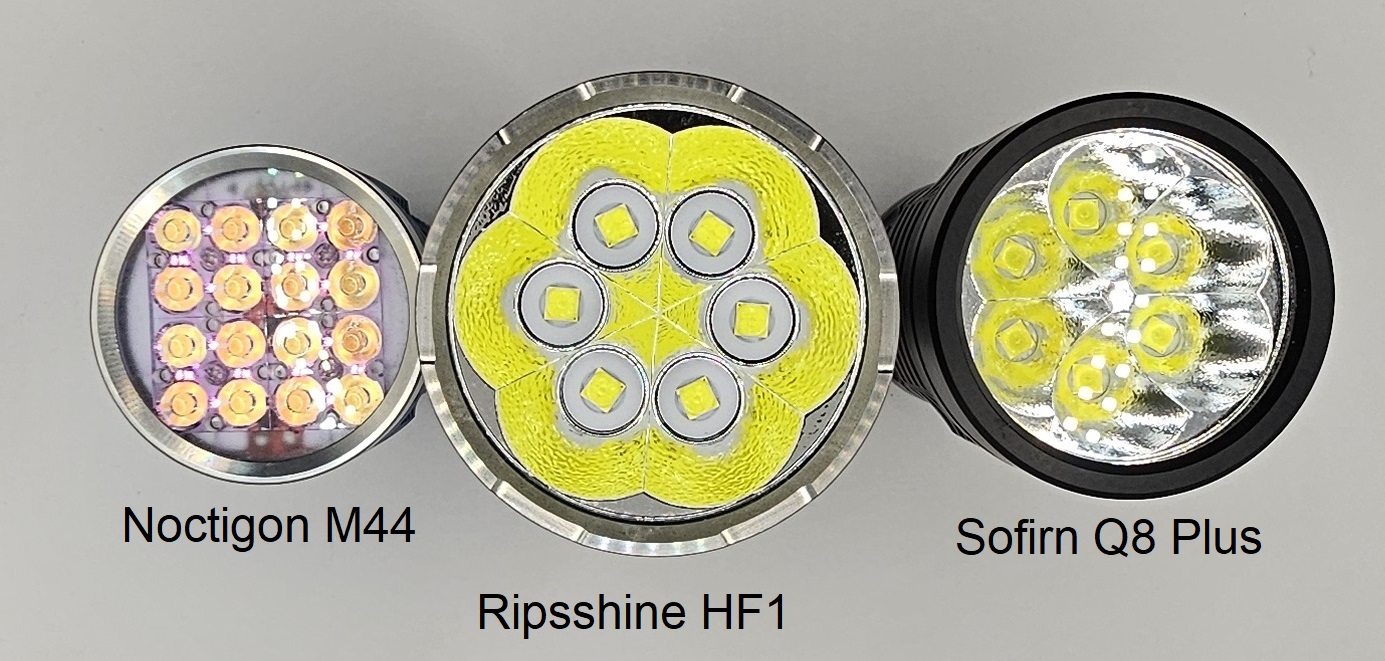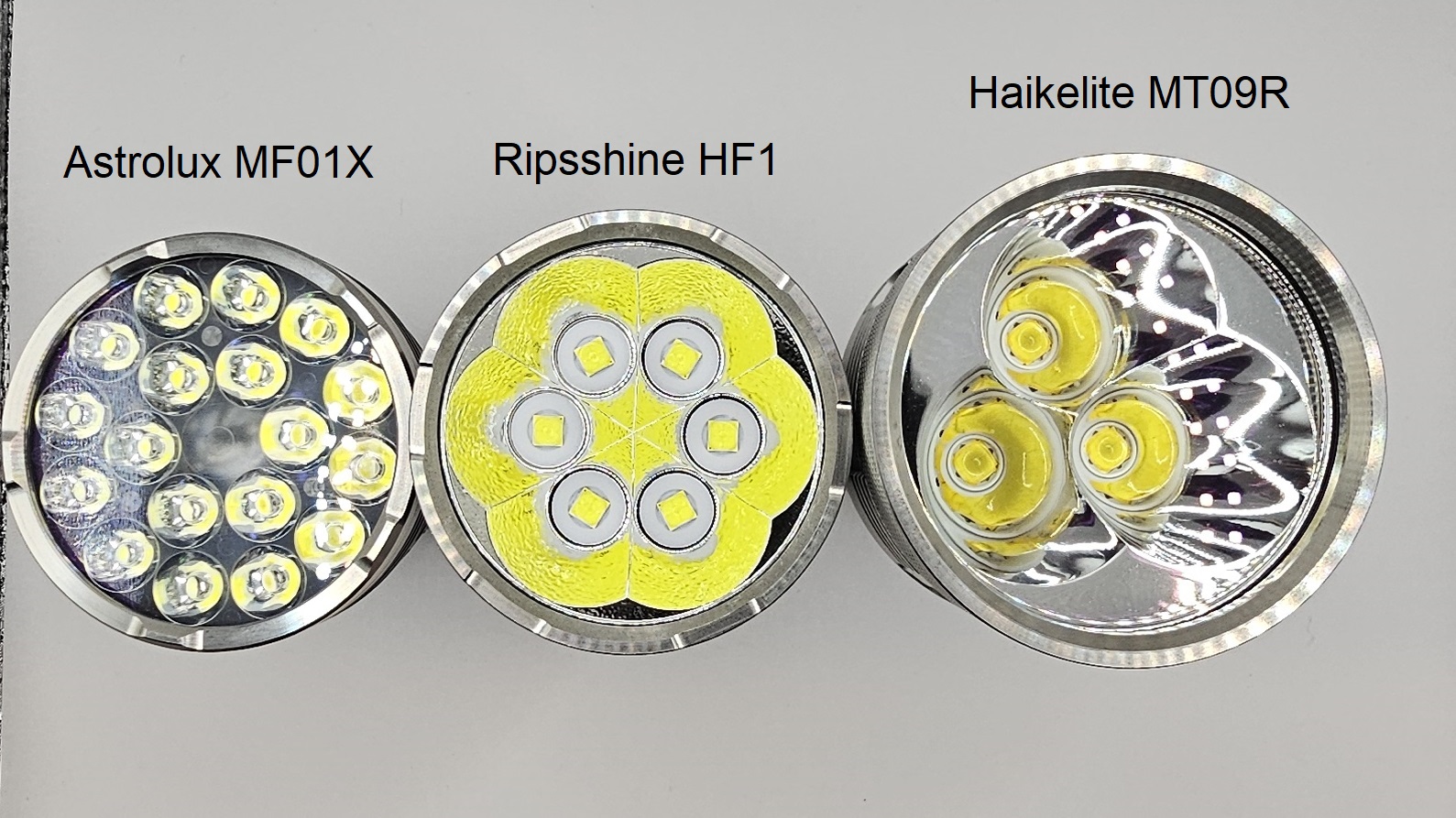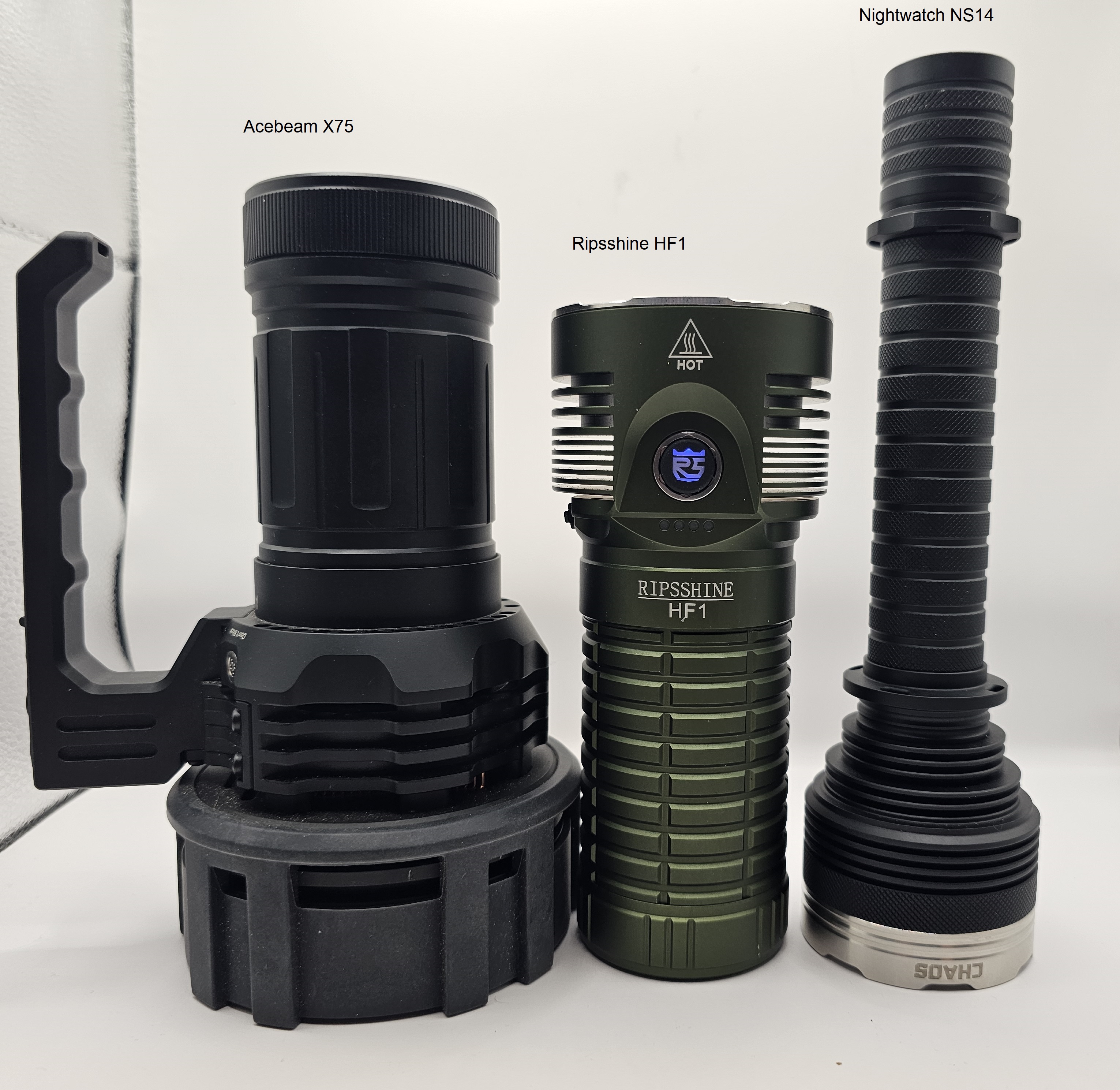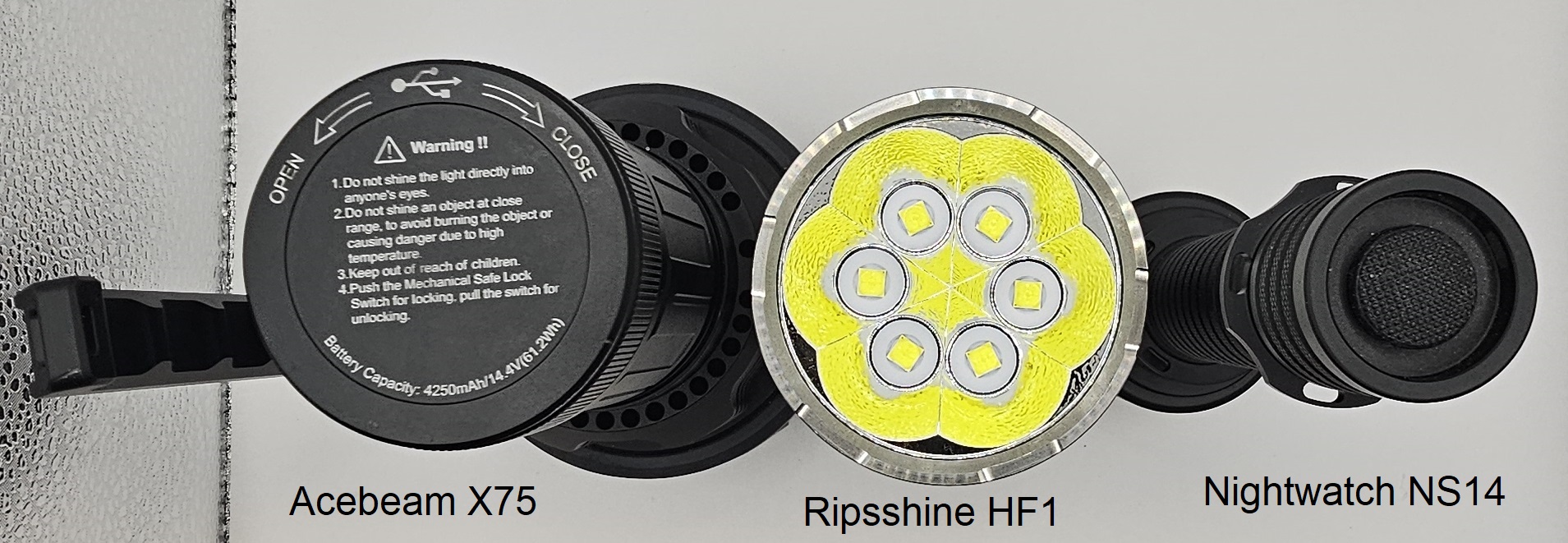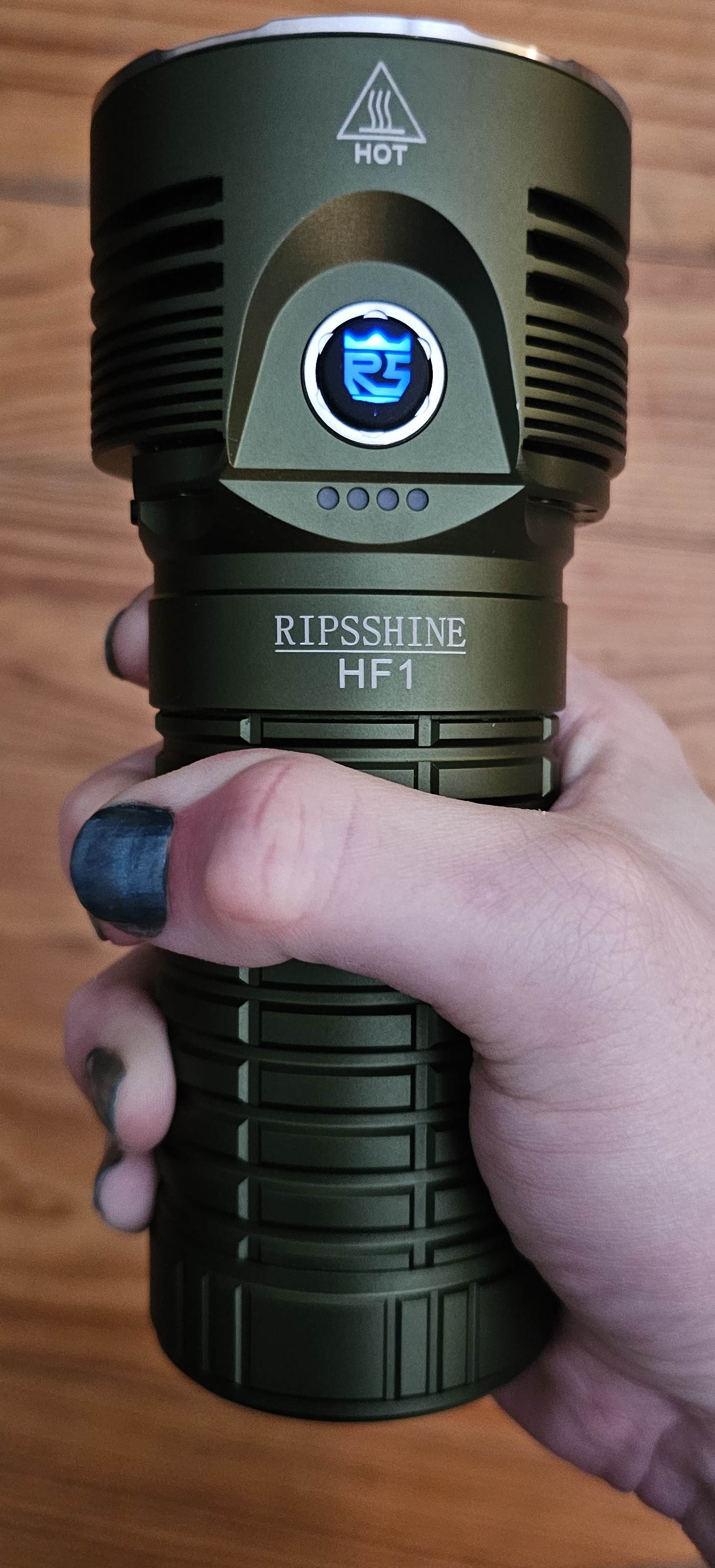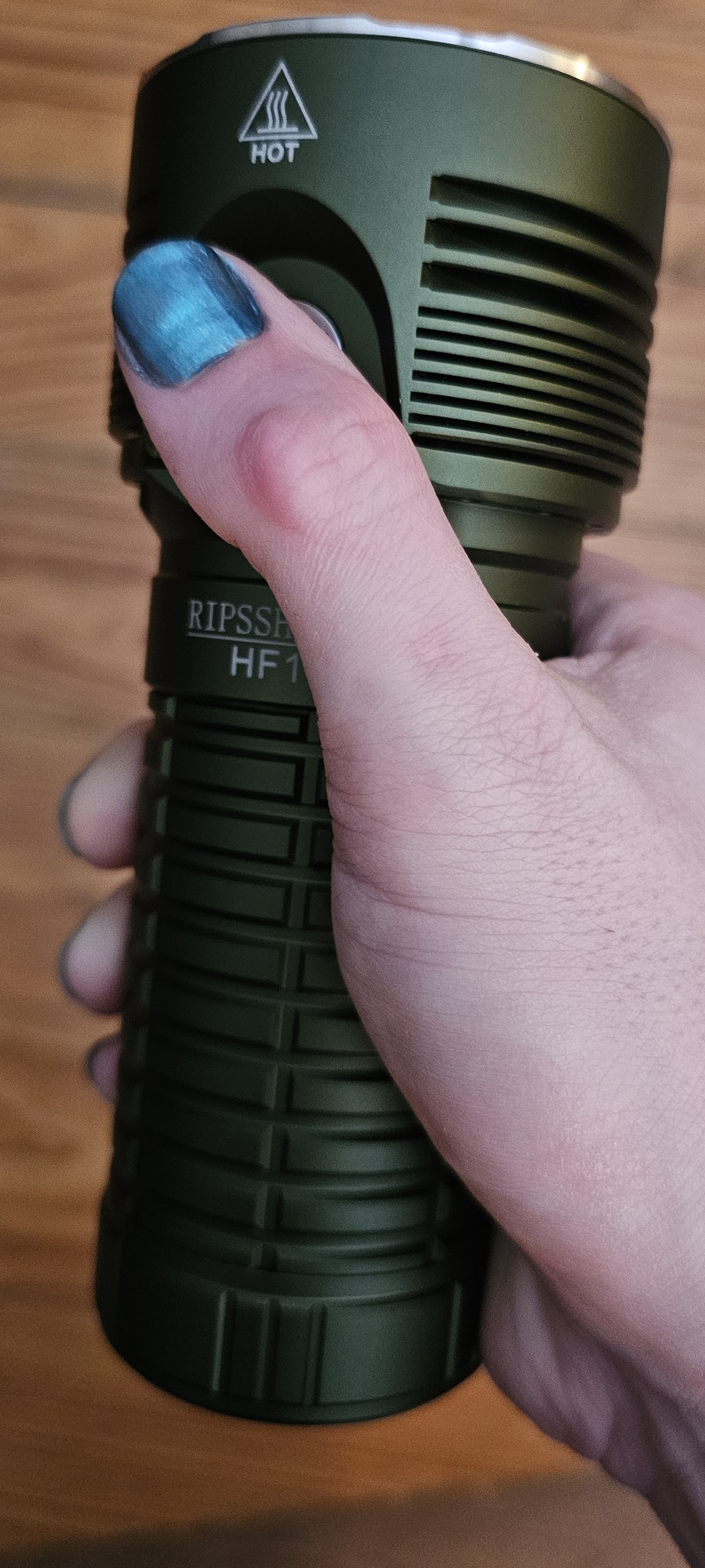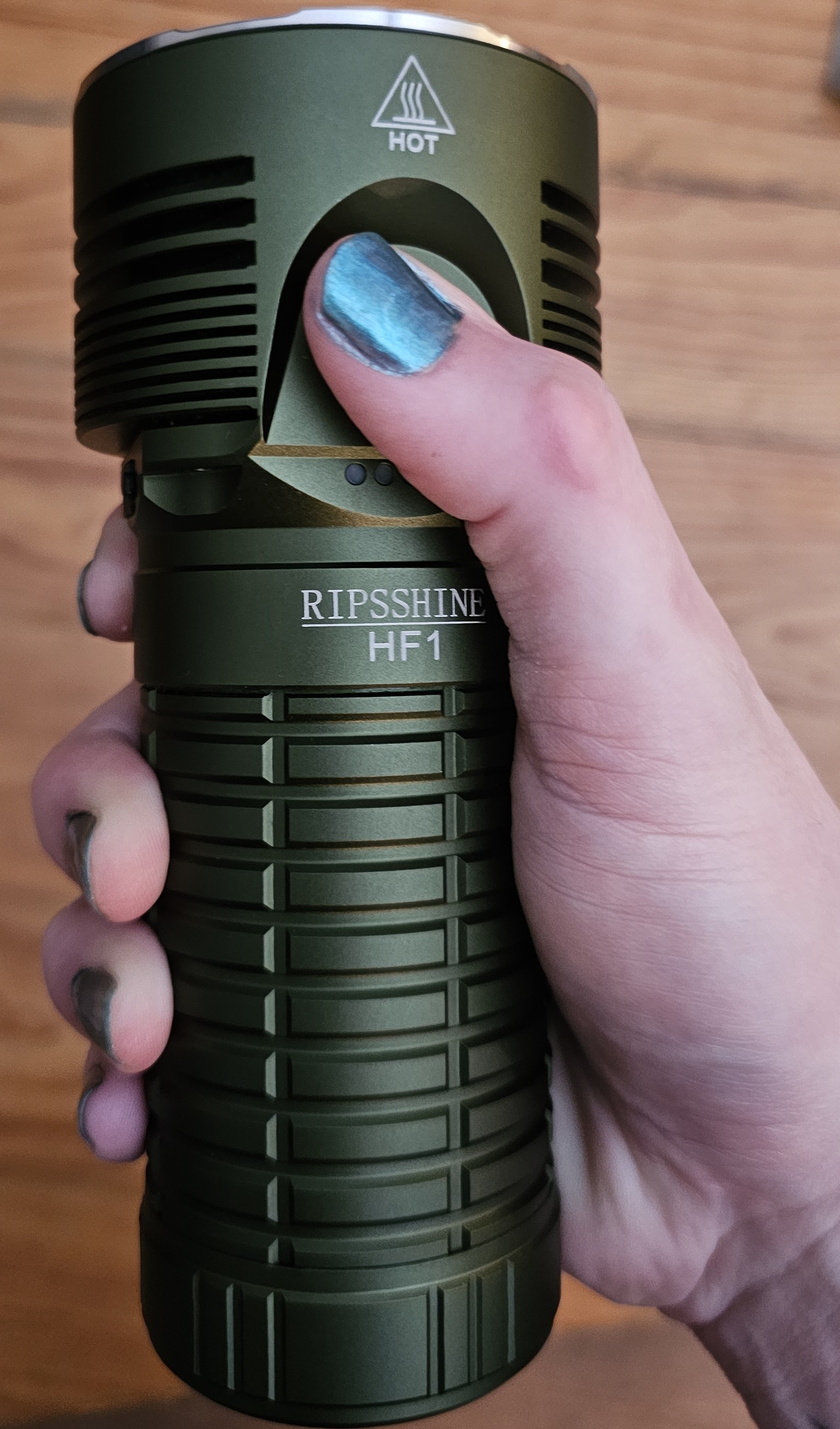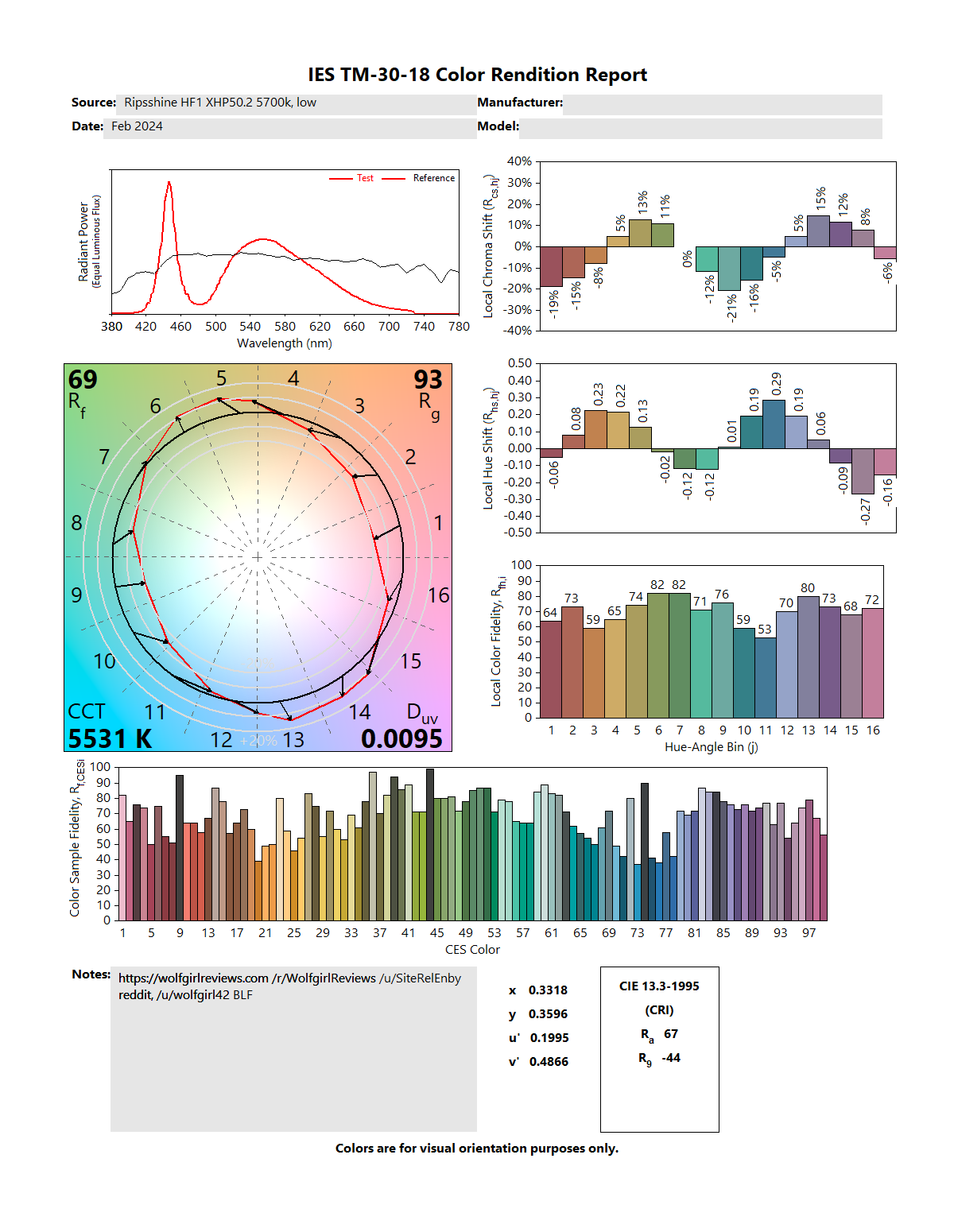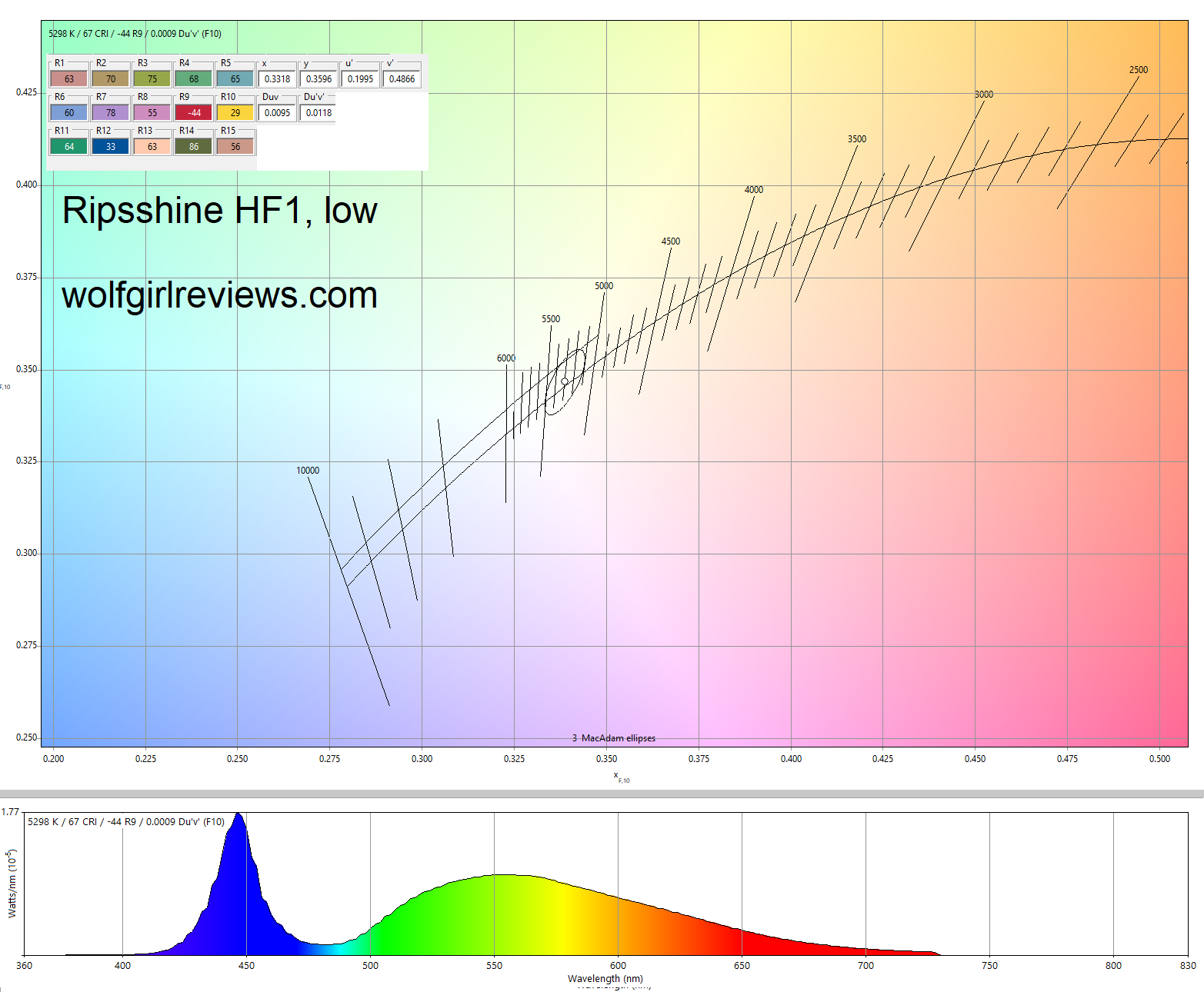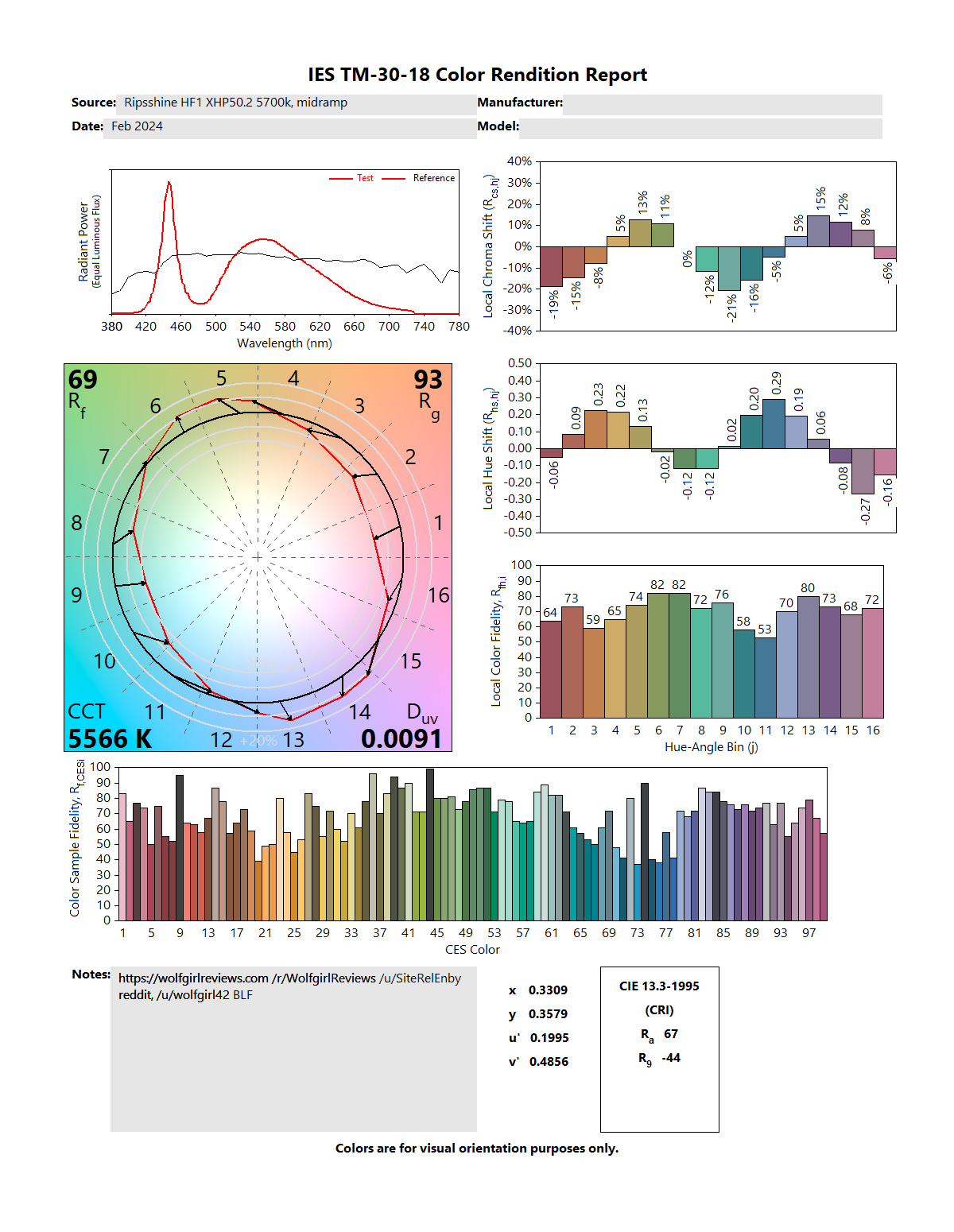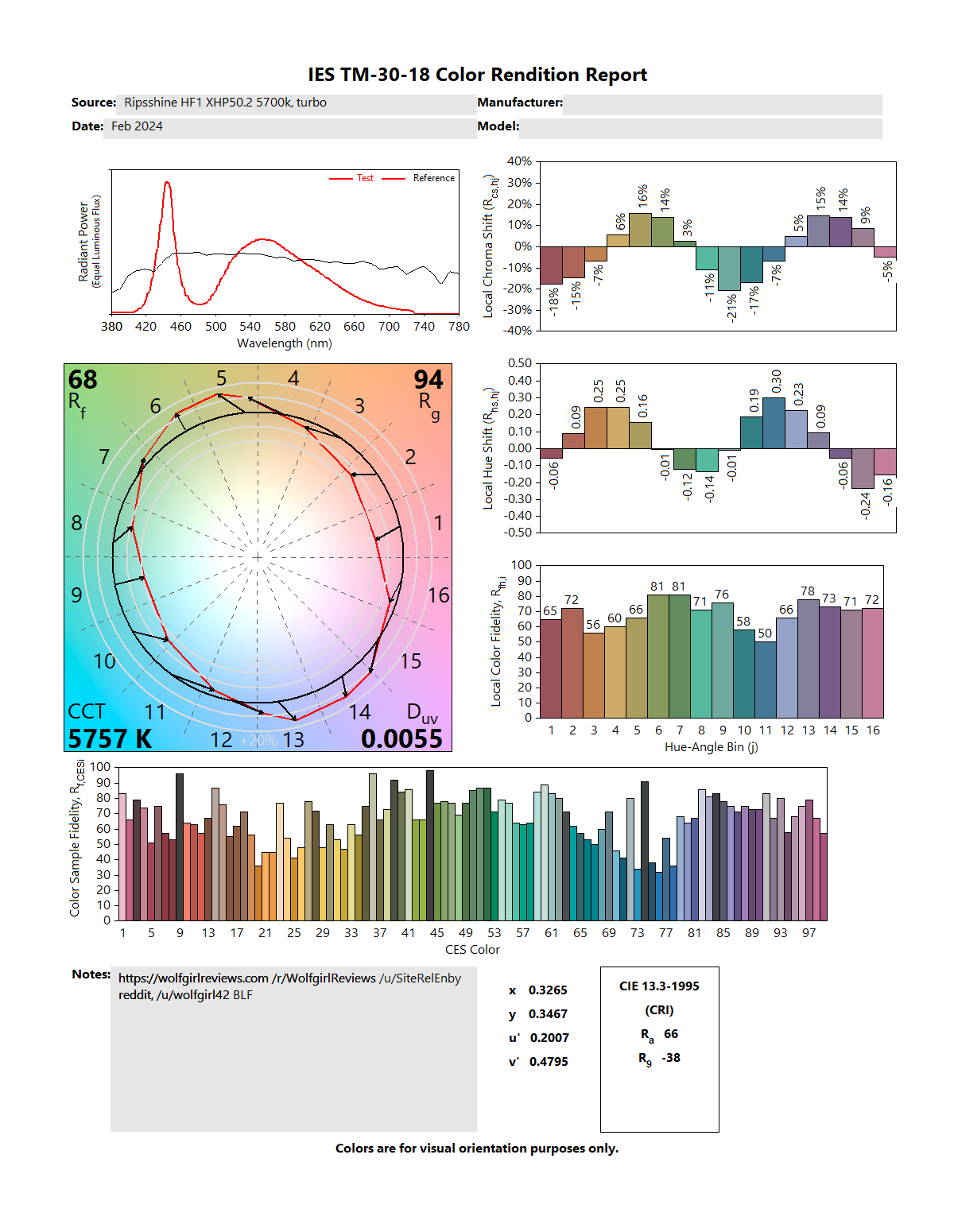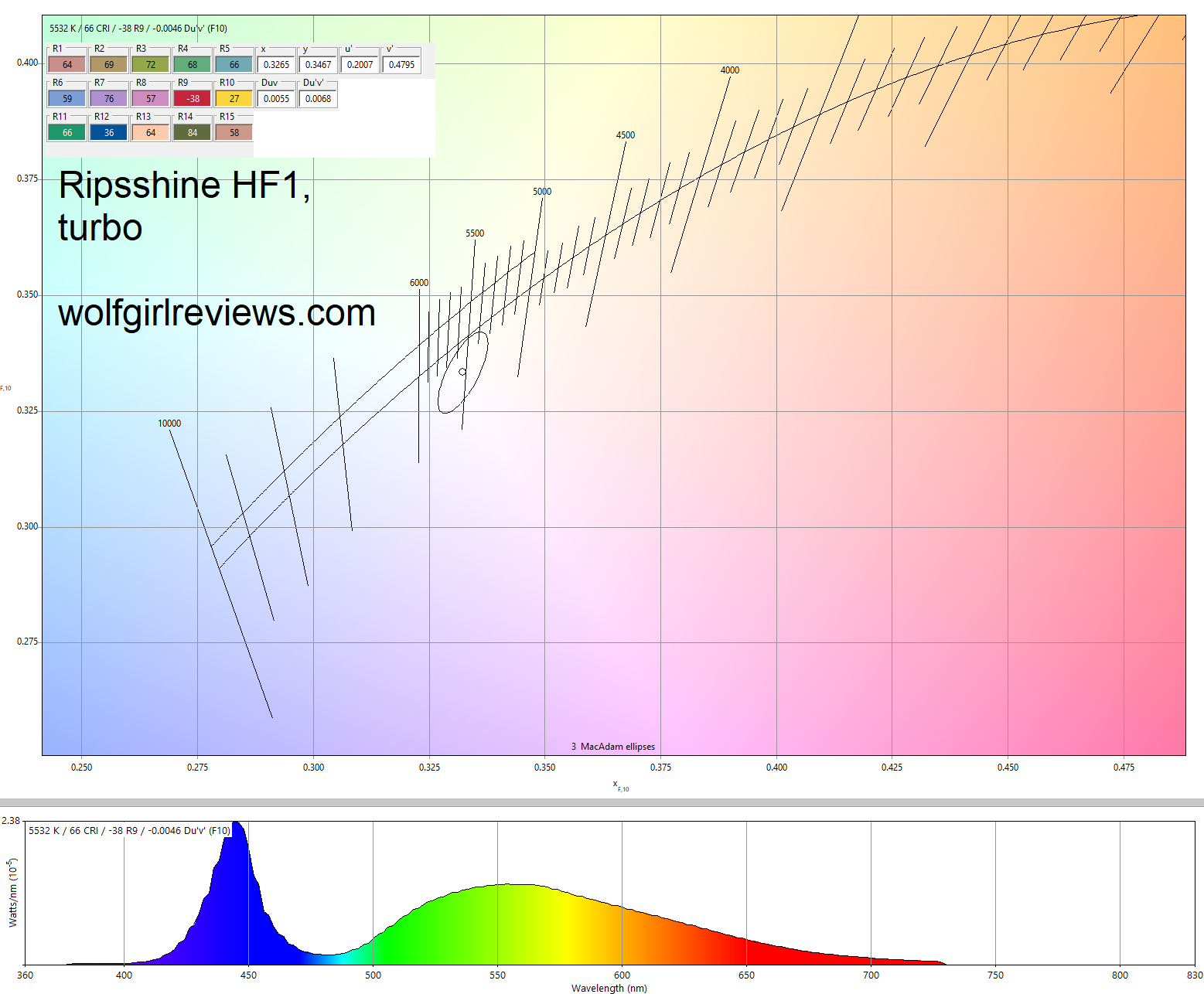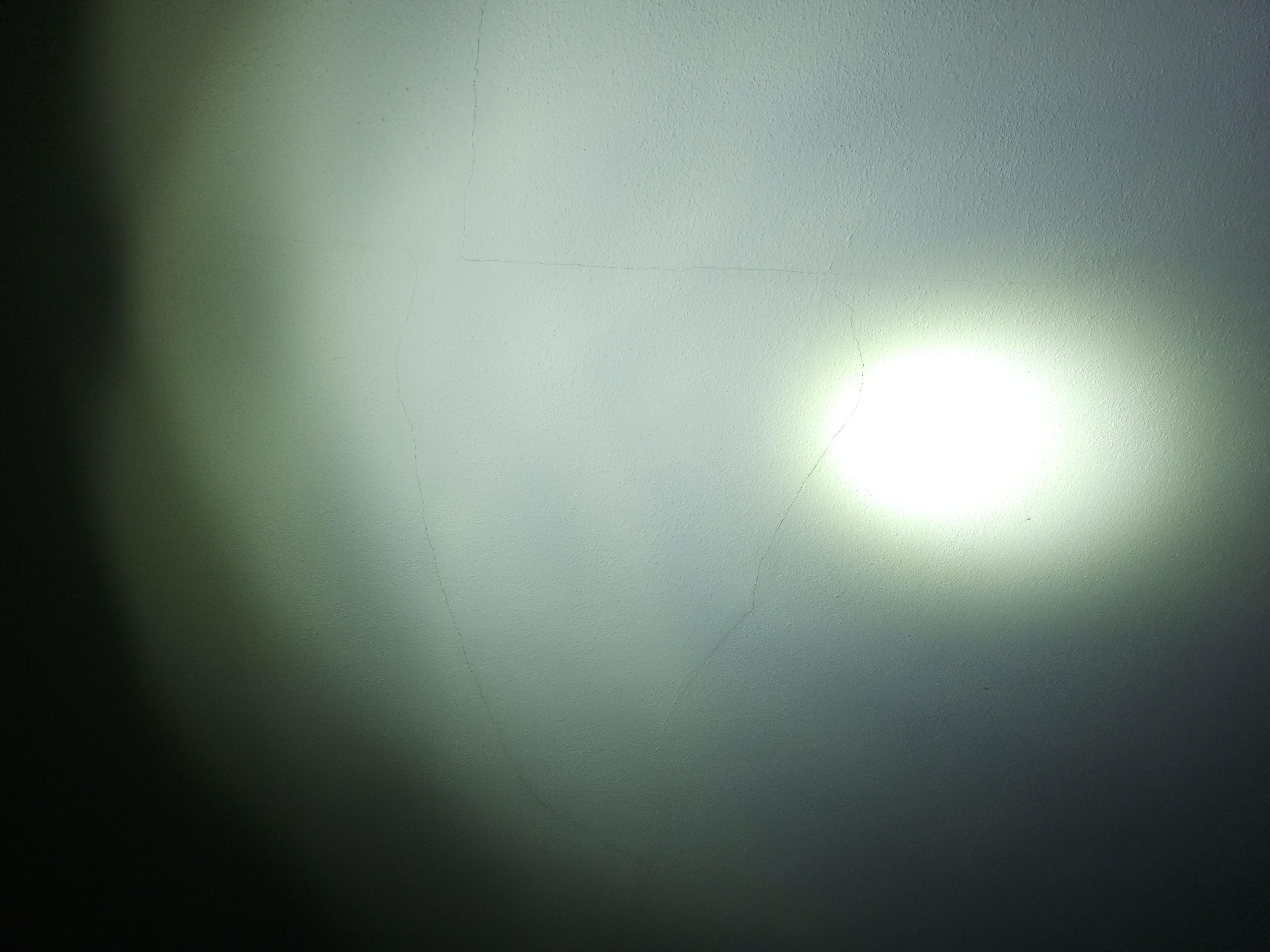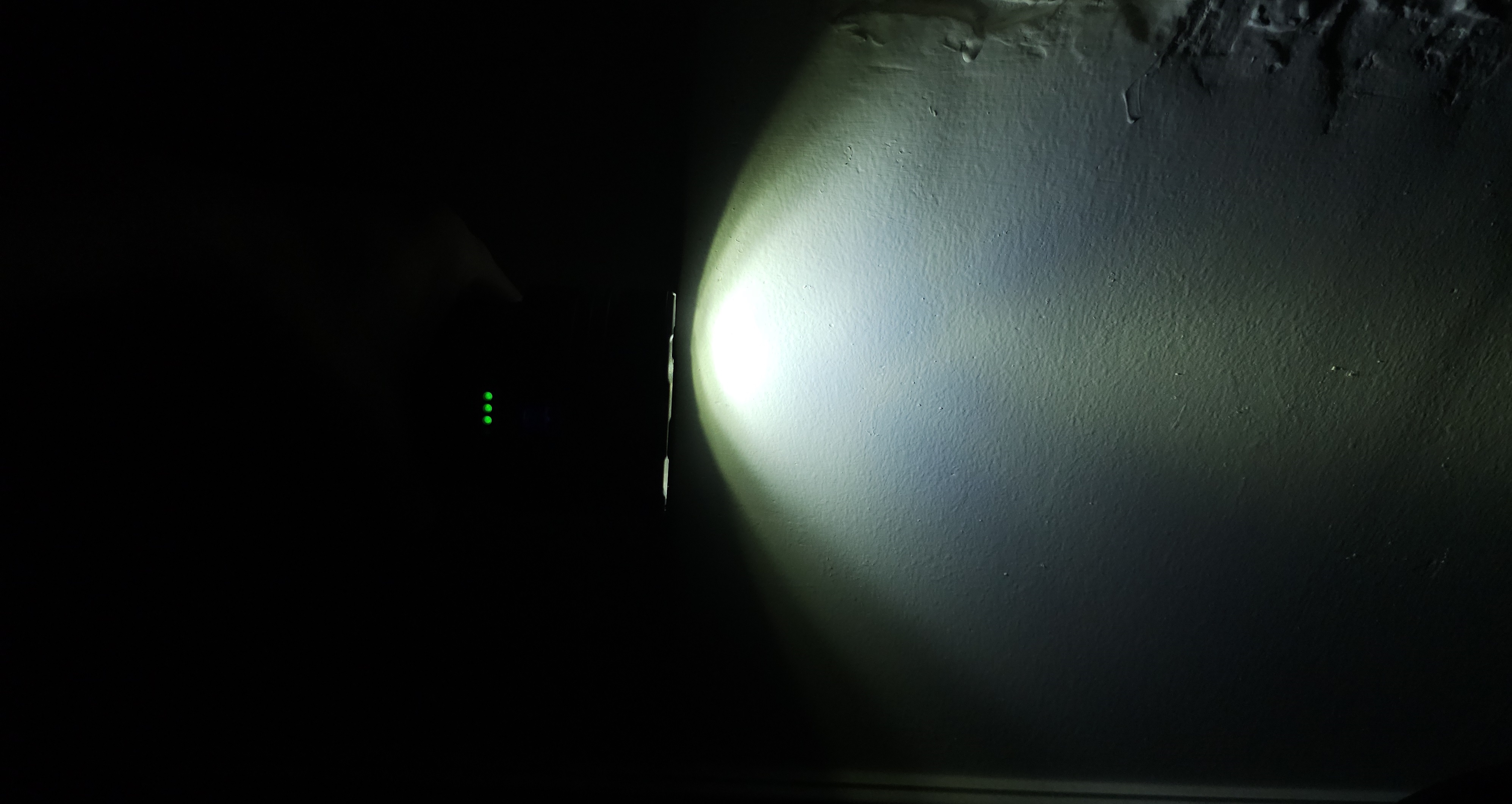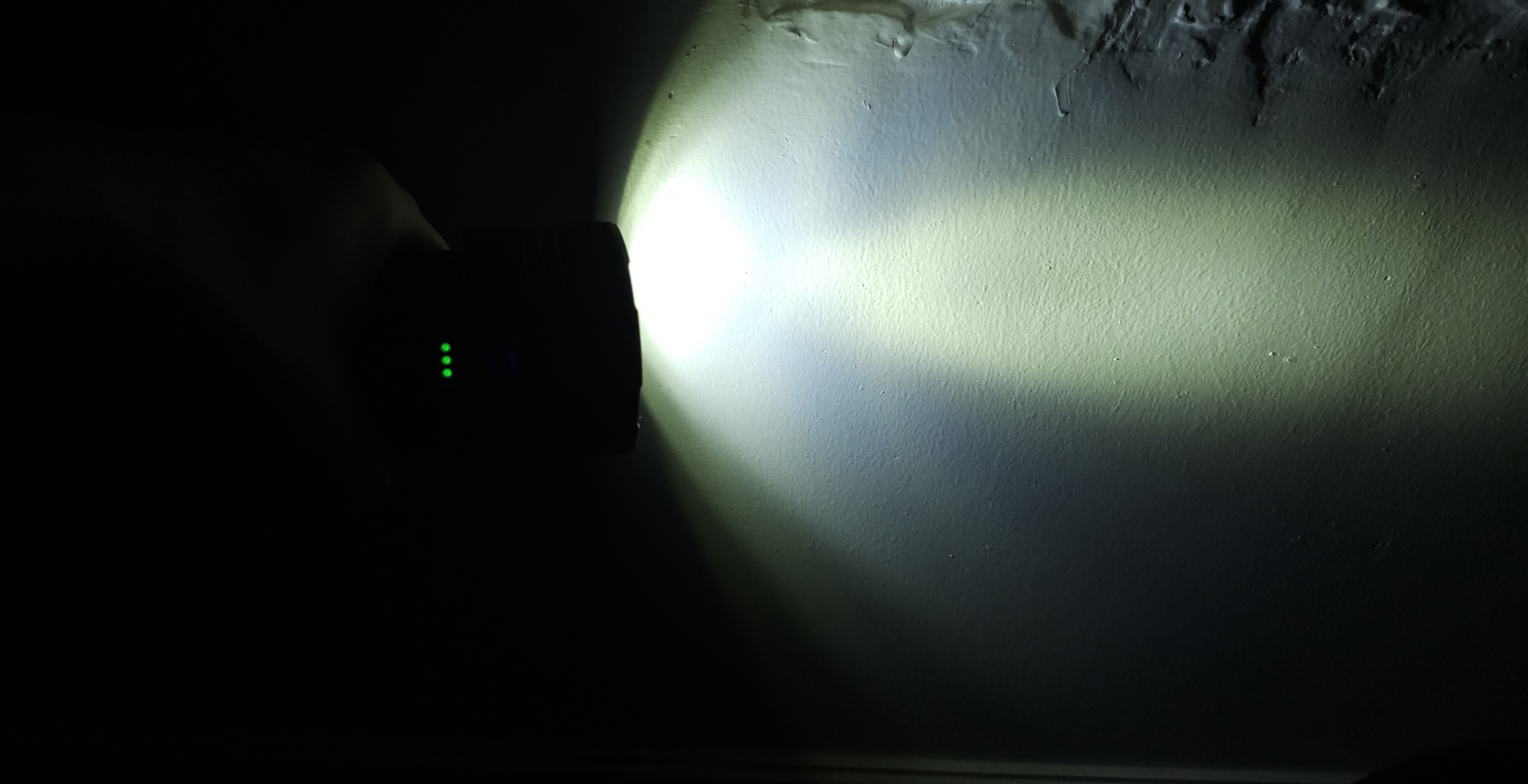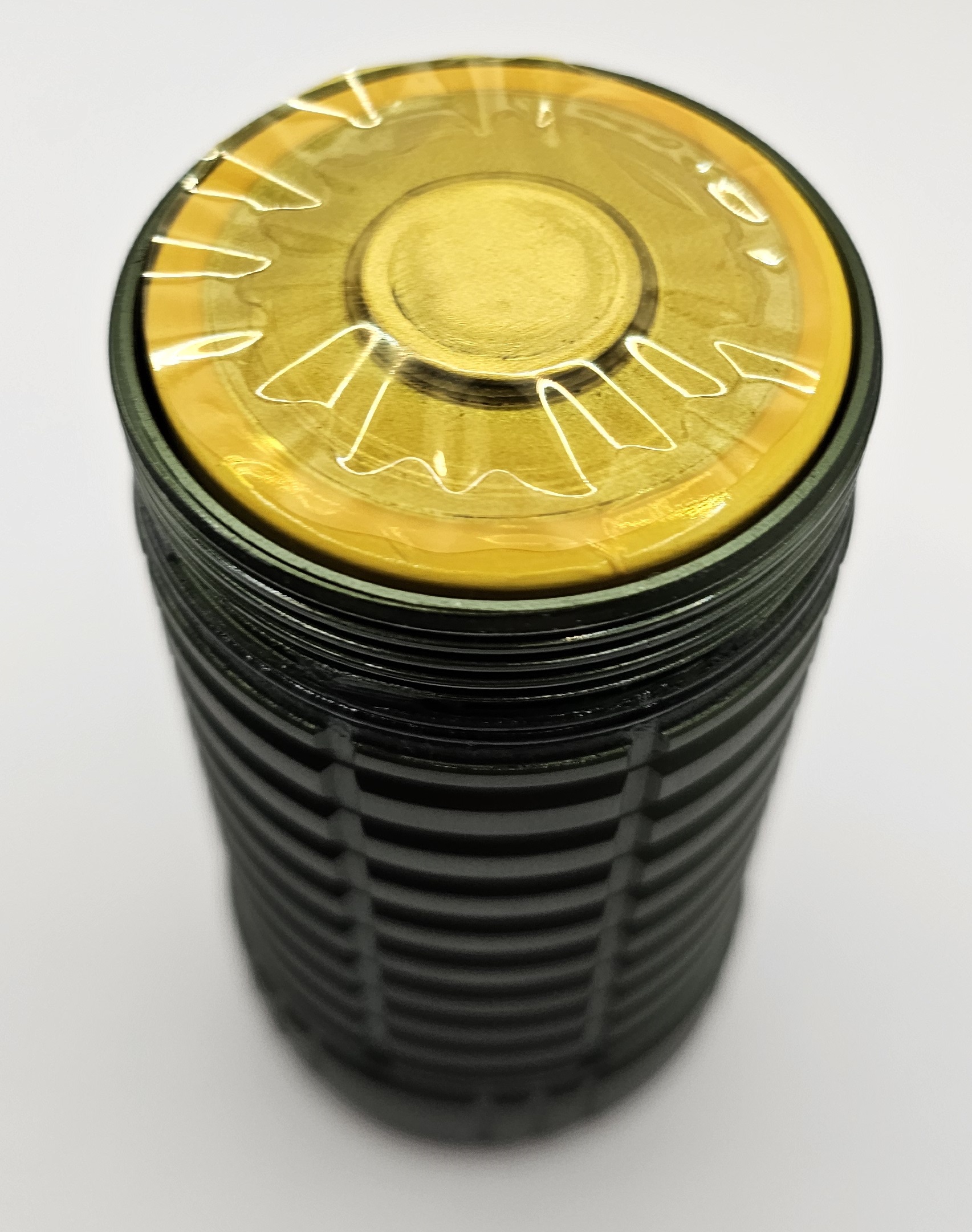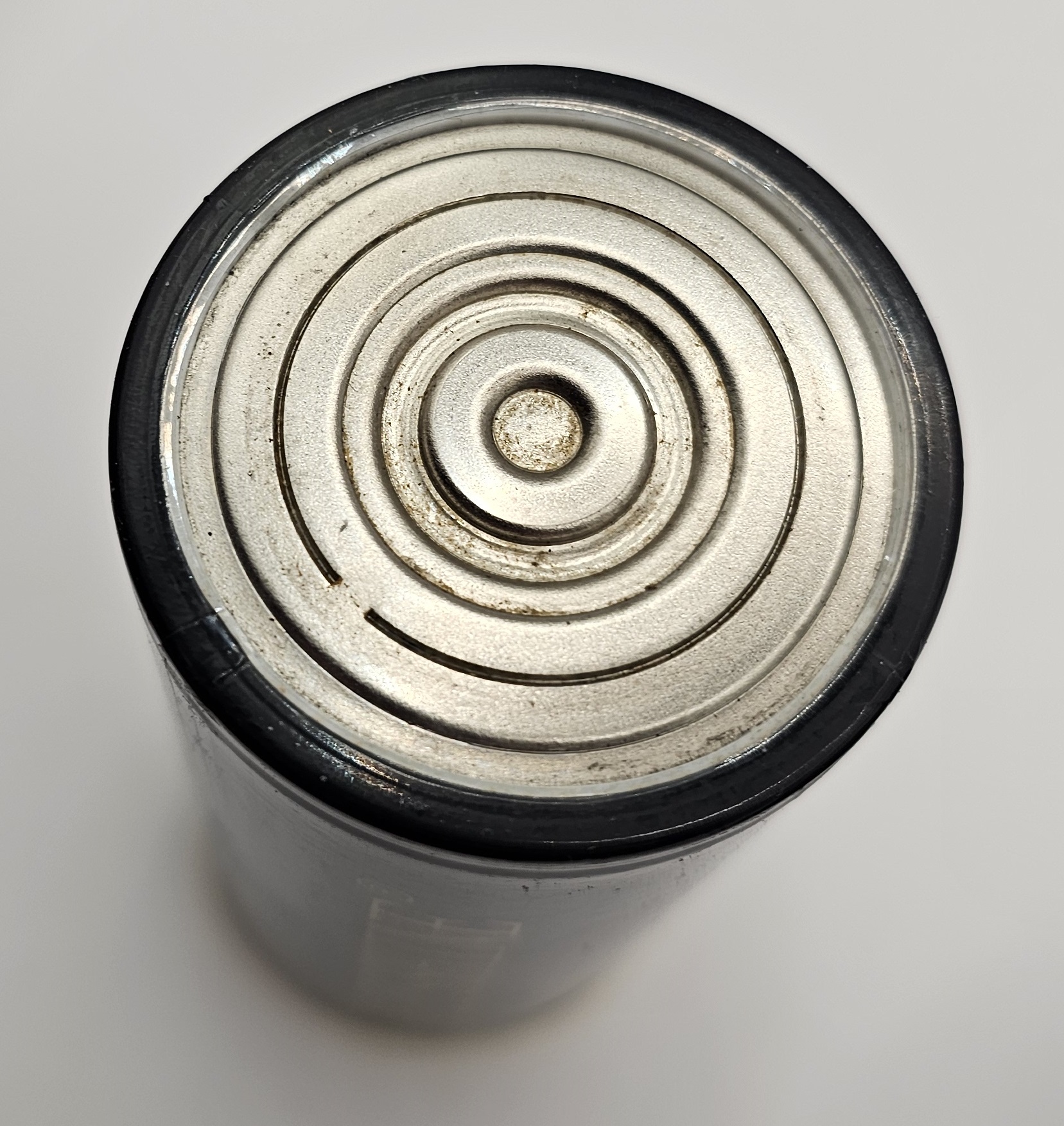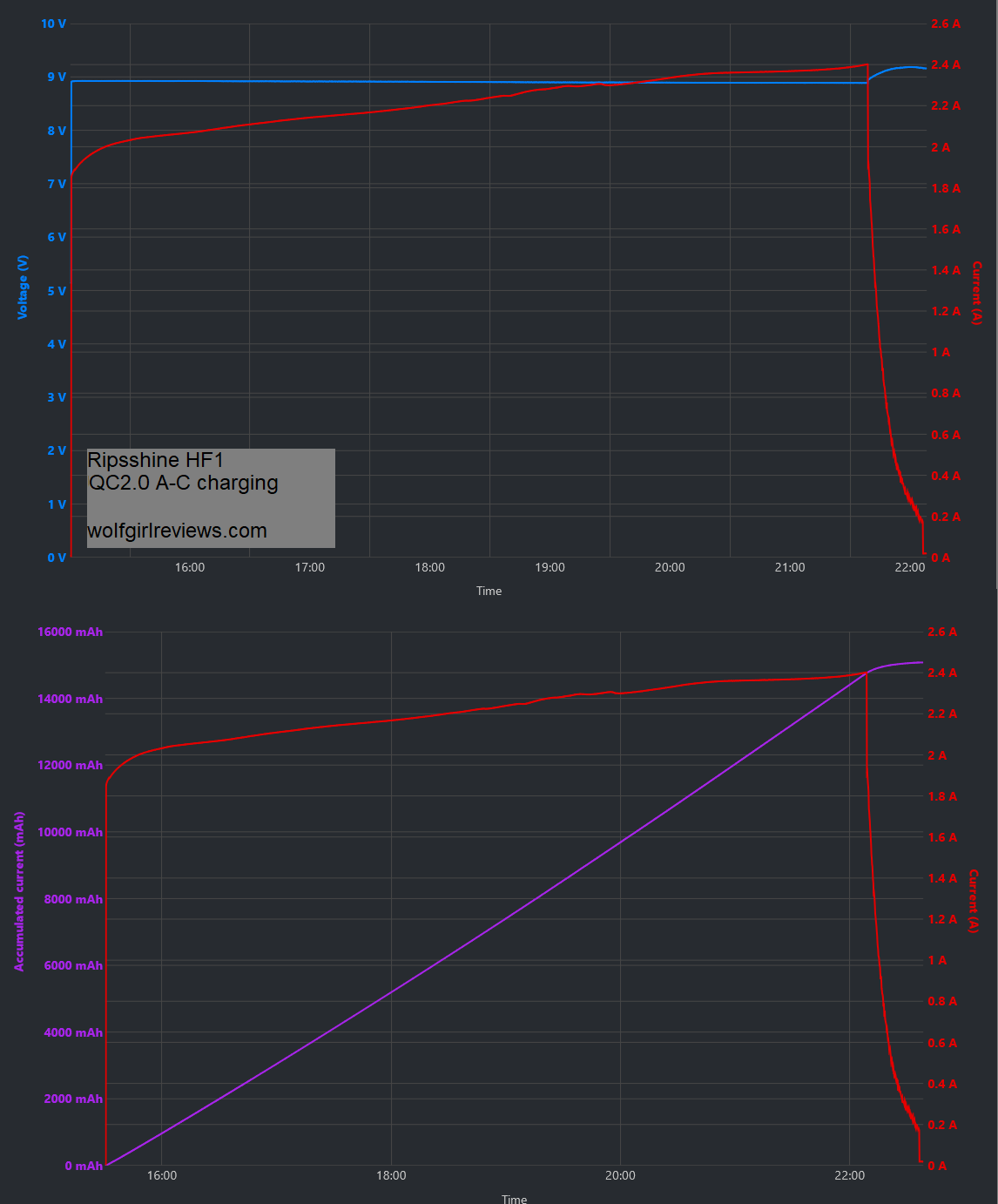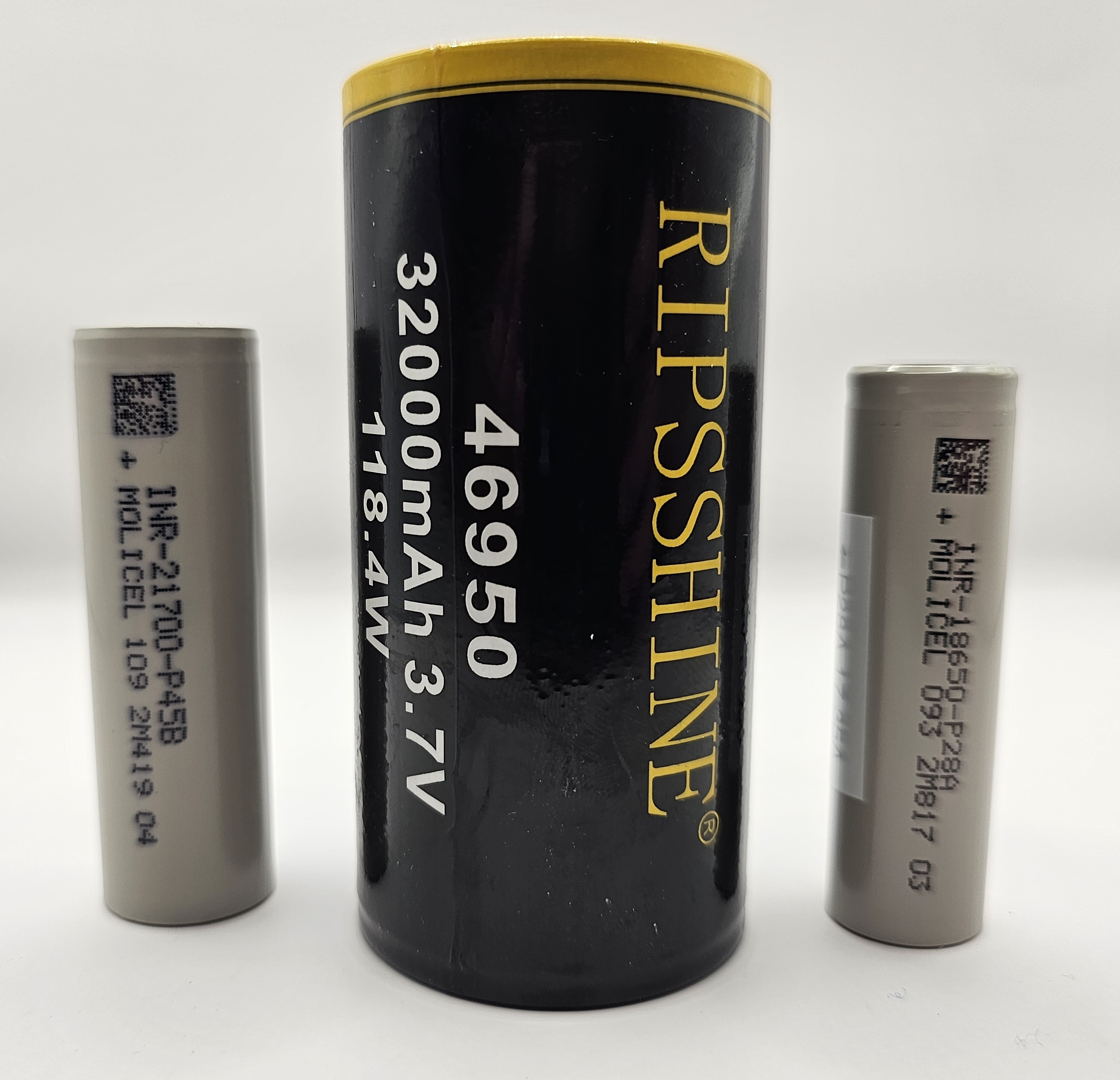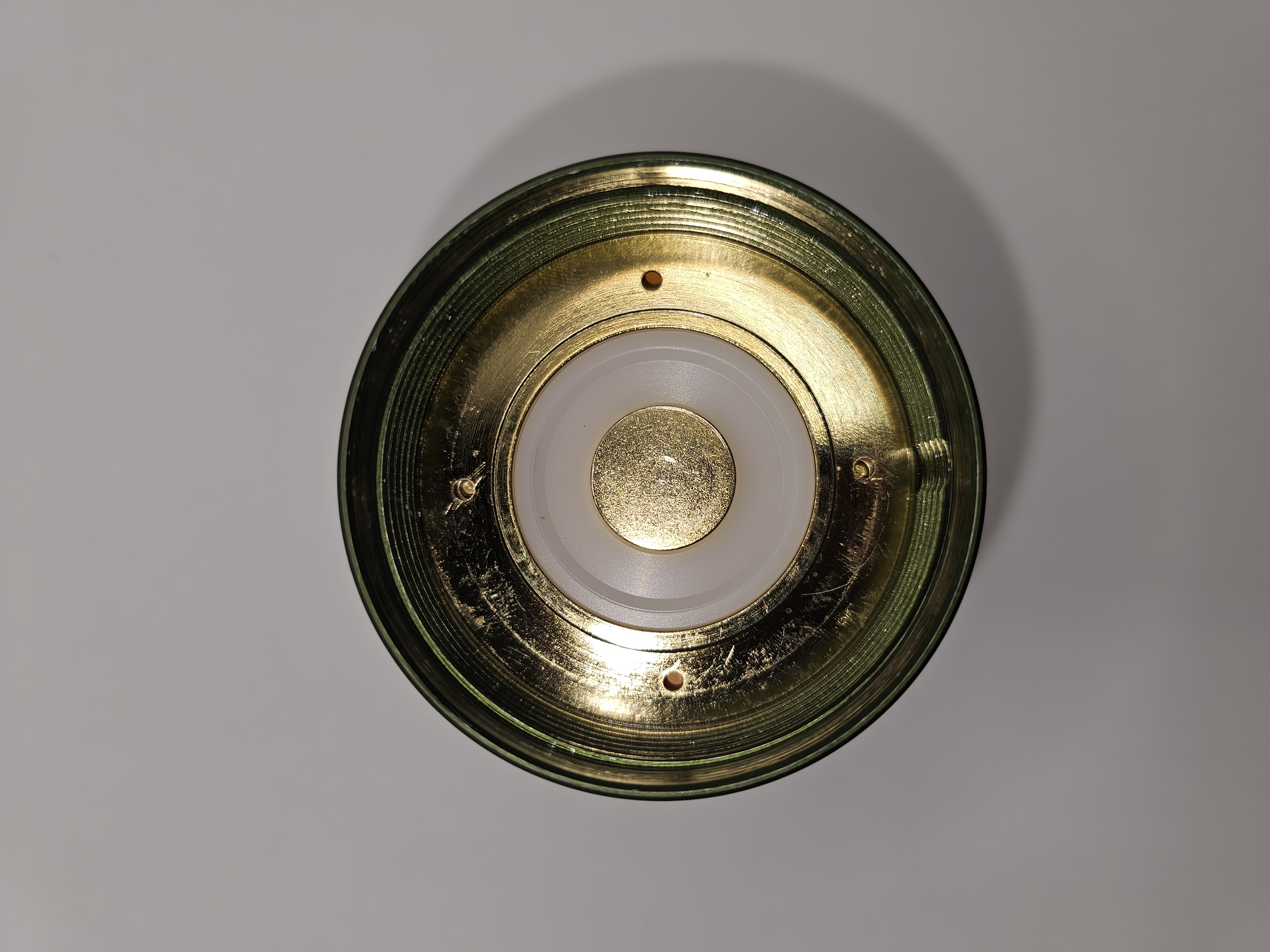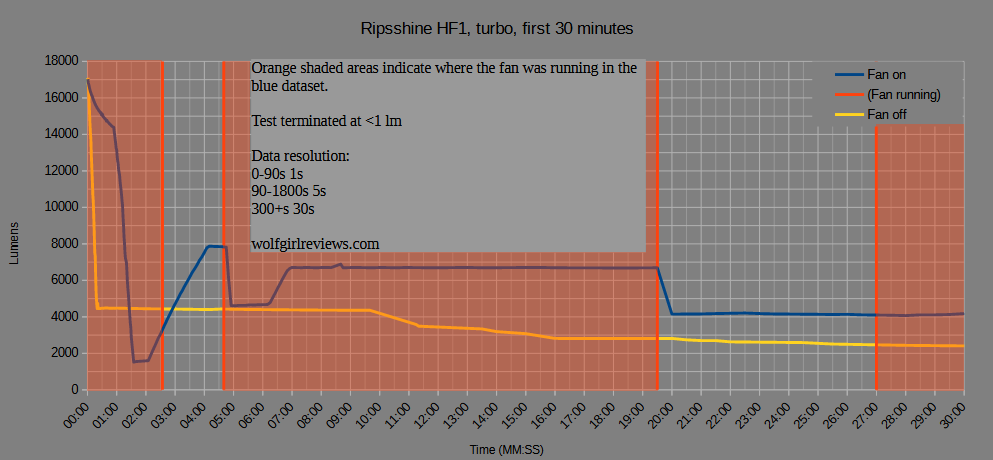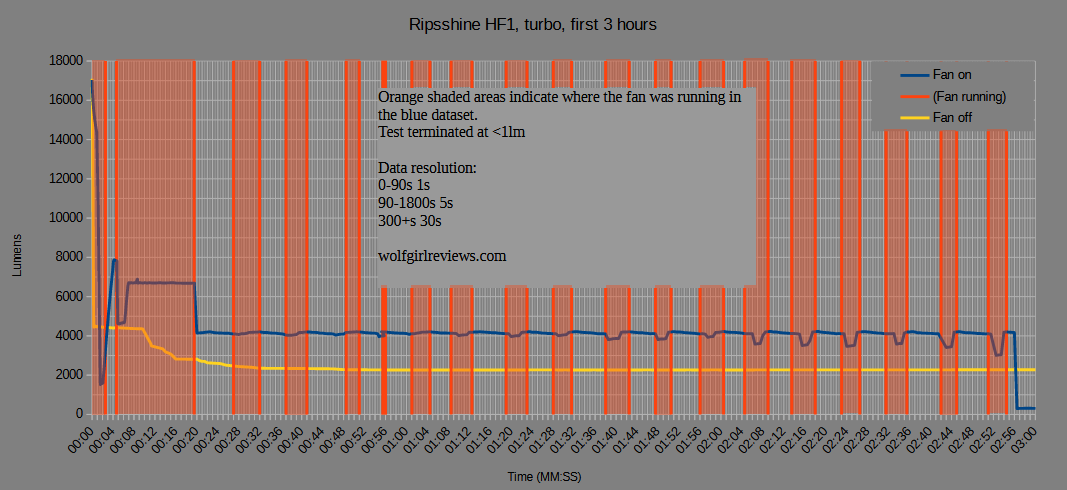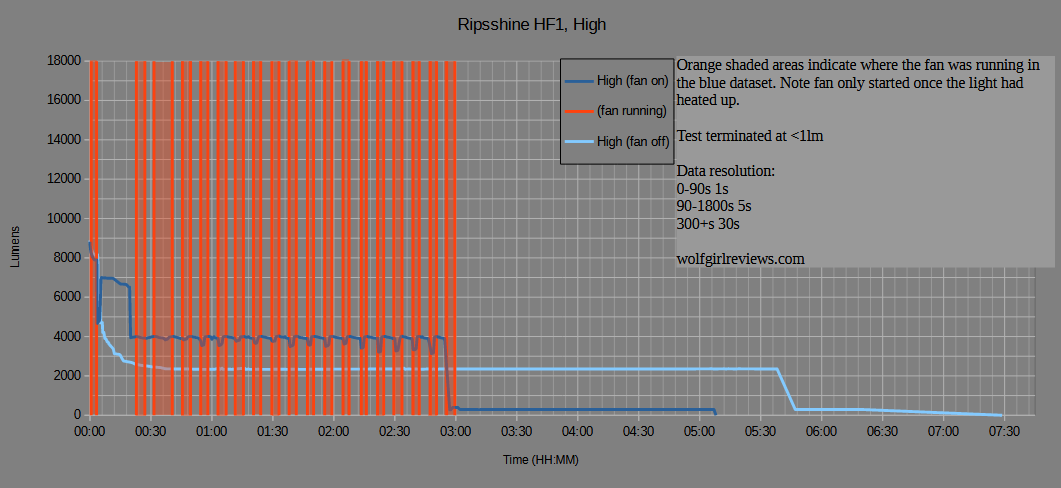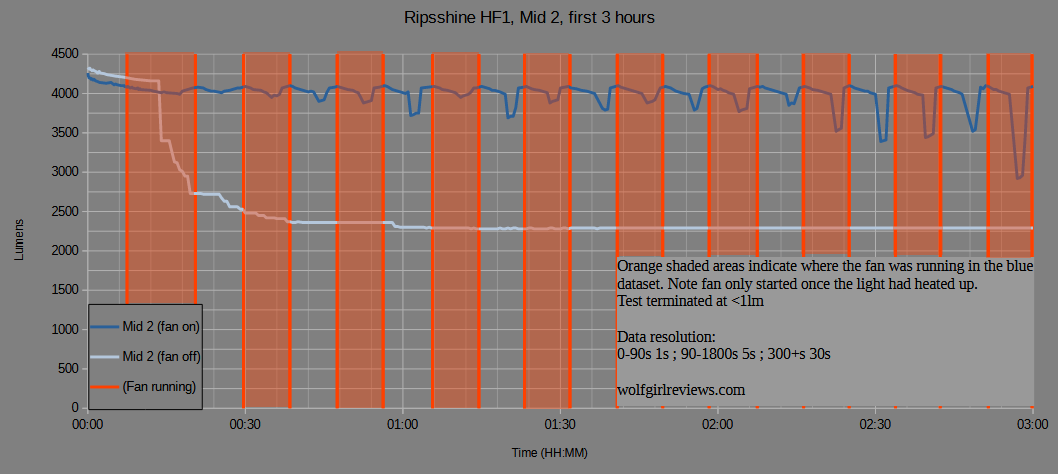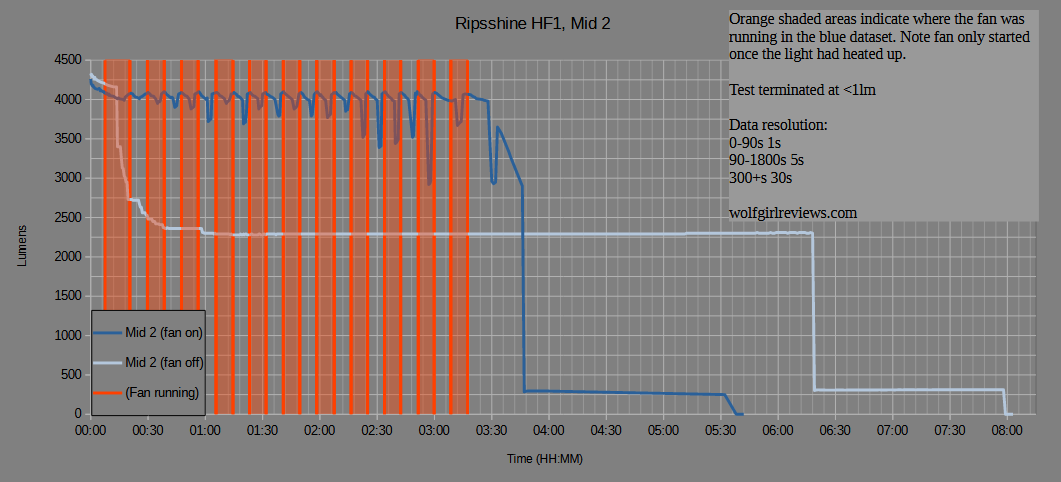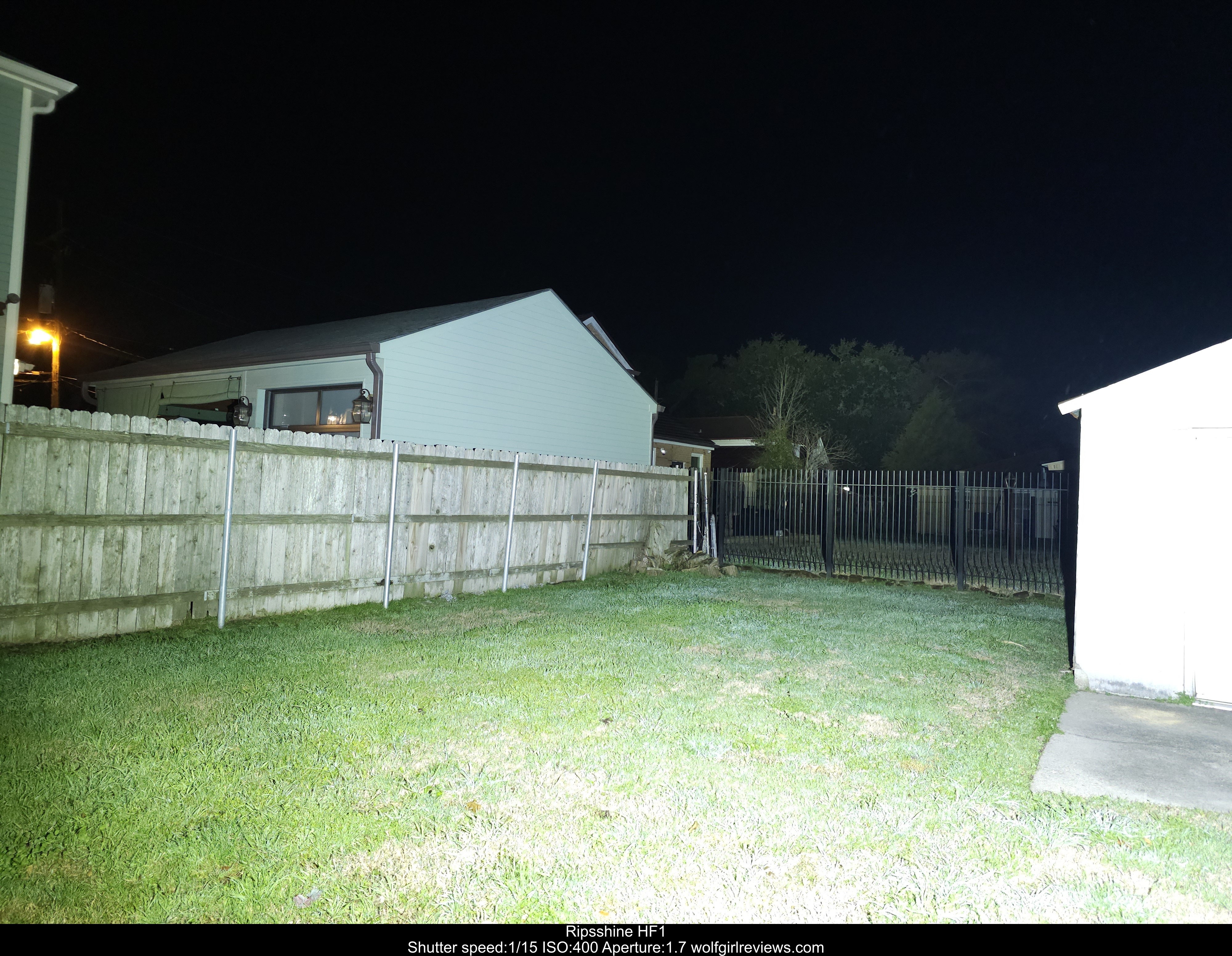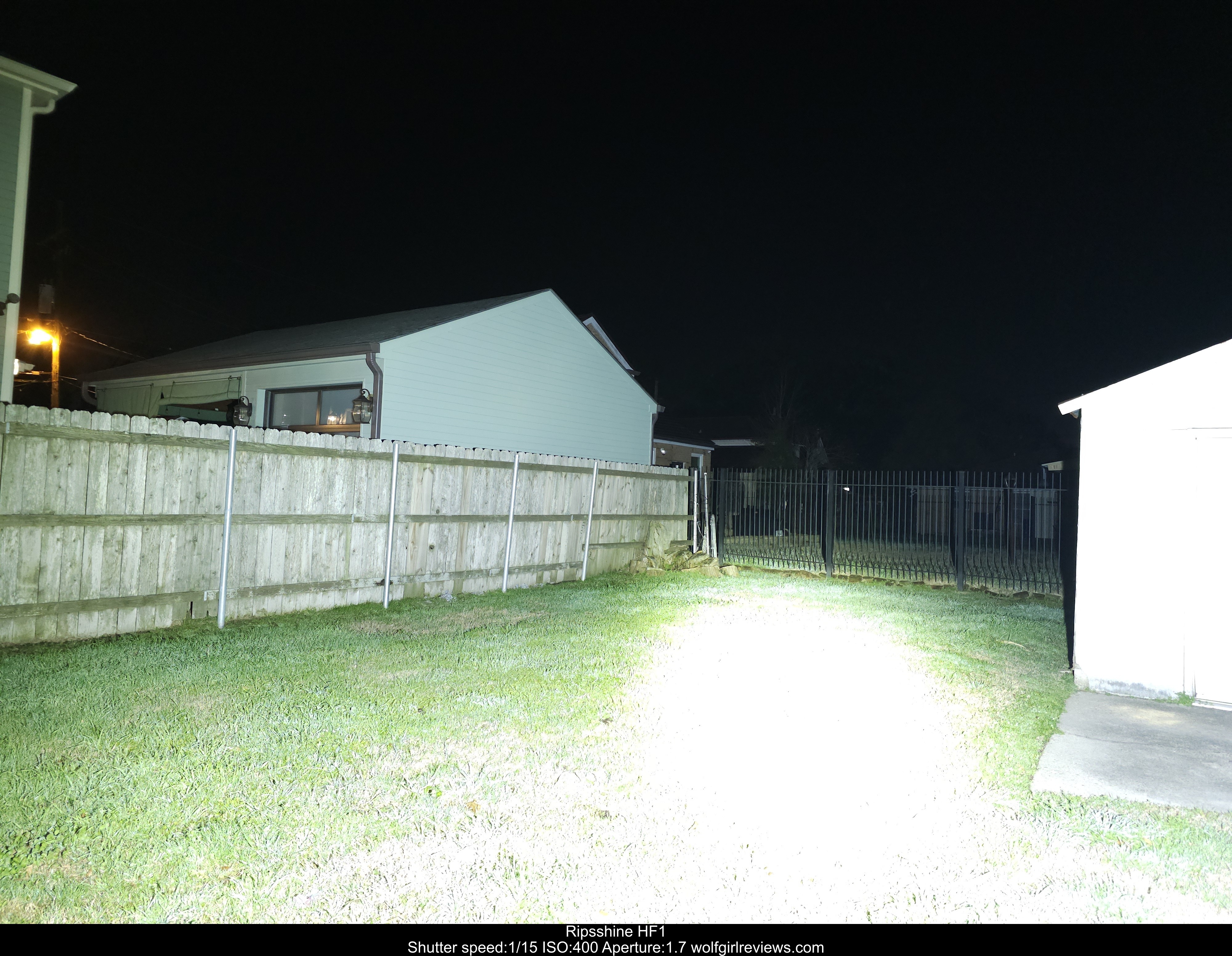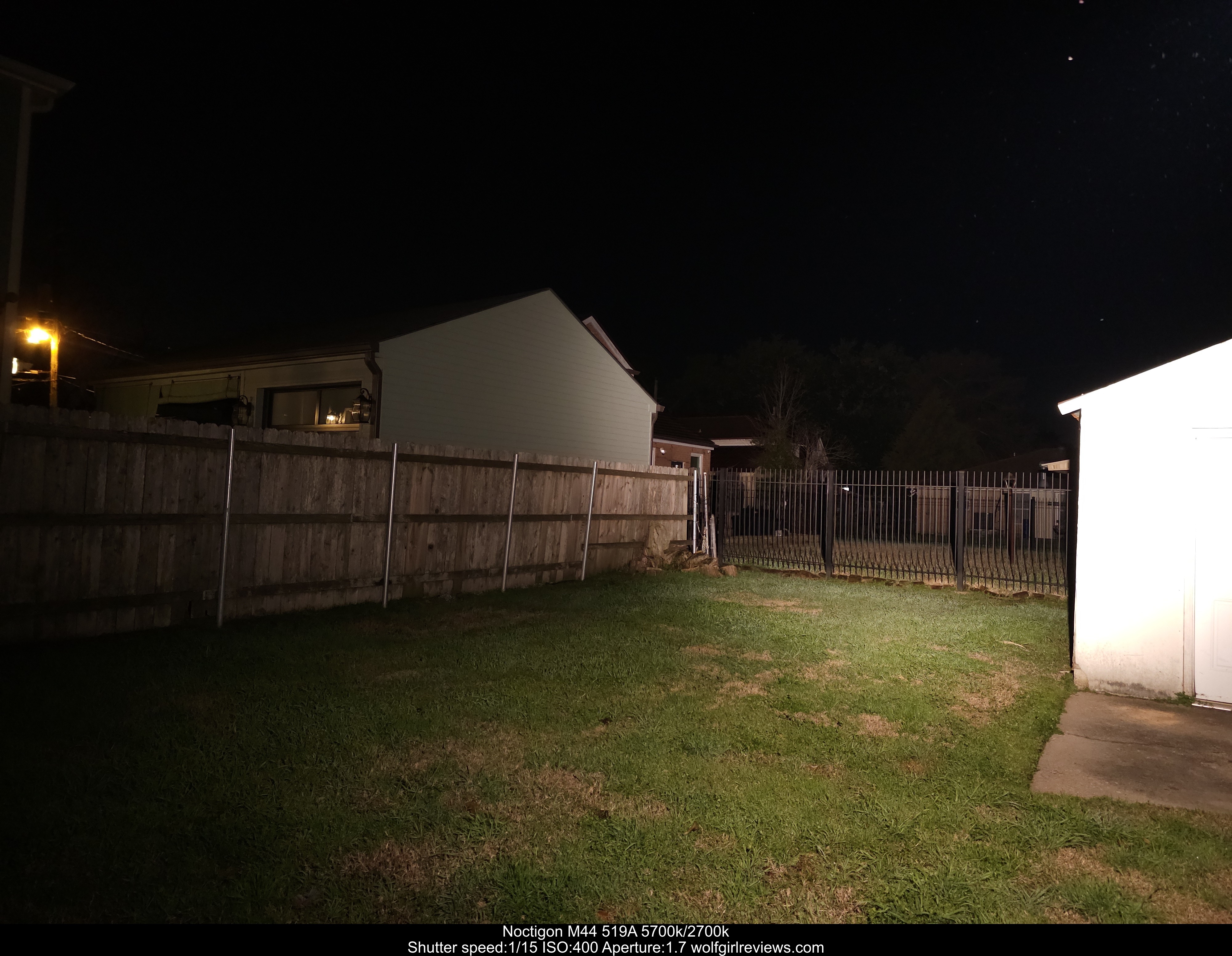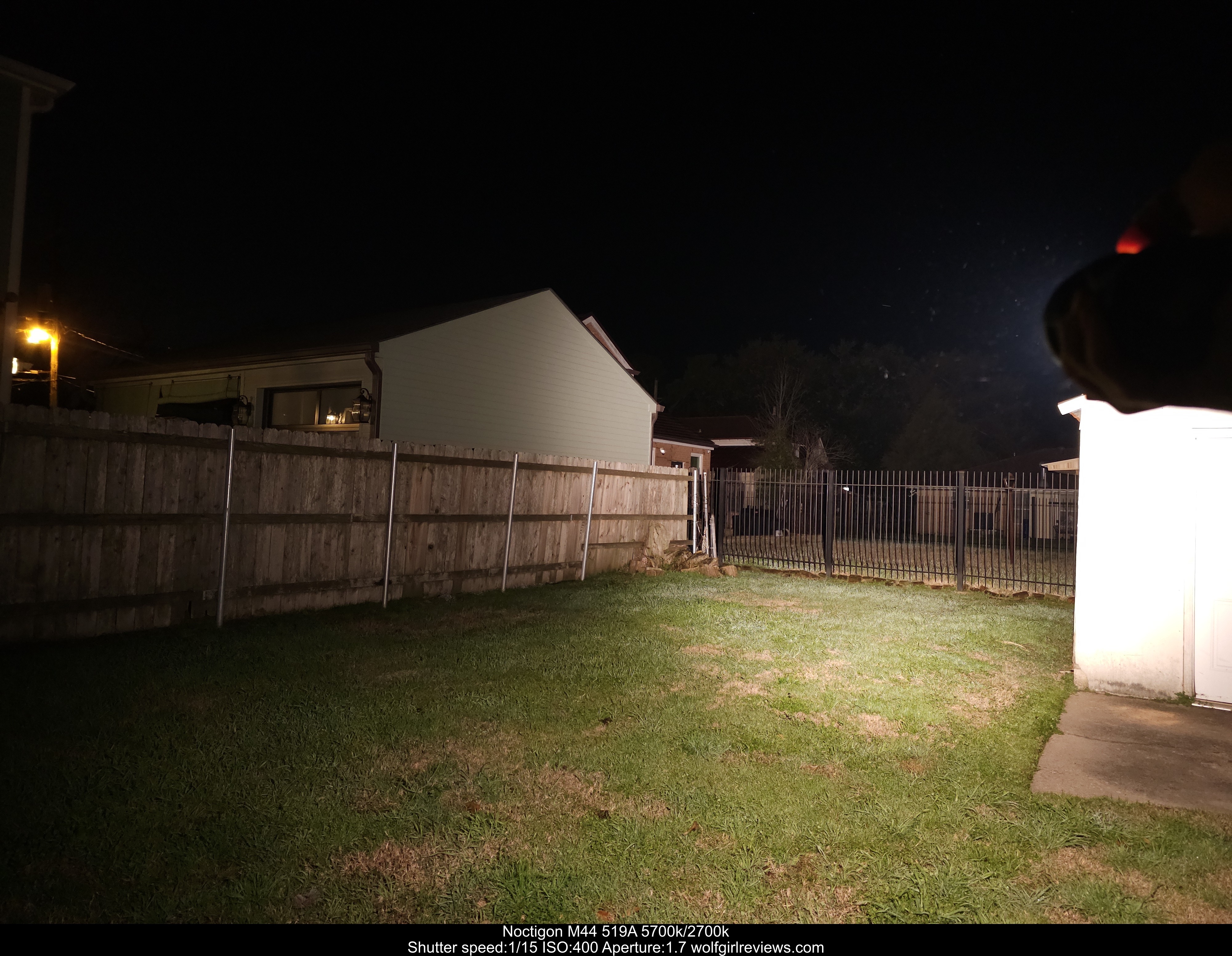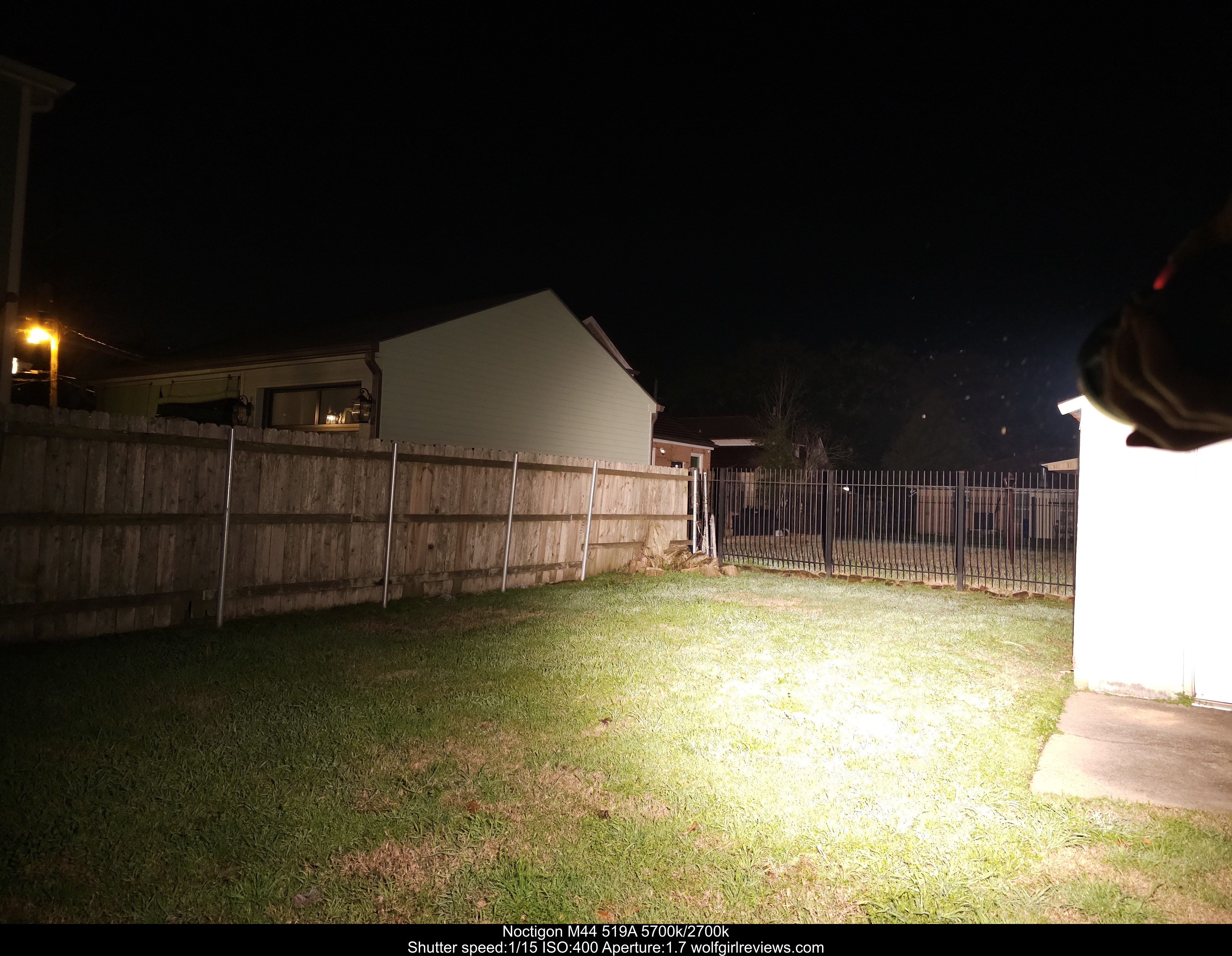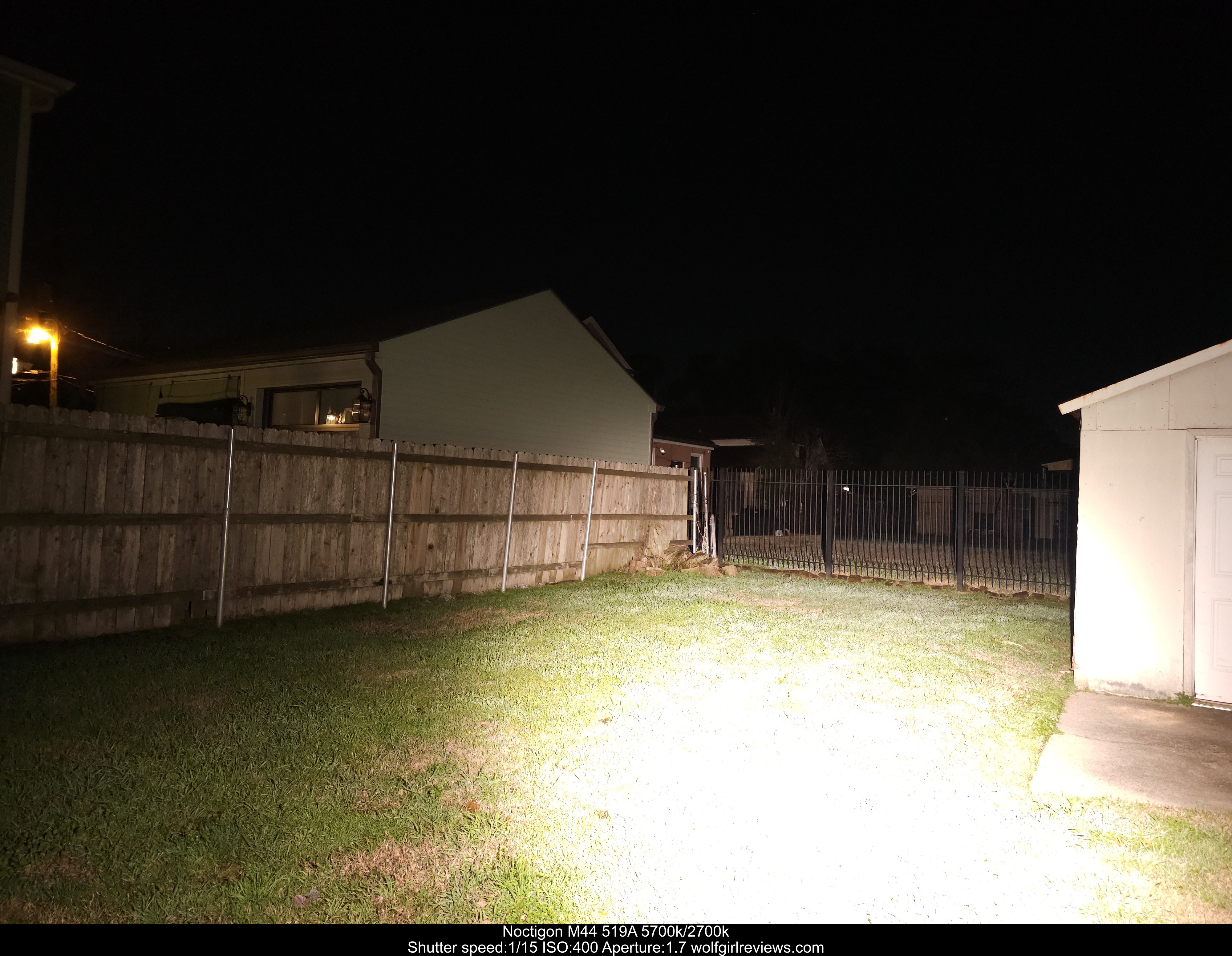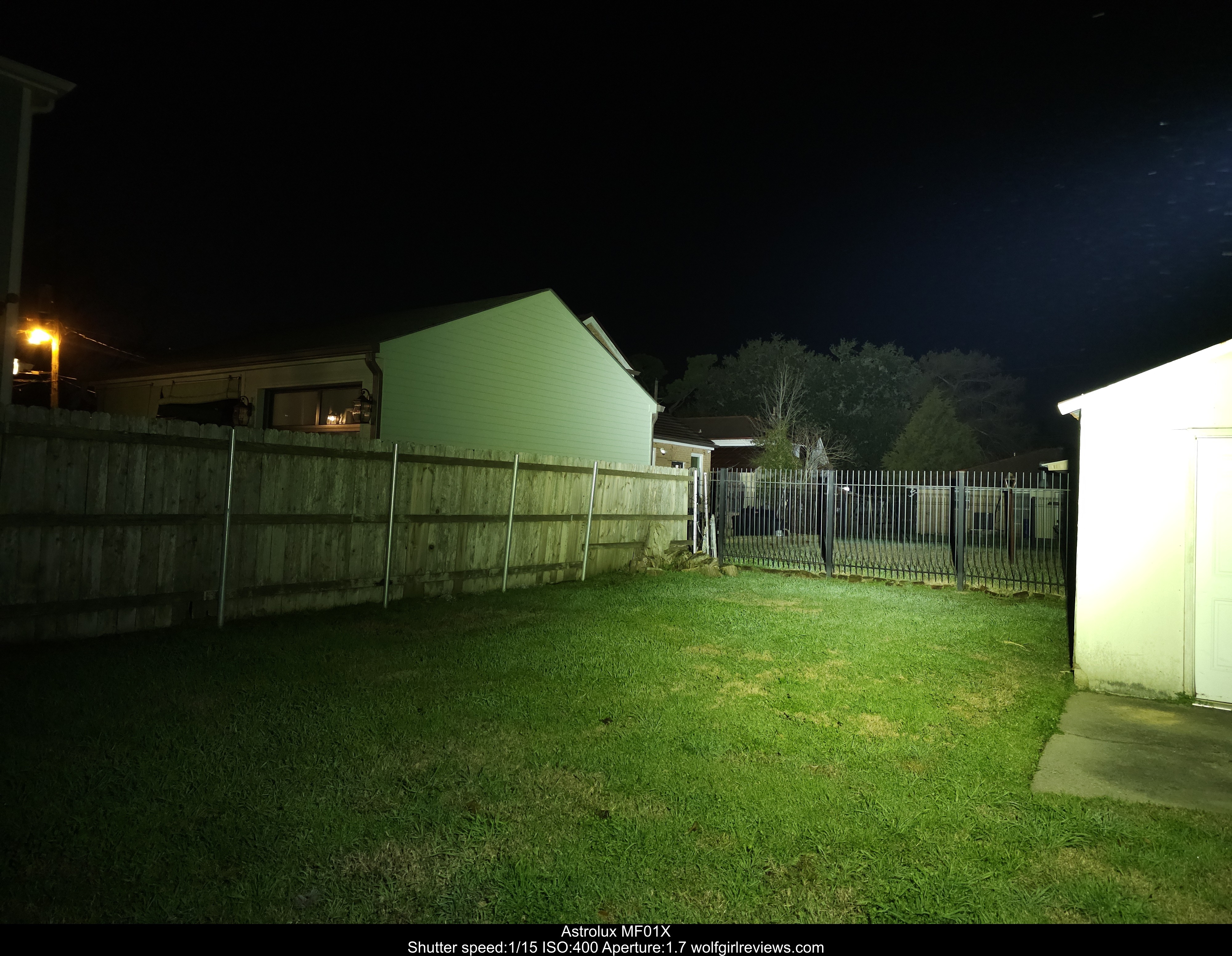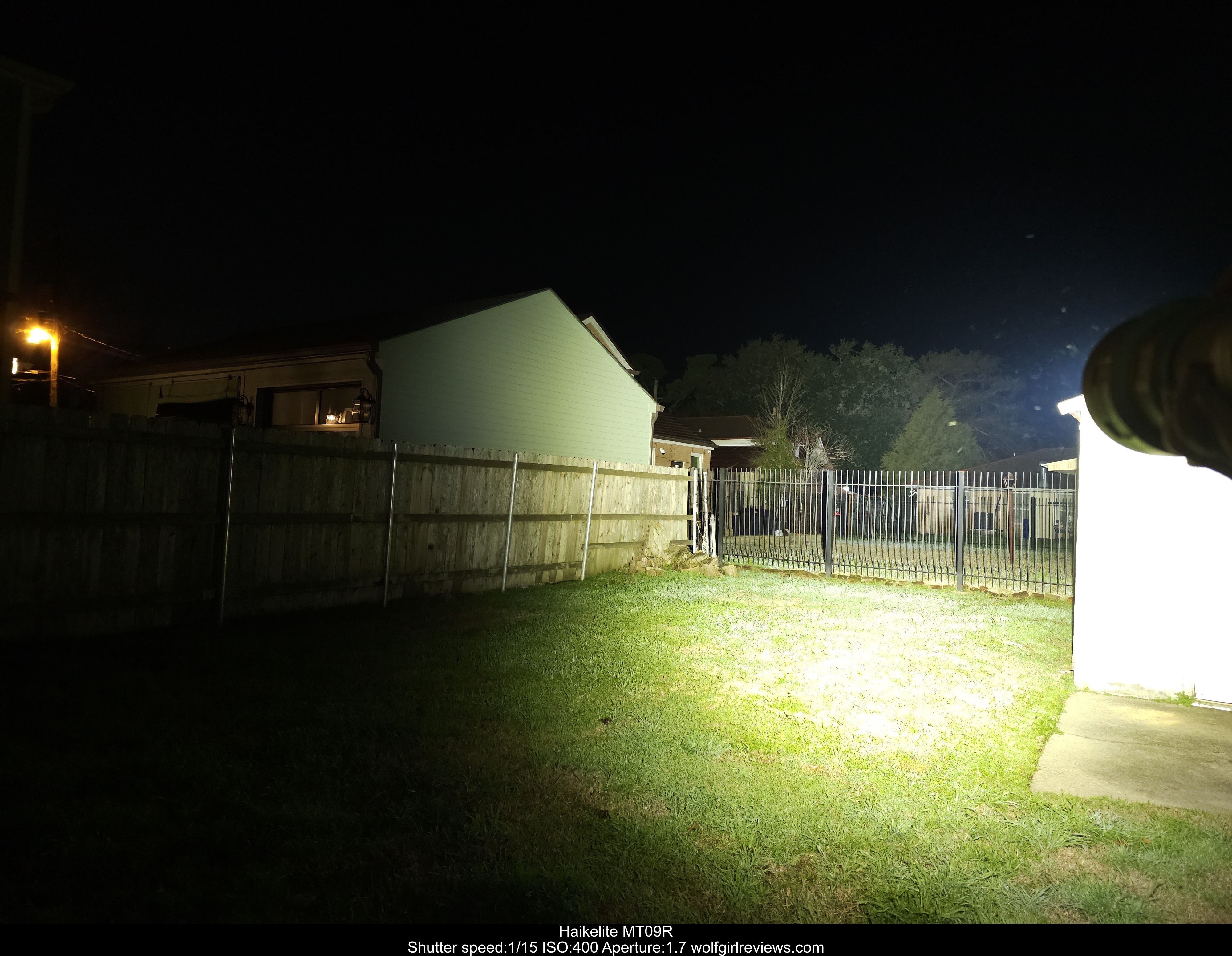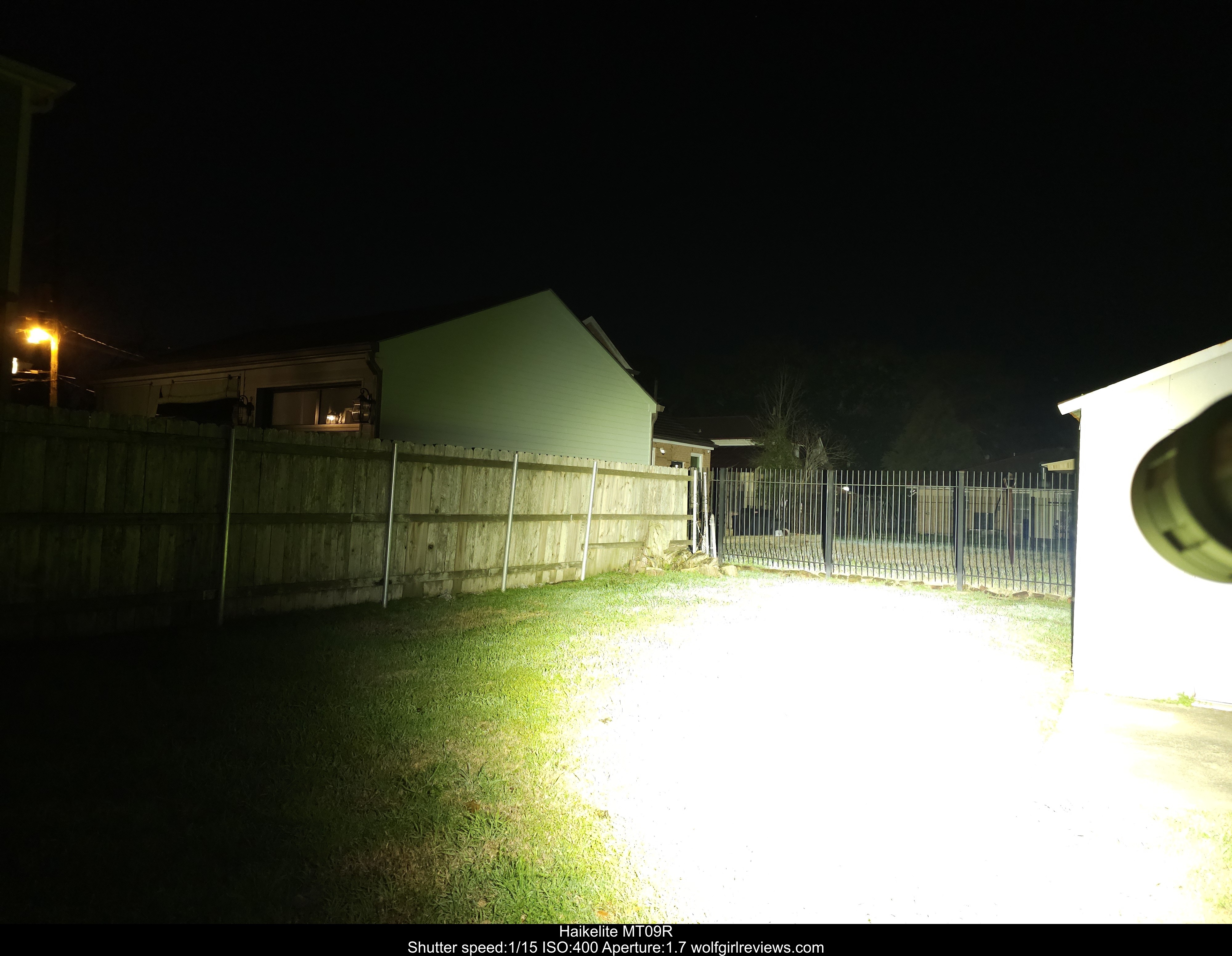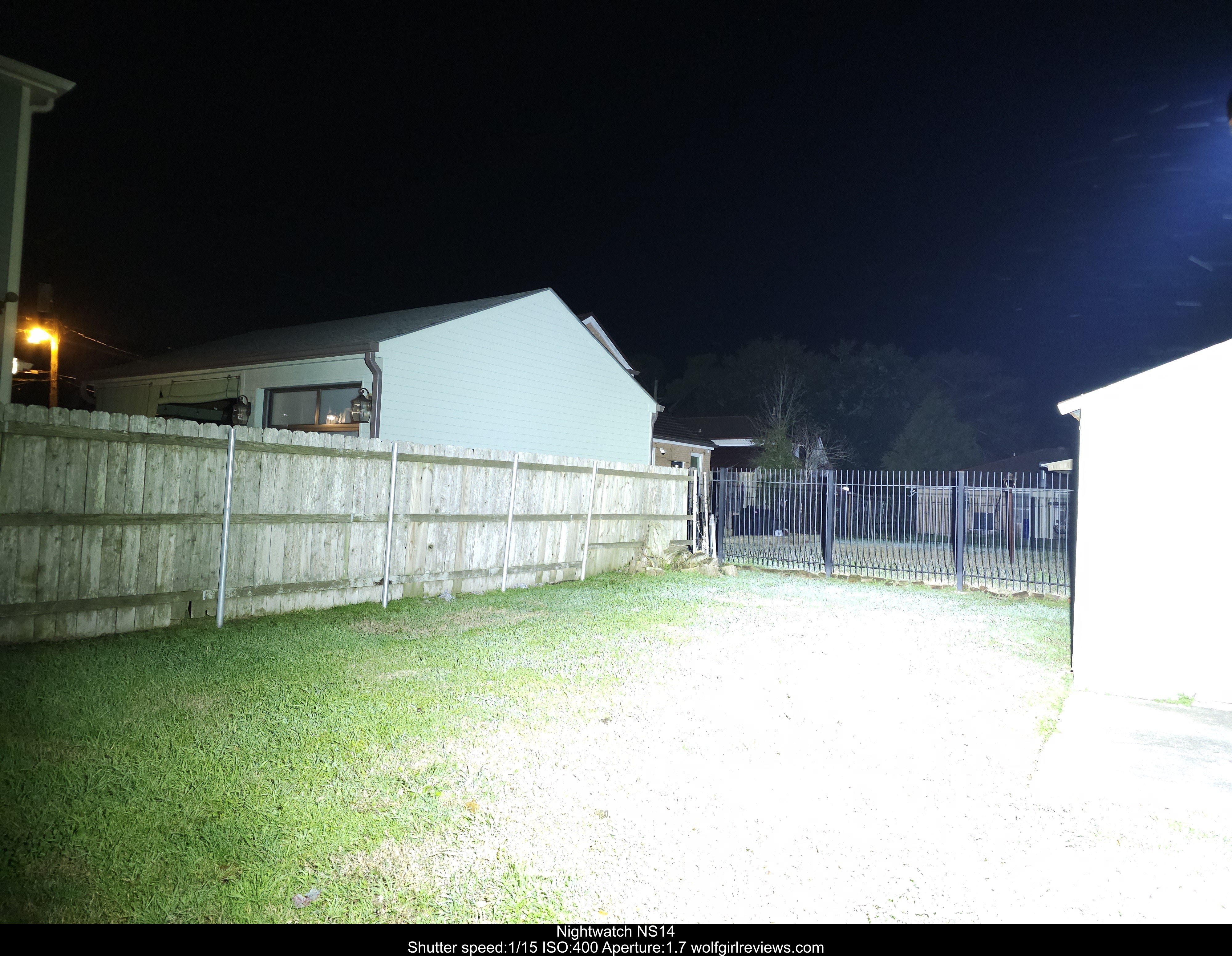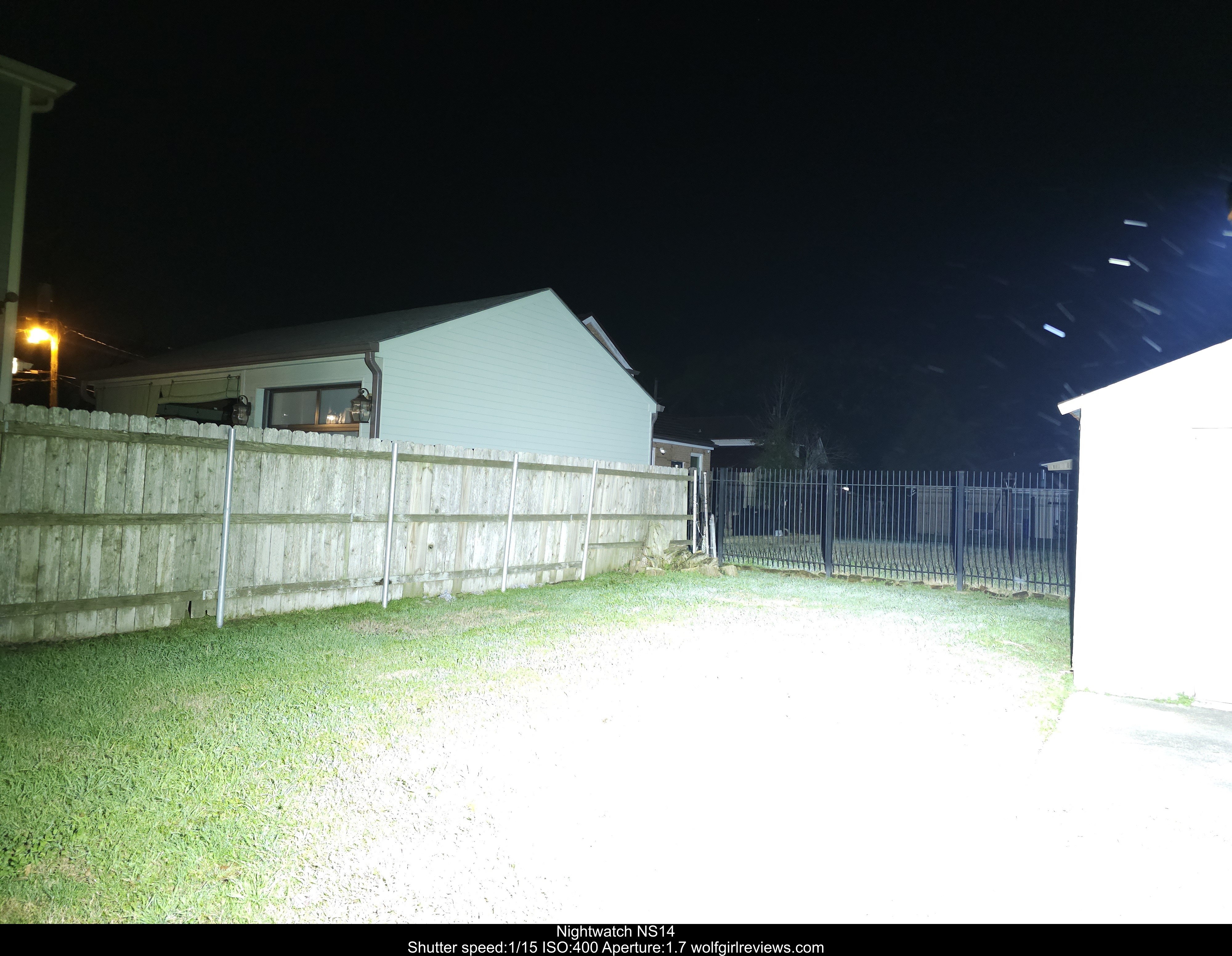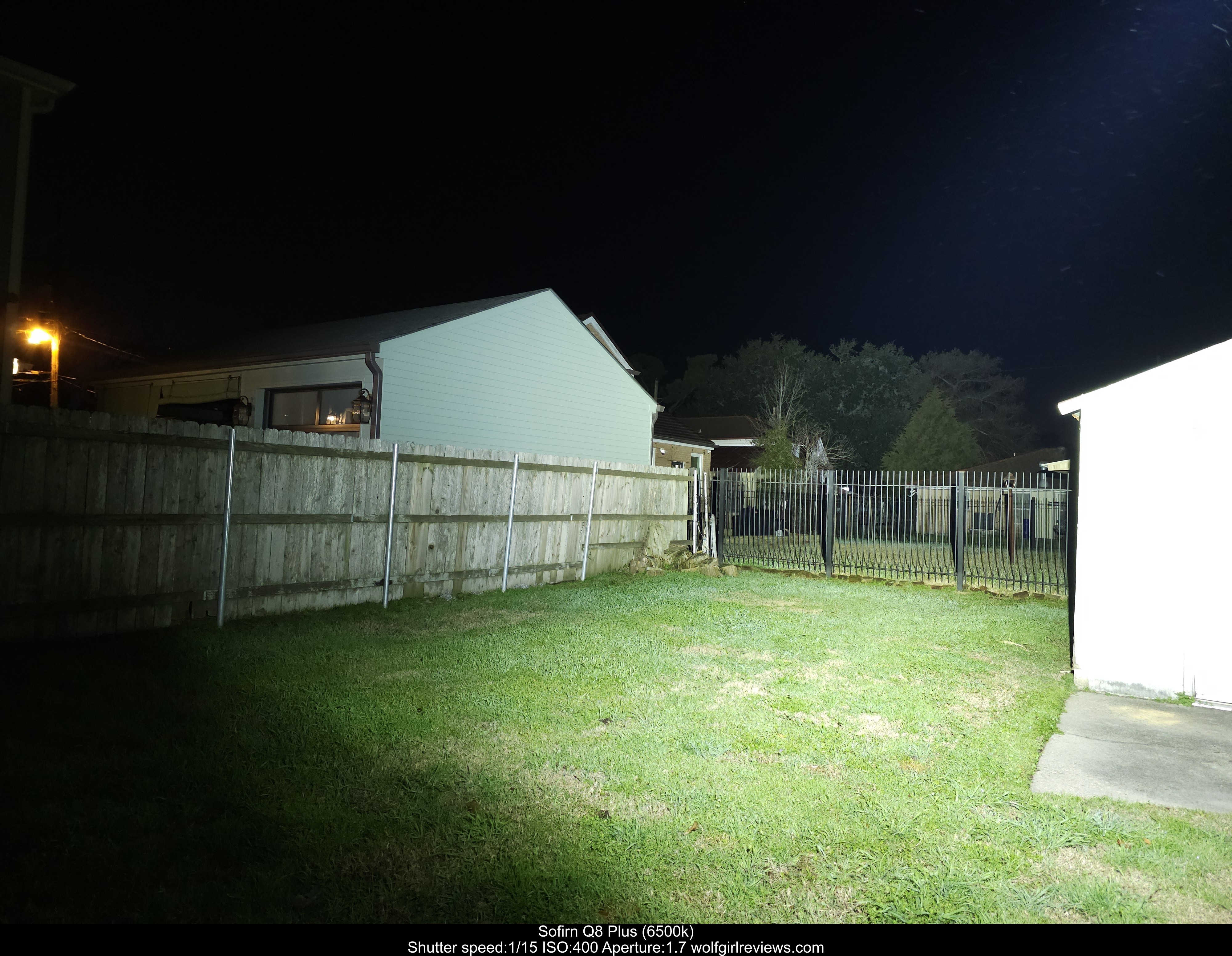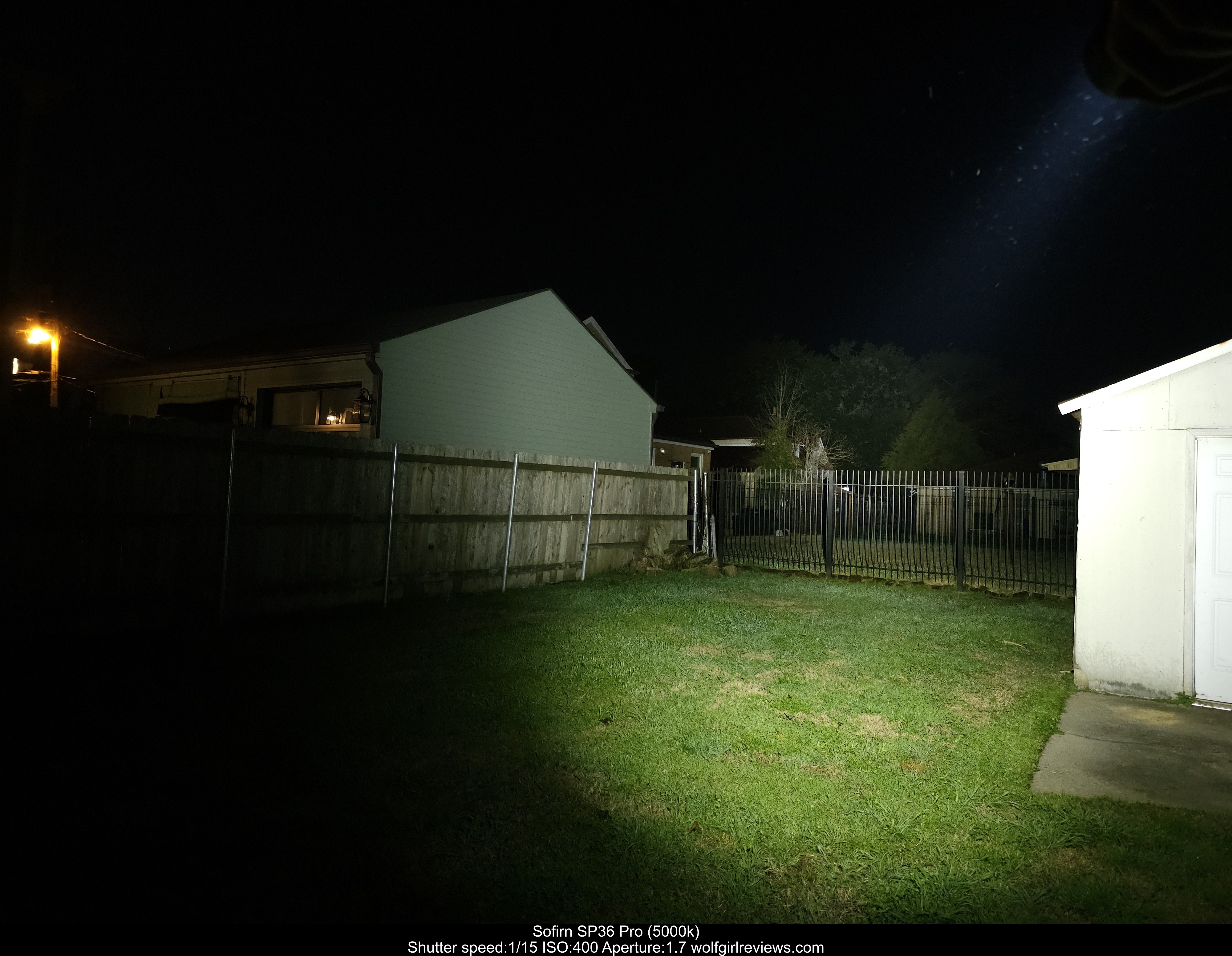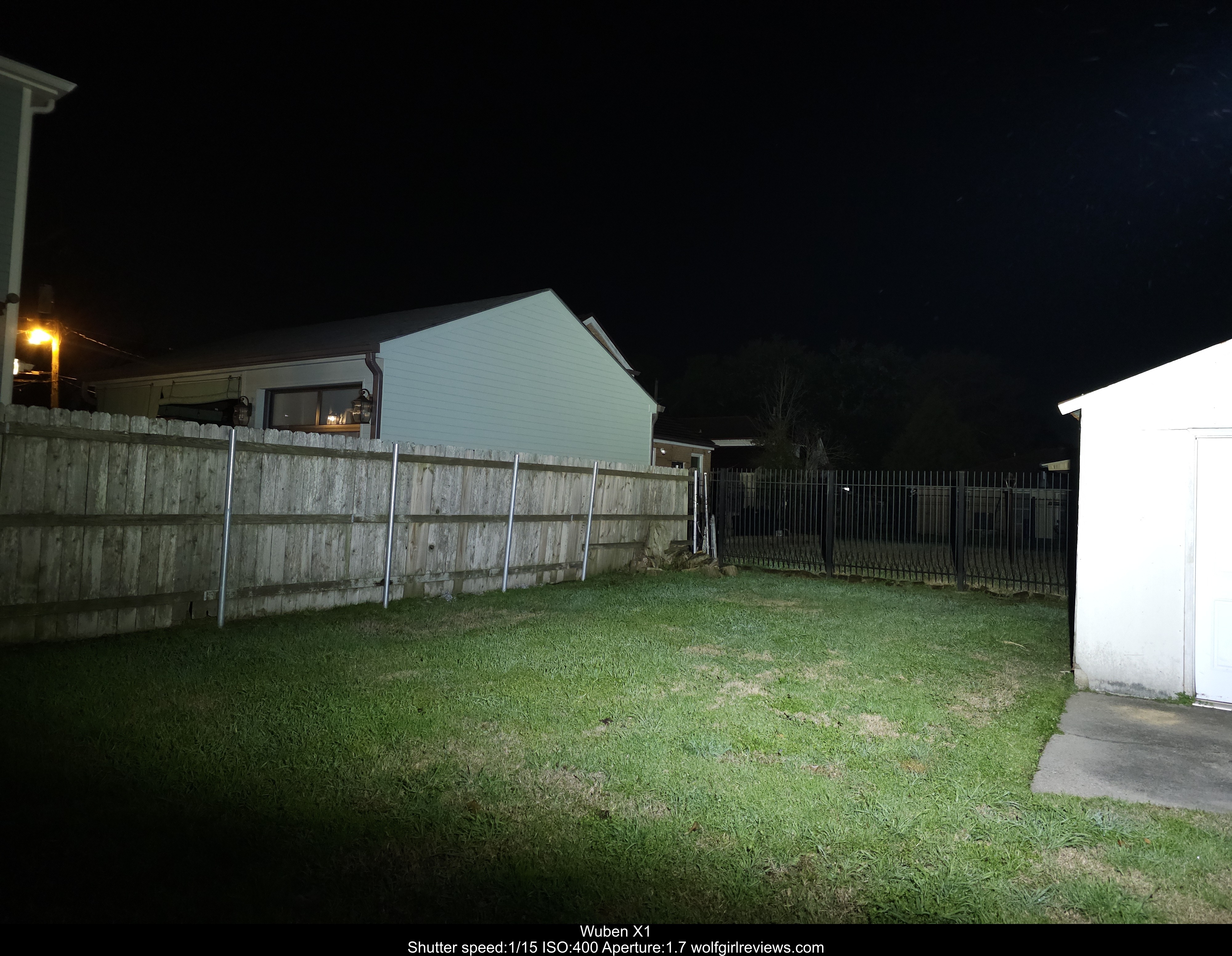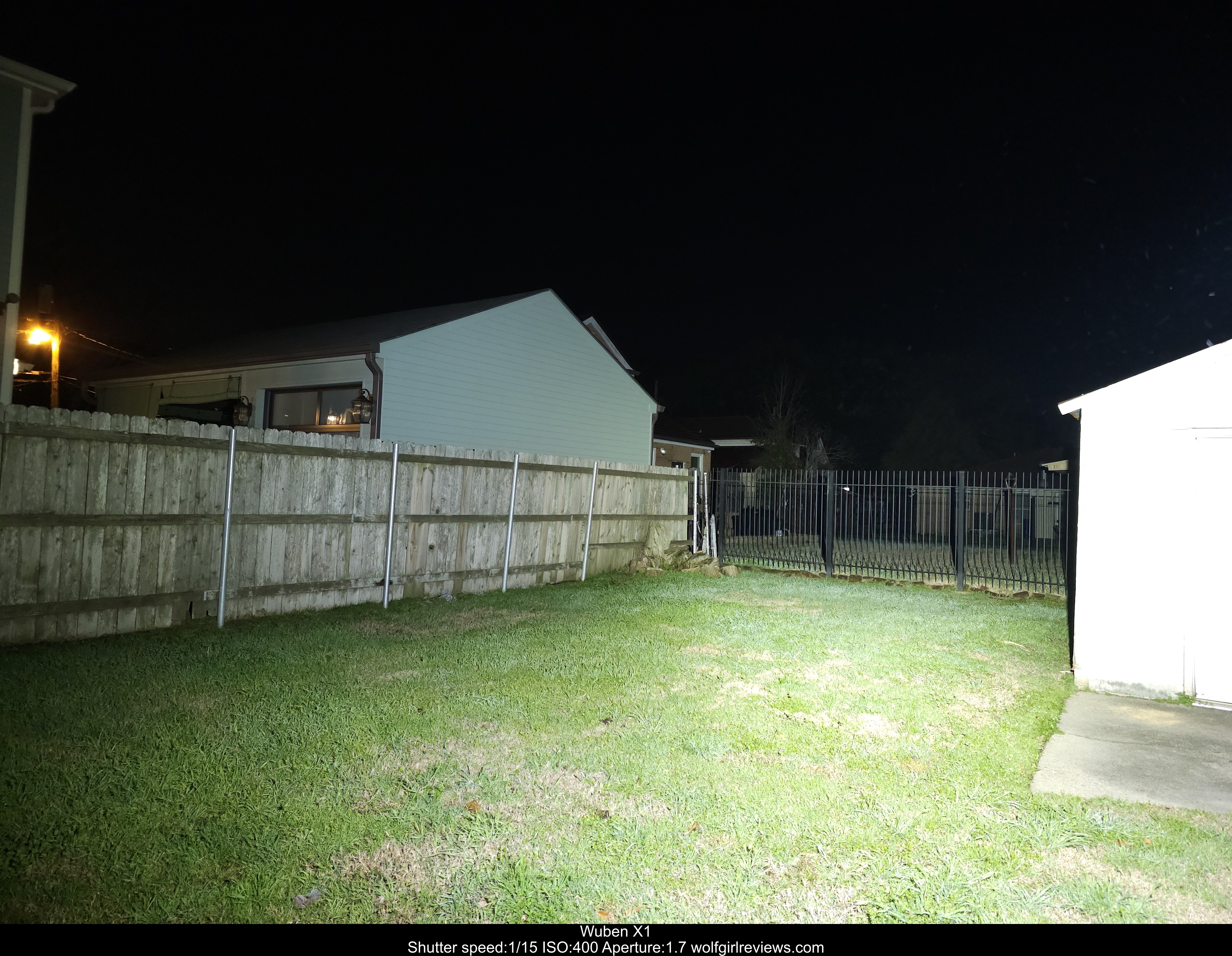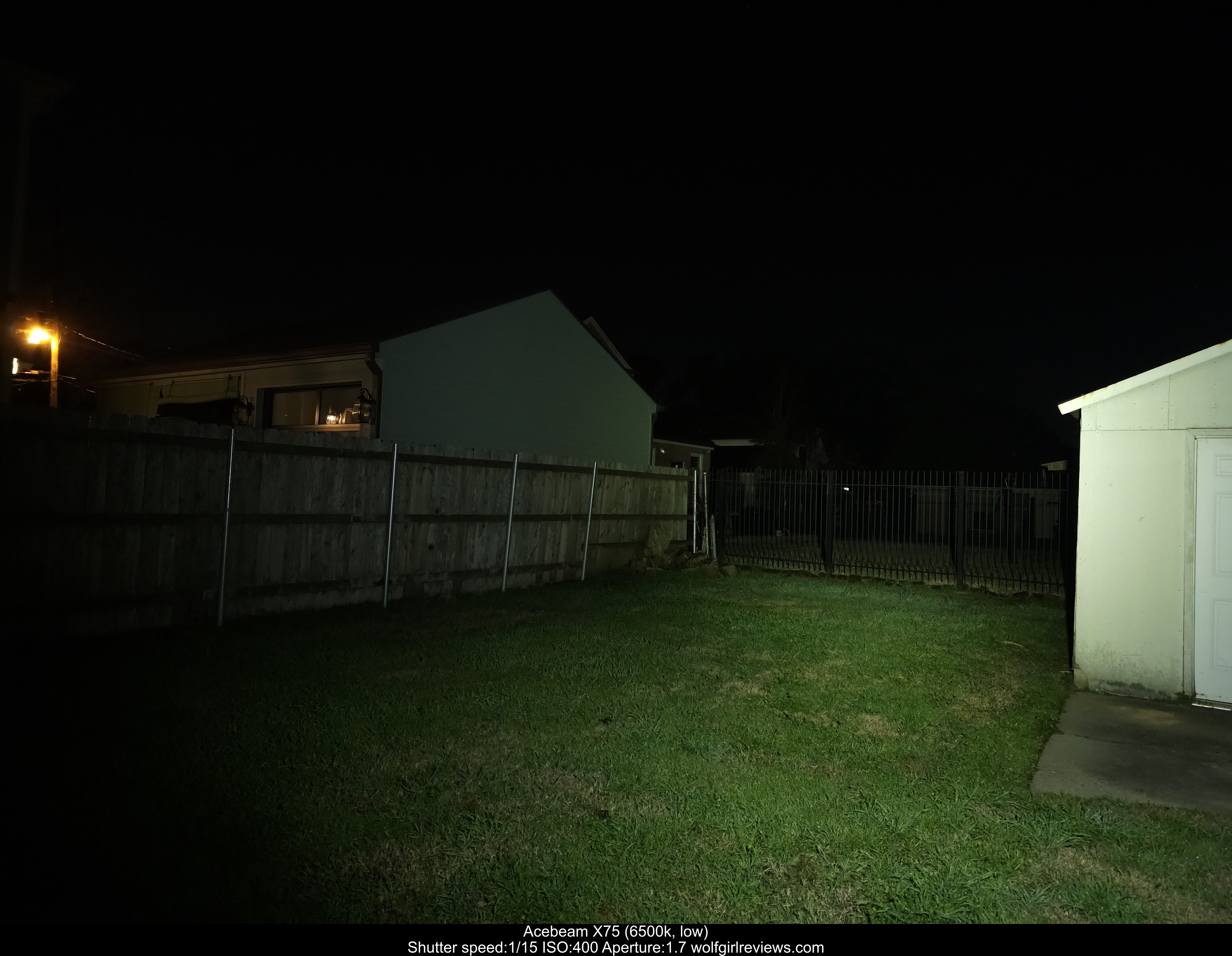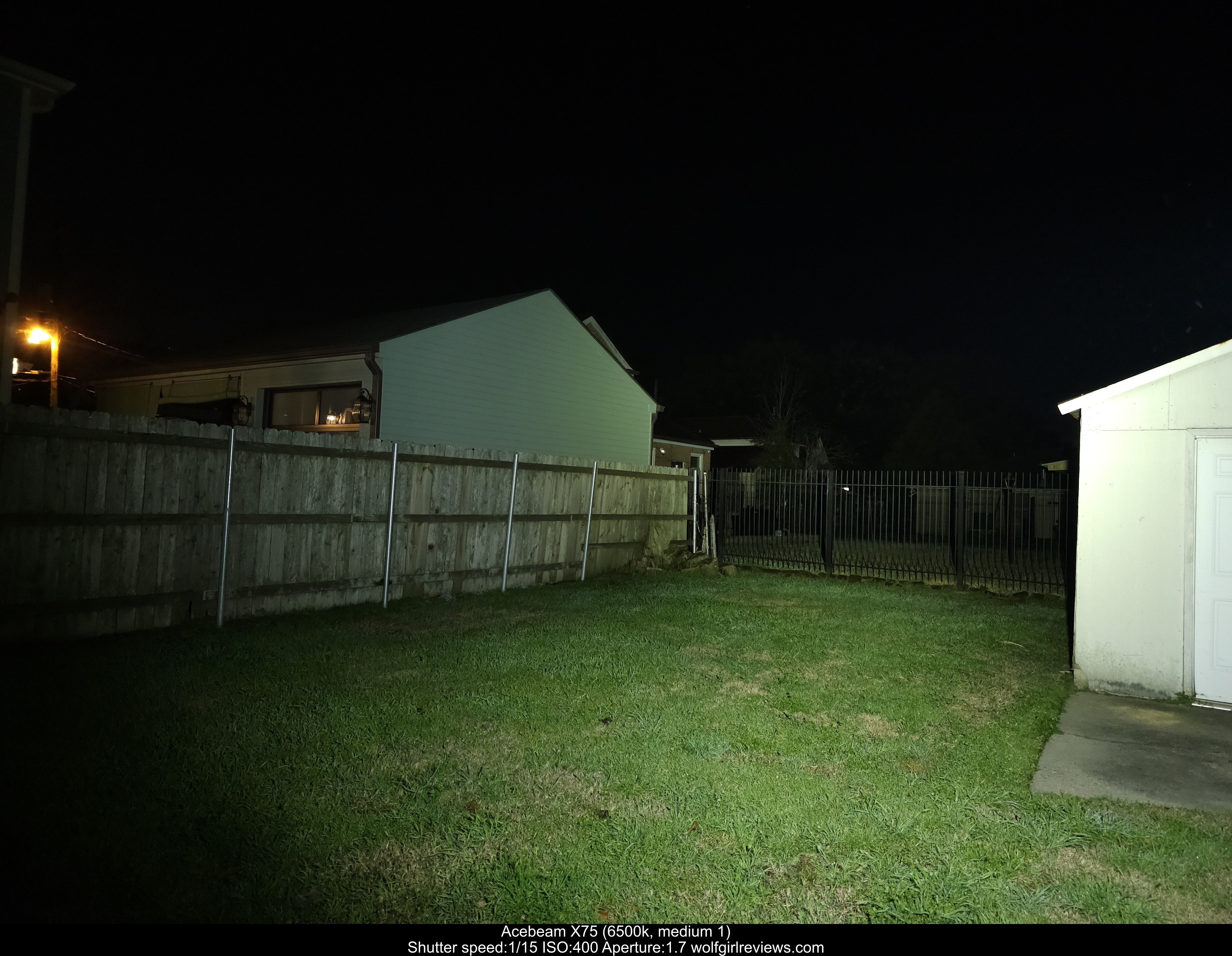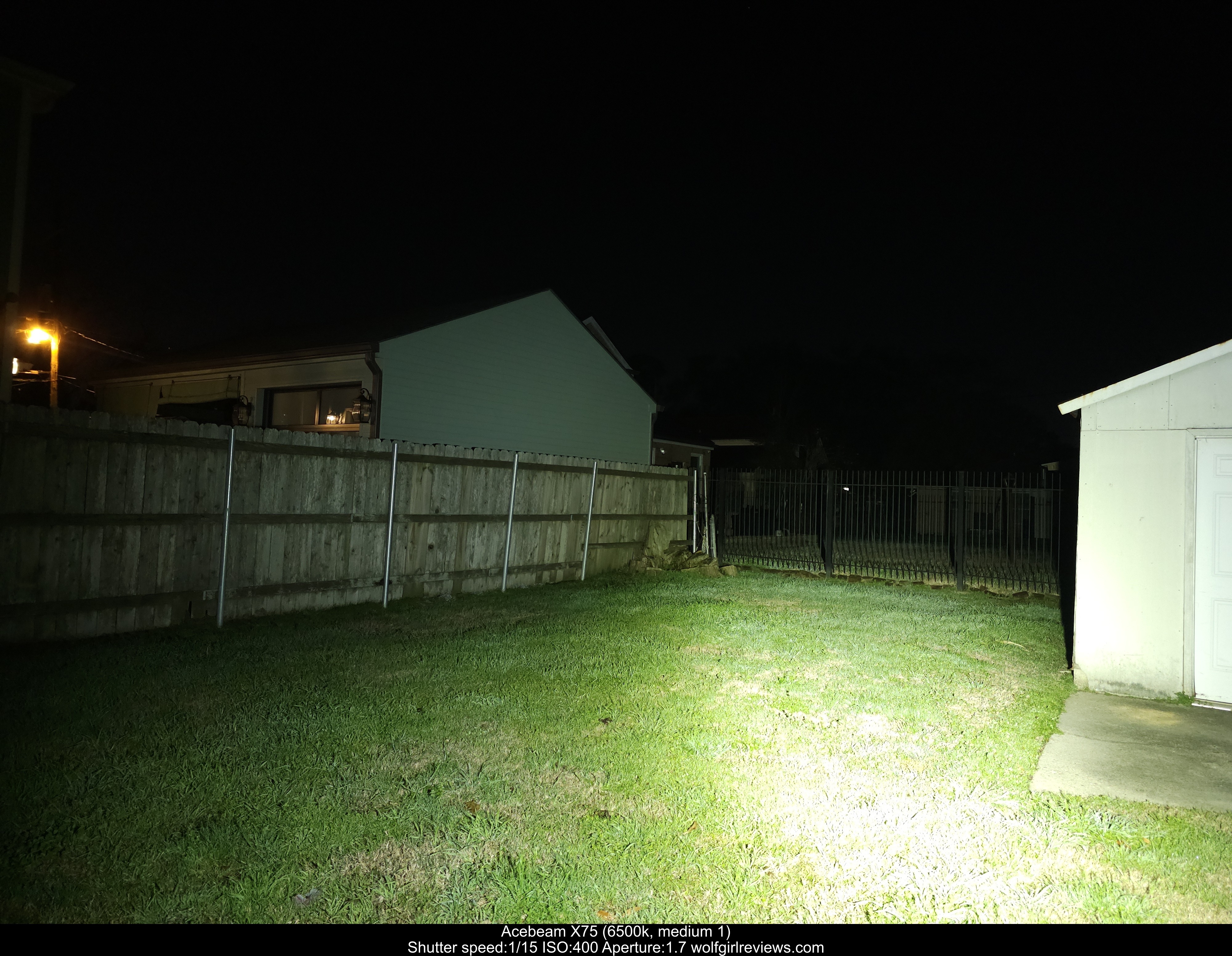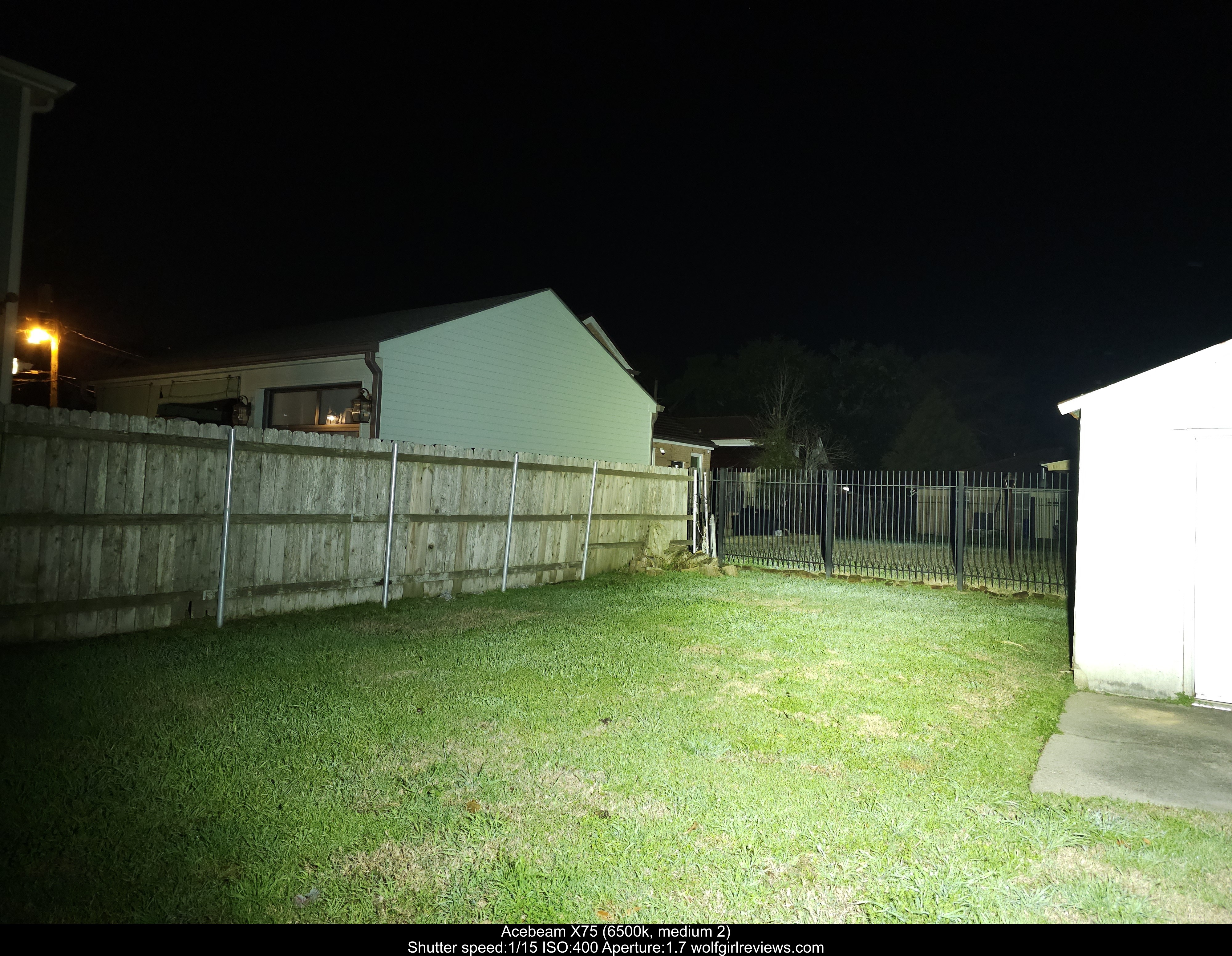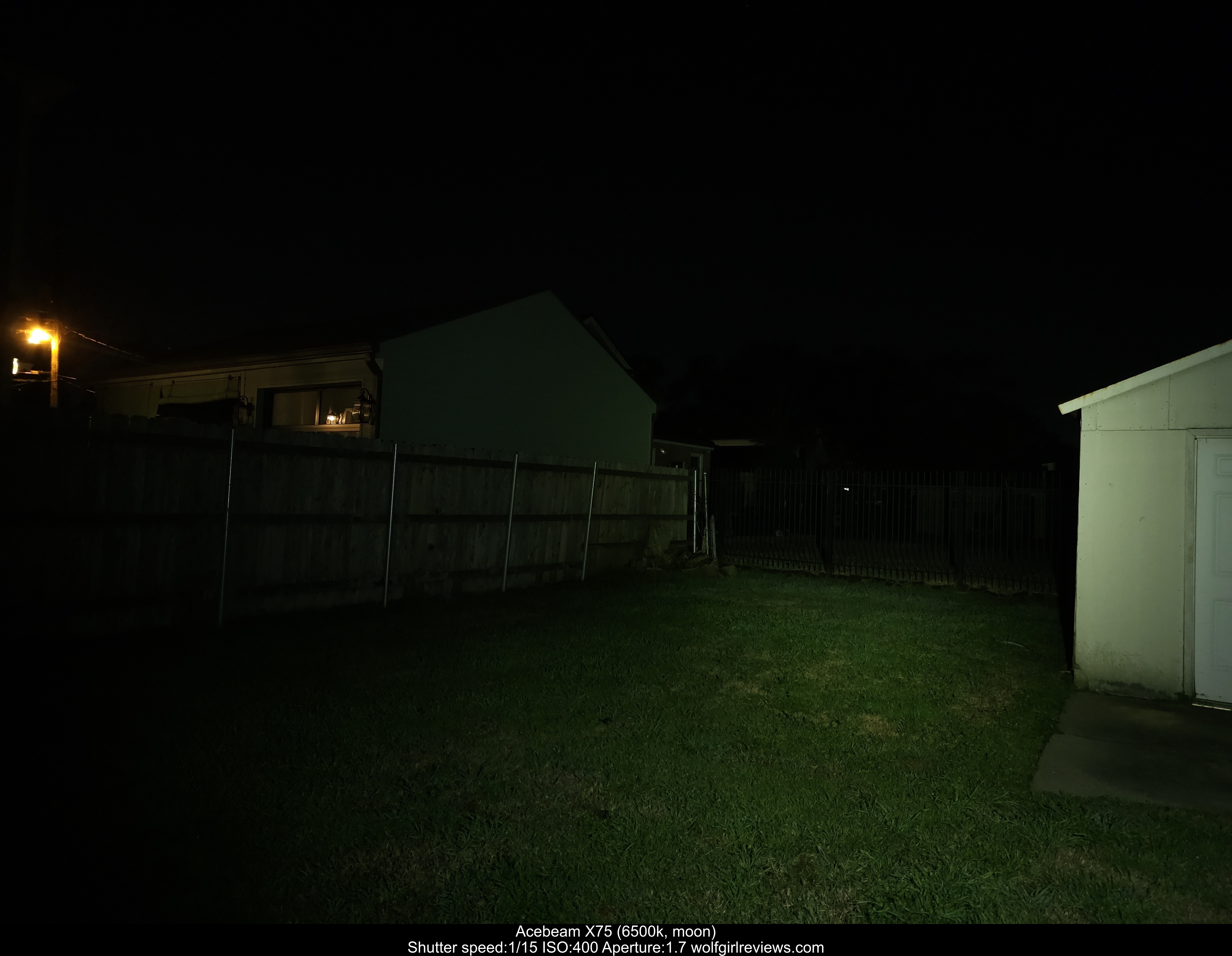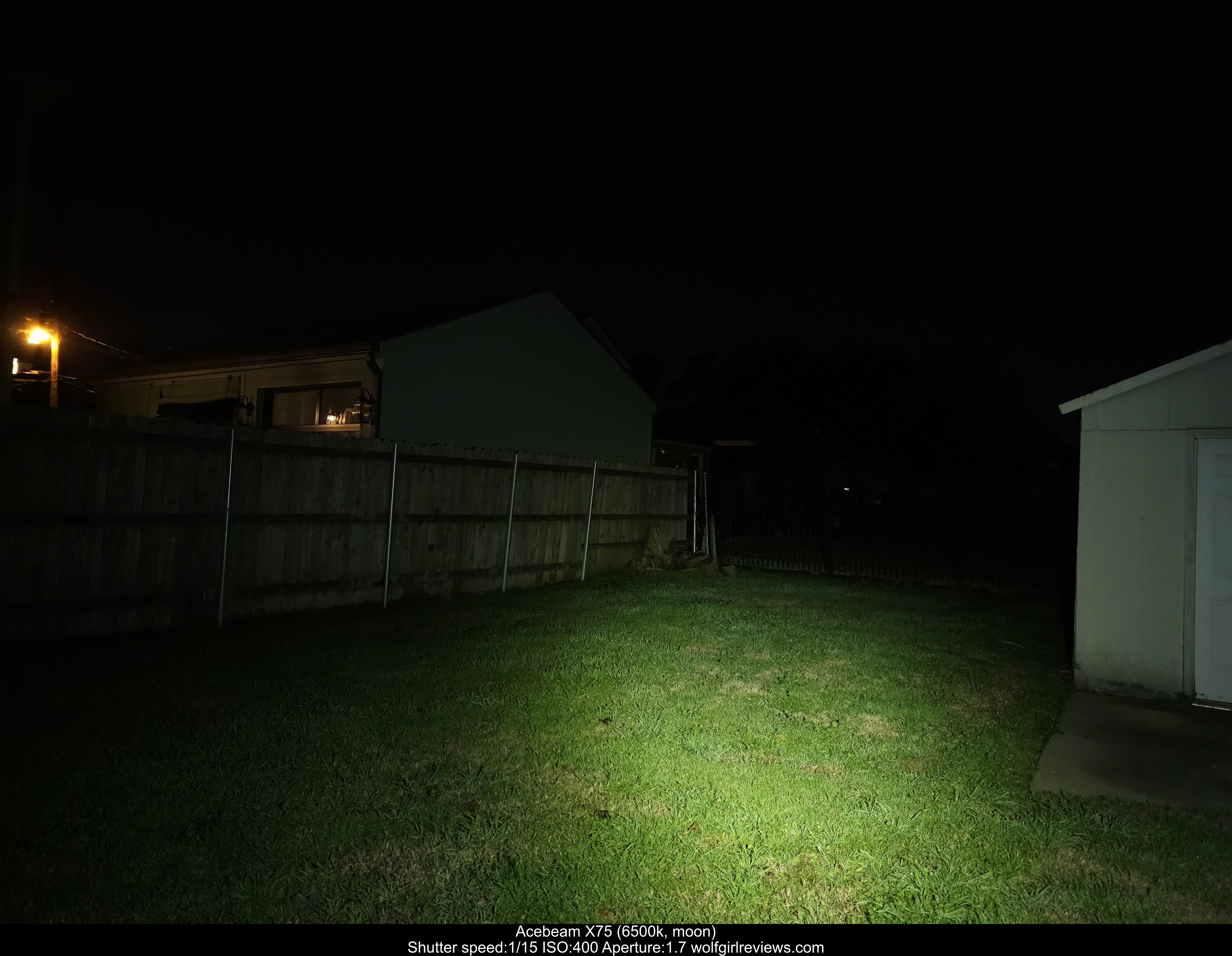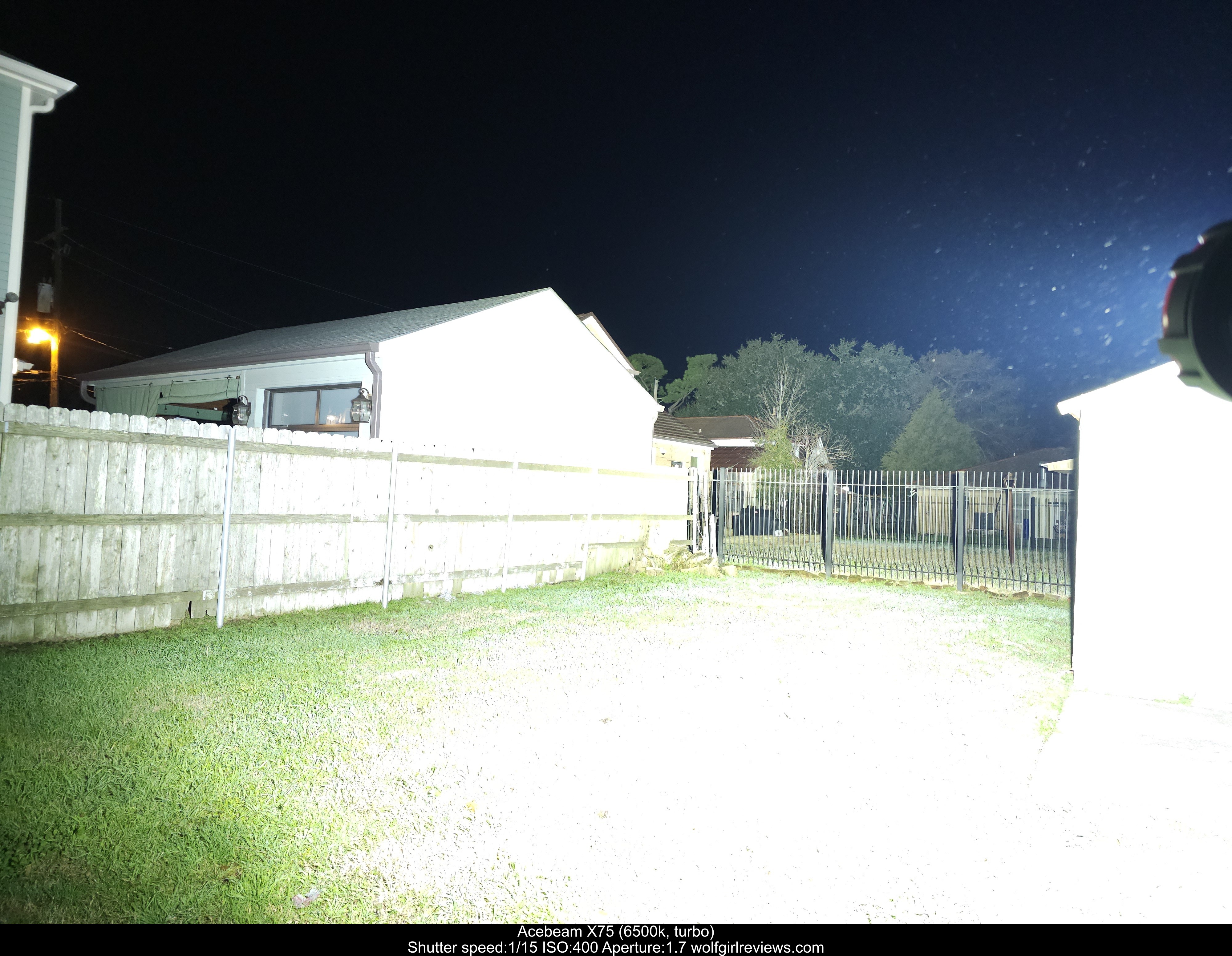"Time for something more representative of my actual collection, an enthusiast hotrod."
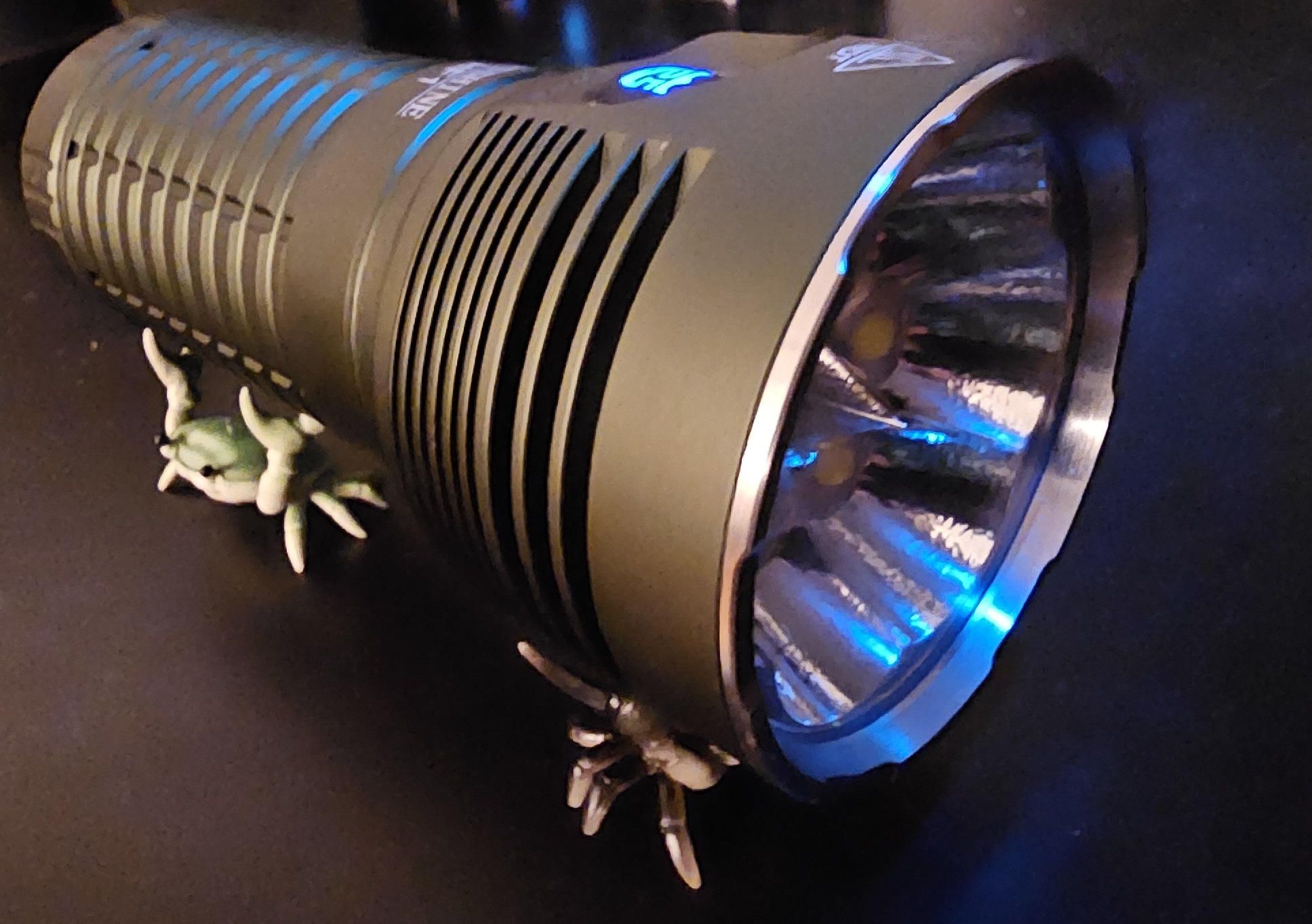 The Ripsshine HF1 is a high lumen flooder with active cooling and a large 46950 battery, with a maximum output spec of 20,000 lm.
The Ripsshine HF1 is a high lumen flooder with active cooling and a large 46950 battery, with a maximum output spec of 20,000 lm.
Introduction, Background, and Official Specs
Ripsshine is a relatively new brand which appeared recently. At the time of writing, they have a fairly broad selection of lights available including several keychain lights, small EDC size, a thrower, and the HF1, which could be said to be positioned as a flagship model. The HF1 is a large flooder comparable in specs and overall size to the Sofirn Q8 Plus or Lumintop GT3, although also incorporating active cooling, as well as a 46950 battery - these batteries are still relatively rare, but there have recently been several large lights released using 46950 and other similar extremely-large batteries.
Official specs:
| Parameter | Official Value | Measured |
|---|---|---|
| Output (turbo) | 20,000 lm / 10,000 lm / 3,000 lm | 17,100 lm - 4,710 lm - (N/A) |
| Runtime (turbo) | 90 seconds / 20 mins / 3 hours | See Performance |
| Output (high) | 10,900 lm / 5,000 lm | 8,890 lm / 3,900 lm |
| Runtime (high) | 20 mins / 3 hours | See Performance |
| Output (mid 2) | 5,150 lm | 4,330 lm |
| Runtime (mid 2) | 3.5 hours | See Performance |
| Output (mid 1) | 2000 lm | 1,720 lm |
| Runtime (mid 1) | 11.5 hours | See Performance |
| Output (low) | 800 lm | 642 lm |
| Runtime (low) | 25 hours | |
| Output (moon) | 5 lm | 2 lm |
| Runtime (moon) | 80 days | |
| Intensity | 70,225 cd | 81,750 cd |
| IP rating | IPX8 | |
| Weight (without battery) | 418 g | |
| Dimensions | 155x60x52.5 mm |
I was sent this light for free by Jason from Ripsshine in exchange for a review. I am not receiving any commission for sales, I do not receive any benefit from the discount code featured at the end of the review, and am giving my honest opinion without holding back on any negative experiences or overstating any positive.
First Impressions, Physical Design, and Build Quality
The HF1 comes in a relatively simple cardboard box, inside a foam insert that matches the shape of the light. Included in the box is an instruction manual in both English and Chinese, USB-A to C cable, lanyard ring, and a very long lanyard made out of paracord. My first impression of the HF1 was of its size - this is a very large light. The battery tube is the same diameter as a Sofirn Q8 Plus, although the HF1 has a wider head and is significantly longer. There is a 46950 battery contained inside the light, with a piece of kapton tape over the terminals. Note that this battery has both the positive and negative terminals on the same end, so it should be handled carefully.
Jason from Ripsshine told me that the light I was sent is a pre-production model and may have some imperfections, although I found the light overall to not have any noticeable defects. The HF1 is listed as available on AliExpress, although only appears to be in black, while mine is a medium green, so I am not sure if this green will be available in the production models. The anodisation appears well-done, with a consistent and smooth-feeling finish. The particular shade of green is very similar to the darker of the two green finishes that Hank uses on Emisar/Noctigon lights, or slightly lighter than Acebeam's.
The light has a steel bezel which is lightly crenelated, just enough to see that the light is on when headstanding but not enough to be a pocket shredder. The common "HOT" marking is engraved on the head below the bezel on the front, and on the back there is a threaded tripod mount - this is also where the lanyard ring attaches to. The area around it has been flattened off in a rectangular shape, possibly for use with a handle, although one was not included if so and not available to buy at the time of writing, and as detailed later in this review, the HF1 never gets hot enough to really need one. The curved shape at the very top of the head also means this does not provide any anti-roll protection, allowing a roll of nearly 180 degrees before stopping at the switch, and the weight means that it is possible to build up enough momentum to roll completely over the flat section and continue rolling if put down carelessly on an uneven surface. This is definitely not a light you want to fall on your foot.
The lens has a light green AR coating, and the emitters are six Cree XHP50.2, arranged in a circular pattern in a shallow orange peel reflector. The inside of the bezel on my sample does have a slightly rough texture, so I would be interested to know if this is the same on the production model, as the outside is much smoother and nicer feeling. The bezel is not glued, and comes out easily, a bonus for repairability and moddability.
The head also features a set of deep cooling fins, the top few of which are larger and serve purely for heatsinking, followed by several finer ones, between which are slots into the head for the fan's air intake. When the fan is running, air is drawn in through the middle part of the head, then out of both a slightly larger slot below the fins, and a series of holes around the bottom edge of the light. Ripsshine rate the HF1 as IPX8, which is rated to 1.5m of submersion for 30 minutes, so the fan is presumably waterproof. A second, much smaller cutout is present on the bottom edge of the head on the left hand side, where the USB-C port for integrate charging is located, covered by a fairly standard rubber flap. On the back of the driver there is a retaining ring that serves as the negative battery contact, and a round pad in the middle for the positive.
The front of the head has the switch, set into a deep cutout. I really like the design of the cutout - it provides roll protection without having raised edges that feel sharp or unexpected, and the overall shape makes it easy to index your finger or thumb on the switch while picking the HF1 up from a desk or pocket, and the gap from the switch to the edges feels about right, so even when not perfectly centres on the switch it is still easy to press. The switch itself has a medium firmness, needing a little deliberate force to press without being excessive, although the large surrounding cutout does relatively little to protect against accidental actuation, so this is a light I would definitely carry locked.
Below the switch are 4 green LEDs, which serve as a battery and charging indicator. The switch also has a set of red and blue LEDs in it - the blue LED is used as a locator and can be switched on or off, while the red seems to light up whenever the switch is pressed or the light is on, charging, or in powerbank mode, along with the battery indicator LEDs. These indicate the battery level from empty to full, from 4 LEDs down to one, and when the light is is LVP then the last LED flashes. The LEDs are on statically when the light is switched on, and when charging or supplying power to another device over USB-C, one LED blinks, and the others show the current state of charge.
The body tube is a single piece without any tailcap, and in fact does not even have a tail spring - there is a rubber spacer in the tail so the battery sits at the correct height for the driver as well as providing a small amount of cushioning. The body tube itself has a raised rectangular knurling pattern, a single o-ring, and long but wide threads. The entire body tube is anodised as there is no need to bring a battery negative to the driver. Due to this design, the HF1 can still be mechanically locked out by unscrewing the head, although I personally would recommend against using this as a method of lockout as I was able to run the light without the battery tube simply by placing the battery against the driver, so it is possible for the light to still be powered in this state if the battery ends up resting against the driver in the right way.
The HF1 is rated to IPX8, which should allow for brief immersion in water - I did not directly test this, but I did not notice any issues using the light in heavy rain. The battery tube has an o-ring, while the bezel does not but the lens appears to be glued to the reflector which presumably gives enough of a seal to keep water out.
The warranty is described in the user manual, with a period of 30 days for quality problems allowing a replacement or return/exchange, and 5 years for repair service - the exact scope of this is not described in detail but this usually refers to a repair for parts cost only.
Size Comparison
I took comparison photos of the HF1 as well as several other medium and large flooders and a selection of well-known smaller lights for reference.
- Wuben X1
- Sofirn SP36 Pro
- Noctigon M44
- Sofirn Q8 Plus
- Astrolux MF01X
- Haikelite HK08
- Nightwatch NS14
- Acebeam X75
- Sofirn LT1
- Noctigon KR4
- Convoy C8+
- Acebeam L19v2
User Interface
| State | Action | Effect |
|---|---|---|
| Off | 1C | On (mode memory) |
| Off | 1H | Moon |
| Off | 2C | Turbo |
| Off | 2H | Momentary turbo |
| Off | 3C | (no effect) |
| Off | 3H | Momentary strobe |
| Off | 4C | Lockout |
| Off | 4H | (no effect) |
| Off | 5C | Fan on/off (blinks once to confirm) |
| Off | 5H | (no effect) |
| Off | 6C | (no effect) |
| Off | 6H | (no effect) |
| Off | 7C | Switch LED on/off |
| Off | 10C | Autolock on/off (blinks once to confirm) |
| Lockout | 1H | Momentary moon |
| Lockout | 4C | Unlock (to off) |
| On | 1C | Off |
| On | 1H | Ramp brightness |
| On | 2C | Turbo |
| On | 3C | Switch ramp shape (smooth/stepped) |
| Moon | 1C | Off |
| Moon | 1H | On (to standard mode) |
| Moon | 2C | Strobe |
Reading through that table, you're probably thinking it looks a lot like Anduril. In my opinion, the user interface of this light was clearly heavily inspired by Anduril, and ends up as something of an oddity as a result. Most of the basic operations are the same as the common standard used both by Anduril and by other interfaces, but it is lacking most of the advanced configuration options available in even old versions of Anduril.
There is obviously some active control logic in the UI as to when the fan is switched on, as it always comes on when in turbo mode, but it also appears to be controlled by a thermal sensor - it does not automatically start when the light is in a mode below turbo, but can if the light gets hot enough while running. Overall, the fan control is in need of improvement, along with the thermal regulation, as when starting from turbo, the light drops extremely hard, to below the minimum level it dropped to when running without the fan, before climbing back up, and in addition, the fan would repeatedly switch on and off during the run, rather than being on all the time as might be expected when trying to get the maximum output possible from the light with turbo mode. More on that in performance.
Most of my negatives with the interface were small details, that could be improved in a future version. For example, the low and moonlight modes are very high - I measured 2 lm on moonlight, and 61 lm on low, although when discounting the high brightness in low, I did find the mode spacing was relatively good, and on the smooth ramp, the ramp manages a relatively good linear perceptual output with the perceived ramp speed only slowing down when close to turbo. Another is with the ramping control - the brightness is only rampable with 1H, while I kept trying to ramp with 2H from muscle memory as well. In addition, when releasing the button after ramping and rapidly pressing it again to reverse the direction, sometimes the second click fails to register unless you wait approximately half a second. This is particularly frustrating when combined with the stepped mode, as the time taken until the initial step changes is longer than I would have liked to see. In general the UI has this slight feeling of slowness, with things like confirmation blinks being on for what is in my opinion too long, making the interface feel a little more like very old versions of anduril and not as snappy as newer versions.
One break from anduril that I think will be universally considered a negative is the moon mode - it is a separate hidden mode that can only be accessed from off, and while I find it more frustrating when you can not exit moon mode without switching the light off, it is still a negative that you can not ramp the HF1 directly all the way down to its lowest output. The ramp is reasonably smooth perceptually, but does lack resolution in the lower modes, and with only six modes on the stepped ramp including moon and turbo, level spacing is reasonable, although ideally, I would have liked to see an additional stepped mode at 100-200 lm, as the jump from moon to low is from 5lm to 800lm spec which is excessively large.
One good decision that was made, is that strobe is relatively well hidden, being hard to accidentally activate, but still reasonably easy if needed. Many non-anduril interfaces have strobe on 3C, which I am not a big fan of as it makes strobe too easy to accidentally activate, especially if attempting to use a lockout feature. Momentary strobe from off might not fit everyone's use case, but I feel like I prefer it as it means if it is accidentally activated, there is less difficulty in stopping it when you may have just disoriented yourself, and I rarely ever use strobe for any extended time.
Overall, I think that some effort has clearly been made with the interface, it is much better than the interfaces that other manufacturers have been putting on similar lights recently. and the only thing that makes the light difficult or frustrating to use is the delay after ramping up or down where a new button action will be ignored, but it would be interesting to see an Anduril version of the HF1, as my guess is that Ripsshine saw Anduril as a good concept to base the interface on, but were unable to implement directly, possibly due to the active fan control - this is something that I have seen many times, where manufacturers are interested in using Anduril but do not due to a small issue that could have been resolved with better community involvement, and this is something we as users should work towards improving. I feel that the world needs more Anduril hotrods, so I would definitely be interested in helping get that working, since Jason seems interested in engaging with the enthusiast community, as I would be very happy to see an Anduril version in the future.
| What it gets right | What it gets wrong |
|---|---|
| Smooth and stepped ramping | Very high low/moon levels |
| Strobe is accessible without being easy to accidentally enter | Moonlight is a separate mode and can not be returned to from ramp mode without switching the light off |
| Common shortcuts such as 4C for lockout and 2C for turbo | Poor thermal regulation and fan control |
Using the Light
The HF1 has the same tube diameter as other 3x21700 lights, being the same as Sofirn Q8 Plus, Acebeam X75, or Astrolux MF01X. Overall, it fits well in the palm of a hand, and the battery tube provides sufficient grip and the recess in the head enough space that I was able to carry and use it wearing gloves without any problem. When the fan is on, air is drawn in through the upper cooling fins, and exhausted both through a slightly larger slot below them. There is also a series of holes around the bottom of the head that appear to be linked to the active cooling system, but the volume of air through them was very low, so possibly they are designed for more pressure relief - I was wondering if this light was going to double as a handwarmer, but I mostly feel heat in my hand through conduction and not from the airflow.
The HF1 is a large light, and the 46950 battery makes it very heavy. While it can be carried in a pocket, this is impractical with all but the largest trouser pockets, and even many jacket pockets. Overall, this is probably a light that will either be carried in the hand, or kept put away in a bag when not in active use, although I have carried mine a few times in a large purse.
Overall, this light is definitely a flooder, although the high output also gives this more than enough throw for most general walking use (although if you turbo it, it is definitely not a subtle light, with the very floody beam pattern and the fan), and the large battery capacity makes it practical for extended use, combined with a relatively stable regulated output on the lower modes. In general, if you don't mind the size and weight, this is an excellent walking light, and also has utility there with the powerbank mode, allowing a full charge of a phone and still having usable capacity for light, although the weight may discourage some people from extended carry.
The light has some strange thermal regulation and fan control, which I will go over more detail in Performance Overview.
Driver and Emitters
The emitters are 6 Cree XHP50.2 in 5700k, arranged in a circle inside a shallow orange peel reflector. Compared to the common enthusiast favourite big flooder that is the Sofirn Q8 Plus, the reflector is wider and shallower, and the aperture around each emitter is significantly larger - the reflector would also be compatible with 7070 footprint LEDs, while the holes in the Q8 Plus reflector are more tightly fitted to the LED package.
There is some tint shift evident in the beam, especially at lower levels, although it reduces at higher levels somewhat. This takes the form of a few lines and other artifacts in the spill, a yellow corona around the hotspot, and yellow at the edge of the spill's cutoff, which has the characteristic flower petal effect commonly associated with multi-emitter reflectors. Overall, the beam is still definitely usable for its intended purpose, and not distracting or ugly in actual real-world use outside at a medium distance, although certainly not my first choice for white wall hunting.
Jason from Ripsshine has stated that the LEDs are the 3V version of the XHP50.2, and that the driver is a constant-current driver, which would imply the use of a linear regulator. Overall, I found the regulation to be stable, with only a very small reduction in output as battery voltage dropped.
I measured the LEDs' CCT and CRI with a Colormunki Photo and ArgyllCMS. In general, other than the tint shift that is evident, it appears that Ripsshine has used a relatively good bin of XHP50, with neutral DUV on lower levels that becomes slightly negative on turbo, although I can not guarantee that every HF1 will have the same result.
CRI and tint
Power and Charging
The HF1 has a USB-C port built into the head. The charging circuit is capable of C-C charging, as well as using higher voltages with USB PD - given the battery's huge size, a standard 5V charge is extremely slow, but is possible.
In addition, there is a powerbank mode, which was able to charge each device I tested it with (several phones, a pair of headphones, a powerbank, and an 18650 battery via a USB-C powered charger). In each case, PD compatible devices were able to negotiate a high charging rate, and C-C charging worked without any problems, negotiating USB-PD successfully. Charging data was collected using rd-usb with an RDTech TC66C (info, Amazon (US, affiliate link), Amazon (US, non-affiliate).
When the HF1 entered LVP mode, the battery level was at around 2.9V, and when charging terminated, I measured 4.16V +/- 0.05V directly at the battery terminals.
Moddability
The HF1's bezel is not glued and can be easily removed. The bezel is easy to remove, providing access to the LEDs, although the glass lens appears to be glued to the outer edge of the reflector, making removal here a little more difficult, but overall, an emitter swap is reasonably plausible as a mod.
The driver is held in by a retaining ring removable with needle nose pliers or a filter wrench.
Performance
All lumen measurements taken using a 4.5 inch Texas Ace lumen tube. Candela measurements were performed indoors at a distance of 5m, using a UNI-T UT383BT.
Runtime tests were performed using the lumen tube's HS1010A luxmeter, which the tube is calibrated for, with data recorded via taking a video, exporting the individual frames using ffmpeg, and parsing the value on the luxmeter's display at the appropriate frame for each measurement. I logged the value every second for the first 90 seconds, then every 5 seconds up to 30 minutes, then every 30 seconds afterwards.
Specs
Official output spec is 20,000 lm, and candela spec is 70,225 cd. For the higher levels, specs are quoted with a runtime at each output level for multiple output levels. As such, for the comparison table, I have used the measured data point at each given runtime breakpoint for my measurements as to output spec. The actual output level fluctuated within a wide range, so for the runtime spec, I have used the point in time after which the light did not go back above each stated runtime breakpoint, in addition to an extra value for when the light stopped producing a usable output, with a drop to approximately 300 lm. Specs were not given separately for the fan being both on and off, so I have used the data with the fan on.
Note that testing lights is my hobby, and most of my equipment is designed and calibrated to be accurate at lower outputs than the HF1 is capable of, and at the higher ranges of these tests, a margin of error of +/- 10-15% is acceptable.
| Measurement | Spec | Measured | |
|---|---|---|---|
| Turbo | 20,000 lm - 10,000 lm - 3,000 lm | 17,100 lm - 4,710 lm* - 306 lm | |
| Turbo (runtime) | 40 seconds (20,000 lm) - 3 mins (> 10,000 lm) - 4 hours (>3,000 lm) | <1 second (maximum) - 1 minute 12 seconds (10,000 lm)** - 2 hours 56 minutes (3,000 lm)** - 4 hours 51 minutes (>1 lm) | |
| High | 10,900 lm - 5,000 lm | 8,890 lm - 3,900 lm | |
| High | 20 minutes (10,900 lm) - 3 hours (5,000 lm) | (N/A) - 20 mins (>5,000 lm)** - 5 hours 7 mins (>1 lm) | |
| Mid 2 | 5,150 lm - 3000 lm | 4,330 lm - 4,030 lm | |
| Mid 2 (runtime) | 25 minutes (5,150 lm) - 5 hours 10 minutes (3,000 lm) | (N/A) - (N/A) - 7 hours 59 minutes (>1 lm) | |
| Mid 1 | 2,000 lm | 1,715 lm | |
| Mid 1 | 11.5 hours | (not tested) | |
| Low | 800 lm | 640 lm | |
| Low (runtime) | 25 hours | (not tested) | |
| Moon | 5 lm | 2 lm | |
| Moon (runtime) | 80 days | (not tested) |
I will go into more detail on the thermal regulation as well as runtime specs later in the review as there are several complicating factors here, but it is worth noting that the output, particularly on the highest levels, is somewhat unstable and fluctuates within a wider range than most lights. With this in mind:
* This measurement was affected by the deep thermal stepdown before the output started to ramp back up.
** For specified runtimes linked to an output figure, I used the point at which the output dropped below this figure and did not return to above it.
Output and Throw
| Mode | Peak output | Output after 30s | Output after 1 minute | Output after 90s | Output after 5 minutes | Output after 15 minutes |
|---|---|---|---|---|---|---|
| Turbo (fan) | 17,030 lm | 15,110 lm | 13,150 lm | 2,890 lm | 4,610 lm | 6,690 lm |
| Turbo (no fan) | 17,160 lm | 4,470 lm | 4,480 lm | 4,470 lm | 4,430 lm | 3,080 lm |
| High (fan) | 8,820 lm | 8,820 lm | 8,100 lm | 8,000 lm | 5,550 lm | 6,670 lm |
| High (no fan) | 8,910 lm | 8,530 lm | 8,360 lm | 8,260 lm | 5,510 lm | 2,590 lm |
| Mid 2 (fan) | 4,260 lm | 4,200 lm | 4,180 lm | 4,160 lm | 4,110 lm | 4,010 lm |
| Mid 2 (no fan) | 4,330 lm | 4,310 lm | 4,300 lm | 4,280 lm | 4,230 lm | 3,400 lm |
| Mid 1 | 1,720 lm | 1,708 lm | 1,704 lm | 1,705 lm | 1,696 lm | 1,687 lm |
| Low | 642 lm | 634 lm | 632 lm | 631 lm | 629 lm | 627 lm |
| Moon | 2 lm | 2 lm | 2 lm | 2 lm | 2 lm | 2 lm |
| Mode | Peak candela | Candela after 30s | Candela after 1 minute | Candela after 5 minutes |
|---|---|---|---|---|
| Turbo (fan) | 81,750 cd (571.8 m, 116.4% of spec) | 48,800 cd (441.8 m, 69.4% of spec) | 48,400 cd (440 m, 68.9% of spec) | 41,300 cd (406 m) |
Runtime
Runtime is calculated here as the time from startup until the light steps down to <1 lm moon mode.
| Mode | Runtime |
|---|---|
| Turbo (fan) | 2 hours 56 mins |
| Turbo (no fan) | 6 hours 23 mins |
| High (fan) | 2 hours 57 mins |
| High (no fan) | 5 hours 38 mins |
| Mid 2 (fan) | 3 hours 46 mins |
Performance Overview
The HF1 performs acceptably compared to specs when given a 15% margin of error, reaching an instant peak at power on of 17,100 lm, although exhibits some very strange fan control. As long as the fan is enabled, it will always activate when turbo mode is first activated, but after this, it appears to activate based on a temperature reading, and will cut off when the light is under a set temperature, resulting in some relatively deep fluctuations in output level as well as the fan overall spending only roughly half the time running. In addition, the actual thermal regulation of output based on temperature has a few issues - running from turbo with the fan on resulted in a slower initial step down from turbo level, but then an extremely sharp drop to approximately 1900 lm before ramping back up, while the fan cut off during the initial ramp up, then reactivated when peak temperature had been his just as the light started to ramp down again. In comparison, turbo without the fan resulted in a sharper and much more immediate drop, but only to approximately 4200 lm, followed by a stable output from there. As the battery drains, this same fan control continues to repeat, with the fan coming on as the light starts to throttle down thermally, followed by a ramp back up to the sustainable level, at which point the fan cuts out again. Over time as the battery voltage drops lower, the dips in output became deeper, before output eventually dropped to around 300 lm, at which point it continues to run for over two hours before finally dropping to less than 1lm.
The same pattern of thermal regulation is seen on both High and Mid 2 modes, although without the fan initially running, resulting again a sharper drop with the fan enabled, although this time is is both higher in its minimum at around 5000 lm, and shorter in duration before ramping back up. My experience from testing the performance of the HF1 is that the thermal regulation and the fan control have very little actual cooperation, and each appears to be doing is own thing independently of the other, which causes some negative effects compared to if both were part of a more integrated thermal regulation system.
I left one test running on the ~1 lm LVP mode for at least 4 hours with no sign of stopping - I feel that 80 days is at least reasonable as a spec for low runtime given the battery capacity, and far beyond what I can comfortably test - in any case, I would feel confident in saying that the HF1 gives usable light for a long time even when in LVP.
The fan did not start when testing on Mid 1 or below. I also noticed that on average, initial turbo was very slightly lower - I did a few extra tests from a fully charged battery and found that although this difference was within a relatively small margin, it was always lower using the fan, which makes me feel that the likely cause is the additional voltage drop of the fan itself slightly lowering the power available to the LEDs - overall, the HF1's performance seems likely battery-limited. It would be possible to create a carrier for 3 21700 cells which would fit inside the HF1's body tube, and based on my data here, I think it has excellent potential with some better thermal regulation.
The HF1 has relatively good regulation on lower modes, with only a small drop in output during periods of thermal stability, although in practice the output tends to fluctuate away from thermal stability due to the thermal regulation, particularly with the fan on. The dip in output after the initial turbo is very noticeable, and occurs before the light feels significantly hot in my hand - overall, temperatures remained comfortable through testing.
One thing to note is that runtimes were all over the place, as a result of the thermal regulation and fan control. A longer runtime without the fan is expected due to the fan allowing a higher output for longer as well as its own drain, but in some cases, using a lower mode resulted in a shorter runtime than a higher one (e.g. High vs Turbo) as the light was able to hold its output more consistently at the higher end of the range it fluctuated within.
Beamshots
Lights used:
- Ripsshine HF1 (17,030 lm measured by me)
- Noctigon M44 (519A 2700k/5700k tint ramp, 200% mode, 8,150 lm measured by me)
- Haikelite MT09R (modded with driver swap and spring bypass, 19,500 lm measured by me)
- Sofirn Q8 Plus (with hand-picked Molicel P45B, 21,700 lm measured by me)
- Wuben X1 (~10,000 lm - 10,103 lm measured by 1lumen)
- Sofirn SP36 Pro (5000k, 5,800 lm measured by me)
- Astrolux MF01X (14,800 lm measured by me)
- Nightwatch NS14 (31,800 lm measured by me)
- Acebeam X75 (~73,000 - 641 lm depending on mode, as measured by 1lumen)
HF1
Comparison Beamshots
Competitors
Sofirn Q8 Plus: The classic high lumen soda can light. If you've been around enthusiast lights for an appreciable length of time, you have likely seen the Q8 Plus discussed, and many people, myself included, consider it the standard benchmark of a high lumen flooder. The Q8 Plus has the same LED configuration as the HF1, with six XHP50.2 in a shallow orange peel reflector (although the Q8 Plus is available in 6500k or 5000k, while the HF1 is 5700k), with the 6500k version of the Q8 Plus making approximately 16,000 lm with the bundled batteries, or over 20,000 with Molicel P45B (in my own Q8 Plus, I run Molicel P45B that I hand-selected for the lowest internal resistance out of a purchased batch, and tested the light at 21,700 lm at power on with a full charge).
While there is no active cooling, anduril has better thermal regulation, and the high thermal mass combined with PID thermal regulation allows the Q8 Plus to hold turbo longer before stepping down even with default thermal limits, and anduril allows configuration to set a higher thermal limit if desired for an even longer initial turbo and a higher sustainable level. Battery capacity is somewhat smaller than the HF1's 46950, but likely sufficient for most uses, with 3 21700 cells in parallel. Both lights have USB-C charging with powerbank functionality, but the Q8 plus has the advantage that if extended use is desired, a spare set of cells can be carried and swapped into the light. When not at the highest levels, the Q8 Plus has inferior regulation to the HF1, using 3x7135 for lower levels while the HF1 appears to use a linear regulator. The Q8 Plus' reflector shows less tint shift than the HF1's, and should be slightly throwier given the same lumen output, although in real world use I don't find there is much of a difference between their beam profiles when both are at a comparable output level.
Wuben X1: The Wuben X1 is the smallest actively cooled high output flooder, reaching approximately 10,000 lm. Compared to the HF1, fan control and thermal regulation are significantly better, with the X1 holding turbo for over 30 seconds before starting to step down. Other than a lower maximum output, in my opinion the X1 is primarily let down by its overly-simplistic user interface, and low battery capacity for a "jacket pocket" size class light, using only two 21700 cells in series. USB charging is again included, and similarly to the HF1, is effectively the only way to charge the batteries - they can be removed from the X1, but this involves the use of tools, and in general the design and documentation of the X1 suggest that the batteries should not be removed, and normally this is something that most owners only do when the batteries are starting to show their age and lose capacity. I would also consider the X1 significantly lower value for money at full price, although it also seems to go on sale relatively frequently.
Lumintop Mach: I do not own a Lumintop Mach, so this overview is based primarily on 1lumen's review. The Mach has a higher absolute output and is available in two versions, one with a 46950 cell, and one with 3x21700 in parallel, providing a lower capacity but potentially higher performance, as well as being more future-proof - 21700 cells are unlikely to die out, while the current situation with 26800 and 26650 cells shows that adopting a less popular battery format can be a risk. In my opinion, the user interface is a negative for both the Mach and HF1, and both lights would be significantly improved by running Anduril, and while I have not tried out the Mach myself, in general I find Lumintop's non-Anduril lights to have relatively poor user interfaces, while the HF1 is potentially slightly better as it feels more similar to lights running very old Anduril versions, although still missing a few features. The Mach does have better thermal regulation and a more stable output level, with shorter overall runtimes.
Sofirn IF30: Another light I do not own, this overview is primarily based on ZeroAir's review. The IF30 has less stable regulation, a smaller large format cell (36950) with shorter runtimes and lower output (~8500 lm peak), and a flood/throw LED configuration. Among large cell lights, the selling points of the IF30 are the separate LED sets and the price point, being available under $100. Again, as something of a theme among these lights, the user interface is a weak point - the IF30 has the least traditional interface of these lights, with a rotary switch, and in general a lack of configurability - in particular, something I know some people find a dealbreaker with this light is that it automatically locks after only 15 seconds, similarly to some Olights and this can not be configured or disabled in any way.
Final Thoughts and Score
| Category | Score | Comments |
|---|---|---|
| Looks | 8/10 | There's not much about the HF1 that catches the eye instantly other than its size. I would say that visually, it possibly takes some styling cues from Emisar as well as the Lumintop Mach with the deep cooling fins in the head, as well as the Sofirn Q8 Plus in the knurling on the battery tube. The USB port is kept out of immediate sight fairly well, and in my opinion the switch LED is bright enough to be visible in a dark room or bag without being enough to disturb my sleep when kept on a bedside table. The battery indicator LEDs below the switch are similarly well implemented, although an option to switch them off might have been nice. Despite my example being a pre-production version, I found the quality of the finish to be excellent, and after carrying it and extensive testing it had only developed one small chip on the edge of the tailcap and another on the raised edge of the switch surround. The crenelated bezel is well designed and allows seeing if the light is on when headstanding, something I appreciate, without being excessive enough that I would hesitate to take it through airport security. |
| Quality | 8/10 | The light is heavy even with the battery removed, and feels well-constructed, with relatively thick aluminium used through the head and body tube. The threads are of average length, and well cut with a smooth feel without excessive grittiness. They came lightly lubricated, although with some thicker lubricant than I personally prefer, but there was no roughness or excessive resistance from them. In any case, this is likely not a light most people will be opening much due to the battery format. The glass lens and its green AR coating held up to carry without any scratches, and the fan is reliable and consistent when it does activate. |
| User interface | 6/10 | I found the user interface hard to give a score. I much prefer it over other common proprietary interfaces found on large flooders, being clearly heavily inspired by Anduril, but at the same time, using the light actively with lots of changes of output level made the UI feel sluggish, in particular when attempting to reverse ramp direction or any other actions such as using turbo or switching ramp shape directly after changing output level. I do appreciate any configurability, and having the option to toggle both the switch LED and automatic lockout separately is a bonus, although configuration of the lockout timer would have been nice. Ultimately, the user interface loses some points for the unstable thermal regulation and fan control, which in some use cases almost appeared to be fighting each other, with the fan's activity having little direct relevance to the light's output. If these issues were solved, I would be happy to give it an 8/10. |
| Performance (absolute) | 7/10 | I measured just over 17,000 lm on turbo. Given the quality of my measuring equipment and that it is calibrated primarily for high hundreds to low thousands of lumens, this is close enough to spec - professional integrating spheres start at $10,000 or so and my lumen tube costs approximately $250. The HF1 certainly performs when required, although if you are using it for a medium timeframe then you should be aware of the very sharp output drop from turbo with the fan in use. |
| Performance (sustained) | 7/10 | This was another difficult category to score. Overall, the HF1 has very good regulation for a constant-current driver, with a relatively shallow drop in output presumably due to voltage sag from the battery, but when using the highest modes, the output tends to fluctuate across a wide range (over 1000 lm in many cases) which is definitely noticeable to the user. When using the light on a lower setting, it provides a relatively stable output for very long runtimes. The HF1 would score significantly higher in this category if the thermal regulation and fan control were improved. |
| Moddability | 6/10 | Average - emitters could be swapped, while the complexity of the head with the fan complicates other mods or further disassembly. One thing that might be nice to see would be a way to fit 3x21700 in the body tube, which physically fit but would need a carrier designed to fit for them to actually be usable. |
| Practicality | 8/10 | Obviously, this isn't an EDC light, it's one for extended use, which it excels at - it is on the heavy side even compared to other similarly sized lights, but this is offset by the battery capacity. In general, I rarely charge my phone from a light, preferring to carry a dedicated powerbank if I may be away from a source of power for an extended time, but the HF1's battery capacity and good regulation on low modes, combined with an LVP mode that will still run for many hours even when the battery is close to depleted (more time than I was able to reasonably test), I would consider it a good choice for walking where it can serve as an emergency powerbank if necessary even after a few hours of use on a low mode. The built in charging is reasonably quick without being excessively hard on the battery (as I do have some doubts about the quality of 46950 batteries, being a relatively new format with few suppliers), which is important since there are no dedicated external chargers that exist for this battery format. Again, this score would be higher if there was an option to use standard battery formats as well with an adapter. |
| Value | 7/10 | At the time of writing, the HF1 is available for $200. This is relatively high for the absolute performance figures, but also places it in a space with relatively few other competitors, most falling either closer to $100 or $300. Of the large cell lights currently available, the HF1 would be my choice over competing offerings from Sofirn or Lumintop. |
| Fun | 8/10 | The steep stepdown from turbo can be avoided when the light is in your hand and actively controlled, and in general the ergonomics make it easy to carry, so it definitely has a high fun factor inherent in any large flooder, and the fan can be a bonus here since many non-enthusiasts would never expect a medium-sized light to be powerful enough to feature active cooling. |
| Overall | 7/10 | Many of the issues with the HF1 relate to the firmware, and the light itself is well designed both physically and in terms of the driver. Although $200 is expensive compared to some other competing lights, it is more reasonable specifically for a light using one of the new large-format cells, and the HF1 significantly outperforms lower priced lights using them such as the HF30. If you were only going to get one large cell light, I'd probably suggest the HF1 over some of the higher priced options such as the Lumintop Mach. |
The Ripsshine HF1 is available from Ripsshine's official AliExpress store - prices on AE tend to vary but at the time of writing I have observed it between $200 and $220. In addition, Jason has provided a coupon code for $76 off, BLFHF1, valid for one month.
I know it's been a long wait for this review since my last one, primarily due to things demanding my attention outside the world of lights, in addition to just too many projects needing my attention at once. Hopefully it was worth the wait. As always, feedback is welcome - I am active on BLF or Reddit, both on /r/flashlight and other specific subreddits, and have started my own subreddit for review content at /r/WolfgirlReviews.
>> Home